Frank F. Weber's Blog, page 11
April 13, 2020
The Unicorn Killer and Coronavirus Myths
Every Tuesday in April, Frank Weber will be presenting a free Facebook live chat on one of his novels from 7:00-7:30 p.m. central time.
Make sure you are following Frank on Facebook! Click here to visit his Facebook page.
You can listen and ask questions from the safety of your home. Please join him live to get forensic questions answered and share any thoughts about his True Crime mysteries.
*Win a chance to be a True Crime Star! During the 4 weeks of presentations, people who make comments during the presentation will have their name put into a drawing with the winner receiving 1 of 3 choices. I will either use your name as a character, have you make a brief appearance, or use your business name somewhere in the book. You can gift this award to a friend if you wish.
April 14: The I-94 Murders




 The cover shot was taken by Trisha Spencer of Alicia Isom along Highway 94 close to St. Cloud. Alicia Isom is in all the pictures below but last. Elise Yates is holding the guitar. Do you remember what Sonia witnessed on the steps at the beginning, and her walking through a field east of Buckman toward the end? Or how about Serena at the very end? The Unicorn Killer:
The cover shot was taken by Trisha Spencer of Alicia Isom along Highway 94 close to St. Cloud. Alicia Isom is in all the pictures below but last. Elise Yates is holding the guitar. Do you remember what Sonia witnessed on the steps at the beginning, and her walking through a field east of Buckman toward the end? Or how about Serena at the very end? The Unicorn Killer:
Holly Maddux was raised by an authoritarian patriarchal father in Tyler, Texas. She was described as a free spirit. In 1965, at age 18, she leaves Tyler to attend Bryn Mawr college in Philadelphia. She became involved in protests against the Vietnam war.
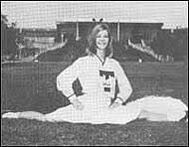

 In 1972 she meets Ira “the Unicorn” Einhorn, and falls in love with his ideals. Ira claimed to be the founder of earth day. Holly left Ira a couple times due to his private outbursts of anger. After 5 years, she goes to a friend’s beach house on Fire Island, an upscale part of Long Beach. On this secluded island she’s introduced to a wealthy man, Saul Lapidus, and then Holly disappeared. Holly remained in regular phone contact with her family up to her disappearance.
In 1972 she meets Ira “the Unicorn” Einhorn, and falls in love with his ideals. Ira claimed to be the founder of earth day. Holly left Ira a couple times due to his private outbursts of anger. After 5 years, she goes to a friend’s beach house on Fire Island, an upscale part of Long Beach. On this secluded island she’s introduced to a wealthy man, Saul Lapidus, and then Holly disappeared. Holly remained in regular phone contact with her family up to her disappearance.
The family hires retired FBI agent Bob Stevens from Tyler, Texas, to find their daughter. Ira Einhorn tells the family Holly is seeing a new man. Einhorn tells Stevens Holly went to the food coop and never returned. When Stevens' cohort, J.R. Pierce, confronts Einhorn, he tells him Holly moved to a commune in California. Einhorn has a teaching fellowship at Harvard University at the time. Pierce finds Saul Lapidus. Saul stated when he was with Holly, Ira called and threatened to throw all of her belongings away. She told Saul, “I’m going to calm Ira down and come back.” Saul is the initial suspect, until he volunteers to take a polygraph examination and passes. The police get a search warrant for Ira Einhorn’s apartment. The closet is bolted shut and Ira claims he doesn’t have the key. Investigators cut it open with a bolt cutter and find Holly’s pocketbook, including her driver’s license. Then they find Holly’s body in a trunk in the bottom of the closet. Ira Einhorn is charged with murder.
Pierce finds Saul Lapidus. Saul stated when he was with Holly, Ira called and threatened to throw all of her belongings away. She told Saul, “I’m going to calm Ira down and come back.” Saul is the initial suspect, until he volunteers to take a polygraph examination and passes. The police get a search warrant for Ira Einhorn’s apartment. The closet is bolted shut and Ira claims he doesn’t have the key. Investigators cut it open with a bolt cutter and find Holly’s pocketbook, including her driver’s license. Then they find Holly’s body in a trunk in the bottom of the closet. Ira Einhorn is charged with murder.
Ira Einhorn is hypocrite and a narcissist. It was more important to Einhorn to be “the star” than to make the world better. At times Einhorn would have friends give Holly a ride home from a party, as he planned on leaving with someone else. Holly came to realize Einhorn wasn’t the ideology she fell in love with. Ira Einhorn has a public persona of being an advocate of nonviolence. However, investigators read Einhorn’s disturbing diary. Einhorn’s diary reveals the joy he felt in beating a woman, and the pleasure he received from killing someone he loved. He had apparently beat Holly on numerous occasions.
Ira Einhorn argues publicly that his arrest was a set-up for his anti-war protests. Einhorn publicly claims the CIA is setting him up as he was about to expose their “mind-controlling” tactics. Prominent attorney, Arlin Spector, steps forth to defend him. Ira Einhorn, the self-proclaimed “Unicorn,” has a celebrity status and prominent individuals, including politicians and ministers, testify on how he is a wonderful person. Einhorn is released before his pending trial, after paying only $4000 bail. The courthouse erupts in cheers. The prosecutor tries to point out that Einhorn frequently leaves the country and is a flight risk.
Einhorn jumps bail and flees the country in 1981. He disappears for 16 years. Ira is smart and he has friends with deep pockets. Investigators eventually find Einhorn in Ireland, but they won’t extradite him. Holly’s dad, Fred, committed suicide in 1988 after struggling with a terminal illness. Her mom, Elizabeth, died one year later, leaving Holly’s younger minor siblings without parents and their oldest sibling. The investigators try Ira Einhorn for the murder of Holly Maddux in absentia, which you can do if a person intentionally fled to avoid prosecution. Einhorn is convicted of murder. Barbra Braufman, a wealthy woman in Canada, admits to the FBI she had been bankrolling Einhorn’s life. After receiving new information on Einhorn, she has now come to believe Einhorn is an angry killer. Braufman reveals that Einhorn is in a relationship with Annika Flodin.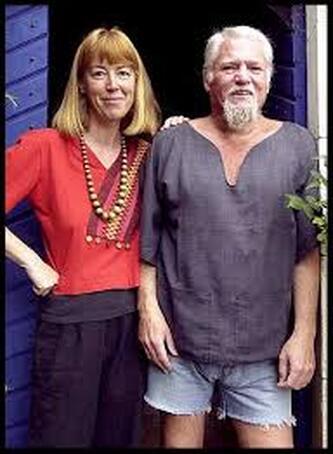
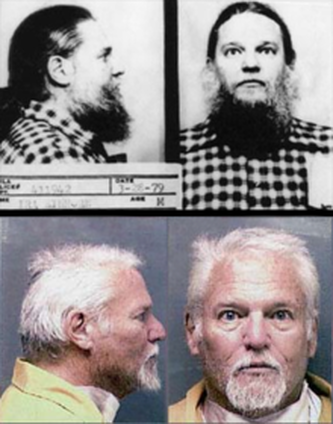 After 16 years the FBI works with the French government performing surveillance and they find and arrest Einhorn. However, France refuses to extradite him feeling he has been unfairly convicted, since he wasn’t at the trial to defend himself. Instead, of turning him over, they set him free.
After 16 years the FBI works with the French government performing surveillance and they find and arrest Einhorn. However, France refuses to extradite him feeling he has been unfairly convicted, since he wasn’t at the trial to defend himself. Instead, of turning him over, they set him free.
The Maddux family doesn’t give up. They request that Einhorn’s conviction be set aside, and that instead he be given a new trial. France no longer has a reason to protect him. This time the public sees the evidence, without being snowballed by all of his propaganda. Two former lovers of Einhorn testify they ended up in the hospital after trying to break off relationships with Einhorn. One was nearly strangled; the other had a Coke bottle smashed over her head. Even though Einhorn had the public embodiment of peace and love, in private he was an abusive monster. Ira Einhorn is sentenced to life in prison without the possibility of parole.
The Maddux family passes on this cautionary tale: Domestic violence happens in highly educated families as well as illiterate families. Friends of Einhorn look back and admit they made so many exceptions for Ira, because he was a “star.” Looking back, he only cared about himself. Holly Maddux was vulnerable to an abusive relationship, having been raised in a father dominant family. God Bless Holly Maddux: 1947-1977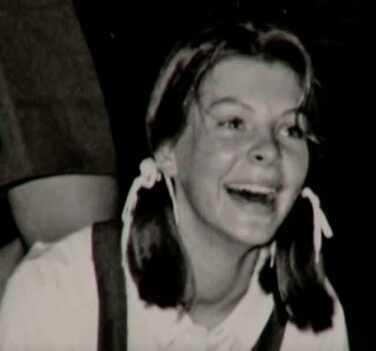 Coronavirus myths:
Coronavirus myths:
Myth: Schweppes or Fever-Tree tonic water can treat the Coronavirus
THE FACTS: Medical experts say as of now there is no proven medication or home remedy that can cure coronavirus. Posts circulating on Facebook and Twitter suggest that drinking tonic water from Schweppes or Fever-Tree can treat the coronavirus because the drinks contain quinine. Quinine is a compound found in the bark of the Cinchona tree and has been used to treat malaria. “I would not encourage anyone to drink tonic water to prevent or treat covid at all,” said Dr. Michael Angarone, assistant professor of infectious diseases at Northwestern University Feinberg School of Medicine. Experts say there is no scientific evidence that quinine would have any impact if used in this way. The concentration used for medical use is different from the concentration of quinine used in soft drinks.
Myth: Maps show a correlation between confirmed COVID-19 cases and locations where 5G wireless service has been installed. (Sociologists: This is what we call a spurious correlation.)
THE FACTS: There’s no evidence that 5G, fifth generation wireless, is related to or causes COVID-19. Photos of two maps placed side by side are being used on social media to suggest they show a correlation between 5G networks and coronavirus hot spots. One map claims to show where confirmed coronavirus cases are located in the U.S., while the other map claims to show where 5G technology was installed. Both are highlighted around population centers. “There is absolutely no connection between COVID-19 and the 5G cellular service,” professor Myrtill Simkó the Director of SciProof International in Sweden. Simko examines 5G wireless communication health effects. The maps are misleading. The coronavirus has spread quickest in urban areas, and 5G has been rolled out in urban areas. The maps fail to show that 5G is also available in areas where the coronavirus hasn’t spread. Japan didn’t launch 5G until March, yet the country reported its first coronavirus infection in January.
Myth: Former President Barack Obama said that he would not “allow white people to kill Africans with their toxic vaccines.”
THE FACTS: The fabricated claim shared across social media grew out of a French TV segment where two doctors suggested that a tuberculosis vaccine be tested in Africa in trials to fight the coronavirus. The doctors were accused of racism for the comments they made on the French news. Barack Obama did not say this and is pro-vaccination. Obama has tweeted about the virus urging people to protect themselves by washing their hands and he has shared multiple news articles about the virus. The fabricated quote was shared hundreds of times across WhatsApp, Facebook, Twitter and Instagram in English and French. Some posts with the false information included a photo of Obama crying during a speech on gun violence that referenced the mass shooting at Sandy Hook Elementary School that left 26 people dead, including 20 children.
Myth: Photos show that “electromagnetic radiation” killed birds in Italy.
THE FACTS: A set of photos circulating on Facebook that shows dozens of dead birds scattered in the street and on sidewalks was falsely described as showing the effects of electromagnetic radiation. “Can you imagine what the 5G will do to us,” wrote one Facebook user who shared the photos. The photos date to Feb. 4, when strong winds knocked over a tree on Viale del Policlinico, a road in Rome. A man was injured and a several birds that had made their nests in the tree were killed. Photos were published showing the fallen tree next to dozens of dead birds. The World Health Organization states on their website that 5G in wireless technologies does not pose health risks.
Stay safe and be smart. Don’t get caught up in conspiracy theories. This is how Ira Einhorn got people to ignore the fact that he was an abusive prick. People ignored the obvious and accepted the improbable. Most importantly, be kind.
Thanks for listening,
Frank
A tribute to one of my favorite folk singers John Prine, who died from the coronavirus this past week. The first song, Good Time, is my favorite Prine song, and a song I learned to play guitar for so I could sing it to Brenda:
Time was once just a clock to me
And life was just a book biography
Success was something you just had to be
And I would spend myself unknowingly
You know I could have me a million more friends
And all I'd have to lose is my point of view
But I had no idea what a good time was called, Till last night when I sat and talked with you…
An apple will spoil if it's been abused
A candle disappears when its been used
But a rainbow can follow up a hurricane
And I can't leave forever on a train
And you know that I'd survive if I never spoke again
And all I'd have to lose is my vanity
But I had no idea what a good time was called
Till last night when you sat and talked with me…
As my mother, Rosetta, said about John Prine, every song is a story. The following song, Please Don’t Bury Me, is from his first album. He deserves to be remembered with a smile!
Make sure you are following Frank on Facebook! Click here to visit his Facebook page.
You can listen and ask questions from the safety of your home. Please join him live to get forensic questions answered and share any thoughts about his True Crime mysteries.
*Win a chance to be a True Crime Star! During the 4 weeks of presentations, people who make comments during the presentation will have their name put into a drawing with the winner receiving 1 of 3 choices. I will either use your name as a character, have you make a brief appearance, or use your business name somewhere in the book. You can gift this award to a friend if you wish.
April 14: The I-94 Murders





 The cover shot was taken by Trisha Spencer of Alicia Isom along Highway 94 close to St. Cloud. Alicia Isom is in all the pictures below but last. Elise Yates is holding the guitar. Do you remember what Sonia witnessed on the steps at the beginning, and her walking through a field east of Buckman toward the end? Or how about Serena at the very end? The Unicorn Killer:
The cover shot was taken by Trisha Spencer of Alicia Isom along Highway 94 close to St. Cloud. Alicia Isom is in all the pictures below but last. Elise Yates is holding the guitar. Do you remember what Sonia witnessed on the steps at the beginning, and her walking through a field east of Buckman toward the end? Or how about Serena at the very end? The Unicorn Killer:
Holly Maddux was raised by an authoritarian patriarchal father in Tyler, Texas. She was described as a free spirit. In 1965, at age 18, she leaves Tyler to attend Bryn Mawr college in Philadelphia. She became involved in protests against the Vietnam war.



 In 1972 she meets Ira “the Unicorn” Einhorn, and falls in love with his ideals. Ira claimed to be the founder of earth day. Holly left Ira a couple times due to his private outbursts of anger. After 5 years, she goes to a friend’s beach house on Fire Island, an upscale part of Long Beach. On this secluded island she’s introduced to a wealthy man, Saul Lapidus, and then Holly disappeared. Holly remained in regular phone contact with her family up to her disappearance.
In 1972 she meets Ira “the Unicorn” Einhorn, and falls in love with his ideals. Ira claimed to be the founder of earth day. Holly left Ira a couple times due to his private outbursts of anger. After 5 years, she goes to a friend’s beach house on Fire Island, an upscale part of Long Beach. On this secluded island she’s introduced to a wealthy man, Saul Lapidus, and then Holly disappeared. Holly remained in regular phone contact with her family up to her disappearance.The family hires retired FBI agent Bob Stevens from Tyler, Texas, to find their daughter. Ira Einhorn tells the family Holly is seeing a new man. Einhorn tells Stevens Holly went to the food coop and never returned. When Stevens' cohort, J.R. Pierce, confronts Einhorn, he tells him Holly moved to a commune in California. Einhorn has a teaching fellowship at Harvard University at the time.
 Pierce finds Saul Lapidus. Saul stated when he was with Holly, Ira called and threatened to throw all of her belongings away. She told Saul, “I’m going to calm Ira down and come back.” Saul is the initial suspect, until he volunteers to take a polygraph examination and passes. The police get a search warrant for Ira Einhorn’s apartment. The closet is bolted shut and Ira claims he doesn’t have the key. Investigators cut it open with a bolt cutter and find Holly’s pocketbook, including her driver’s license. Then they find Holly’s body in a trunk in the bottom of the closet. Ira Einhorn is charged with murder.
Pierce finds Saul Lapidus. Saul stated when he was with Holly, Ira called and threatened to throw all of her belongings away. She told Saul, “I’m going to calm Ira down and come back.” Saul is the initial suspect, until he volunteers to take a polygraph examination and passes. The police get a search warrant for Ira Einhorn’s apartment. The closet is bolted shut and Ira claims he doesn’t have the key. Investigators cut it open with a bolt cutter and find Holly’s pocketbook, including her driver’s license. Then they find Holly’s body in a trunk in the bottom of the closet. Ira Einhorn is charged with murder. Ira Einhorn is hypocrite and a narcissist. It was more important to Einhorn to be “the star” than to make the world better. At times Einhorn would have friends give Holly a ride home from a party, as he planned on leaving with someone else. Holly came to realize Einhorn wasn’t the ideology she fell in love with. Ira Einhorn has a public persona of being an advocate of nonviolence. However, investigators read Einhorn’s disturbing diary. Einhorn’s diary reveals the joy he felt in beating a woman, and the pleasure he received from killing someone he loved. He had apparently beat Holly on numerous occasions.
Ira Einhorn argues publicly that his arrest was a set-up for his anti-war protests. Einhorn publicly claims the CIA is setting him up as he was about to expose their “mind-controlling” tactics. Prominent attorney, Arlin Spector, steps forth to defend him. Ira Einhorn, the self-proclaimed “Unicorn,” has a celebrity status and prominent individuals, including politicians and ministers, testify on how he is a wonderful person. Einhorn is released before his pending trial, after paying only $4000 bail. The courthouse erupts in cheers. The prosecutor tries to point out that Einhorn frequently leaves the country and is a flight risk.
Einhorn jumps bail and flees the country in 1981. He disappears for 16 years. Ira is smart and he has friends with deep pockets. Investigators eventually find Einhorn in Ireland, but they won’t extradite him. Holly’s dad, Fred, committed suicide in 1988 after struggling with a terminal illness. Her mom, Elizabeth, died one year later, leaving Holly’s younger minor siblings without parents and their oldest sibling. The investigators try Ira Einhorn for the murder of Holly Maddux in absentia, which you can do if a person intentionally fled to avoid prosecution. Einhorn is convicted of murder. Barbra Braufman, a wealthy woman in Canada, admits to the FBI she had been bankrolling Einhorn’s life. After receiving new information on Einhorn, she has now come to believe Einhorn is an angry killer. Braufman reveals that Einhorn is in a relationship with Annika Flodin.

 After 16 years the FBI works with the French government performing surveillance and they find and arrest Einhorn. However, France refuses to extradite him feeling he has been unfairly convicted, since he wasn’t at the trial to defend himself. Instead, of turning him over, they set him free.
After 16 years the FBI works with the French government performing surveillance and they find and arrest Einhorn. However, France refuses to extradite him feeling he has been unfairly convicted, since he wasn’t at the trial to defend himself. Instead, of turning him over, they set him free. The Maddux family doesn’t give up. They request that Einhorn’s conviction be set aside, and that instead he be given a new trial. France no longer has a reason to protect him. This time the public sees the evidence, without being snowballed by all of his propaganda. Two former lovers of Einhorn testify they ended up in the hospital after trying to break off relationships with Einhorn. One was nearly strangled; the other had a Coke bottle smashed over her head. Even though Einhorn had the public embodiment of peace and love, in private he was an abusive monster. Ira Einhorn is sentenced to life in prison without the possibility of parole.
The Maddux family passes on this cautionary tale: Domestic violence happens in highly educated families as well as illiterate families. Friends of Einhorn look back and admit they made so many exceptions for Ira, because he was a “star.” Looking back, he only cared about himself. Holly Maddux was vulnerable to an abusive relationship, having been raised in a father dominant family. God Bless Holly Maddux: 1947-1977
 Coronavirus myths:
Coronavirus myths:Myth: Schweppes or Fever-Tree tonic water can treat the Coronavirus
THE FACTS: Medical experts say as of now there is no proven medication or home remedy that can cure coronavirus. Posts circulating on Facebook and Twitter suggest that drinking tonic water from Schweppes or Fever-Tree can treat the coronavirus because the drinks contain quinine. Quinine is a compound found in the bark of the Cinchona tree and has been used to treat malaria. “I would not encourage anyone to drink tonic water to prevent or treat covid at all,” said Dr. Michael Angarone, assistant professor of infectious diseases at Northwestern University Feinberg School of Medicine. Experts say there is no scientific evidence that quinine would have any impact if used in this way. The concentration used for medical use is different from the concentration of quinine used in soft drinks.
Myth: Maps show a correlation between confirmed COVID-19 cases and locations where 5G wireless service has been installed. (Sociologists: This is what we call a spurious correlation.)
THE FACTS: There’s no evidence that 5G, fifth generation wireless, is related to or causes COVID-19. Photos of two maps placed side by side are being used on social media to suggest they show a correlation between 5G networks and coronavirus hot spots. One map claims to show where confirmed coronavirus cases are located in the U.S., while the other map claims to show where 5G technology was installed. Both are highlighted around population centers. “There is absolutely no connection between COVID-19 and the 5G cellular service,” professor Myrtill Simkó the Director of SciProof International in Sweden. Simko examines 5G wireless communication health effects. The maps are misleading. The coronavirus has spread quickest in urban areas, and 5G has been rolled out in urban areas. The maps fail to show that 5G is also available in areas where the coronavirus hasn’t spread. Japan didn’t launch 5G until March, yet the country reported its first coronavirus infection in January.
Myth: Former President Barack Obama said that he would not “allow white people to kill Africans with their toxic vaccines.”
THE FACTS: The fabricated claim shared across social media grew out of a French TV segment where two doctors suggested that a tuberculosis vaccine be tested in Africa in trials to fight the coronavirus. The doctors were accused of racism for the comments they made on the French news. Barack Obama did not say this and is pro-vaccination. Obama has tweeted about the virus urging people to protect themselves by washing their hands and he has shared multiple news articles about the virus. The fabricated quote was shared hundreds of times across WhatsApp, Facebook, Twitter and Instagram in English and French. Some posts with the false information included a photo of Obama crying during a speech on gun violence that referenced the mass shooting at Sandy Hook Elementary School that left 26 people dead, including 20 children.
Myth: Photos show that “electromagnetic radiation” killed birds in Italy.
THE FACTS: A set of photos circulating on Facebook that shows dozens of dead birds scattered in the street and on sidewalks was falsely described as showing the effects of electromagnetic radiation. “Can you imagine what the 5G will do to us,” wrote one Facebook user who shared the photos. The photos date to Feb. 4, when strong winds knocked over a tree on Viale del Policlinico, a road in Rome. A man was injured and a several birds that had made their nests in the tree were killed. Photos were published showing the fallen tree next to dozens of dead birds. The World Health Organization states on their website that 5G in wireless technologies does not pose health risks.
Stay safe and be smart. Don’t get caught up in conspiracy theories. This is how Ira Einhorn got people to ignore the fact that he was an abusive prick. People ignored the obvious and accepted the improbable. Most importantly, be kind.
Thanks for listening,
Frank
A tribute to one of my favorite folk singers John Prine, who died from the coronavirus this past week. The first song, Good Time, is my favorite Prine song, and a song I learned to play guitar for so I could sing it to Brenda:
Time was once just a clock to me
And life was just a book biography
Success was something you just had to be
And I would spend myself unknowingly
You know I could have me a million more friends
And all I'd have to lose is my point of view
But I had no idea what a good time was called, Till last night when I sat and talked with you…
An apple will spoil if it's been abused
A candle disappears when its been used
But a rainbow can follow up a hurricane
And I can't leave forever on a train
And you know that I'd survive if I never spoke again
And all I'd have to lose is my vanity
But I had no idea what a good time was called
Till last night when you sat and talked with me…
As my mother, Rosetta, said about John Prine, every song is a story. The following song, Please Don’t Bury Me, is from his first album. He deserves to be remembered with a smile!
Published on April 13, 2020 10:45
April 4, 2020
Jeffrey Epstein
Every Tuesday in April, Frank will be presenting a free Facebook live chat on one of his novels from 7:00-7:30 p.m. central time.
Make sure you are following Frank on Facebook! Click here to visit his Facebook page.
You can listen and ask questions from the safety of your home (or wherever you happen to be). Please join him live to get forensic questions answered and share any thoughts about his True Crime mysteries. *Win a chance to be a True Crime Star! During the 4 weeks of presentations, people who make comments during the presentation will have their name put into a drawing with the winner receiving 1 of the 3 choices. I will either use your name as a character, have you make a brief appearance, or use your business name somewhere in the book. Your choice (names will be entered only once)!
Tuesday, April 7, 2020 from 7:00 to 7:30 is the discussion of Murder Book. FACEBOOK LIVE EVENT! Monday, April 6, 2020, presenting on Last Call at the “Brown Bag” lunch event. Frank will be speaking from noon to 1:00. Enjoy your lunch at home while you hear about forensics and the writing of True Crime mysteries. Find out what they get wrong in movies and shows. The event is sponsored by “The Friends of Brainerd Public Library.”FACEBOOK LIVE EVENT! Tuesday, April 7, 2020 presenting on
Murder Book
on my Facebook site from 7:00 to 7:30 p.m. Enjoy hearing about the book and asking questions from the comfort of your home. Murder Book was the true crime thriller that started it all. Discussion of the case and events that lead to the mystery. I will be sharing events in my own life and the disappearance of girl in rural Minnesota that created the story.FACEBOOK LIVE EVENT! Tuesday, April 14, 2020 presenting on
The I-94 Murders
. The I-94 Murders was based on the I-680 killer and was written before he was caught. I was convinced the crime was unsolved because the profile was wrong, I had Jon Frederick work the case and changed the profile. Frederick solves it with a creative use of DNA. Four months after my book went to the publisher, the I-680 killer was caught. My profile was correct and they used the manner I suggested, to catch the killer. The I-94 Murders was selected as Best Romance of 2019 by Midwest Independent Publishers Association. MIPA evaluates all new books in the 12 state Midwest.Virtual Children’s Reading Event. April 16, 2020, reading Stuck by Oliver Jeffers to at 3:00 p.m. to children ages 5 to 9 for Friends of the Brainerd Public Library. Frank is reading a children’s book using Facebook Live on the Friends of the Brainerd Public Library page.FACEBOOK LIVE EVENT! Tuesday, April 21, 2020 presenting on
Last Call
. This book challenges the reader to consider how all of our work occurs in the context of our relationship. An relationship issue is presented in the first chapter, and then Last Call goes to Jon’s investigation of a 19-year-old female who was abducted after leaving a convenience store. However, as Jon works the case, the relationship issue looms in the background. This book was based on my own work assessing a kidnapper and counseling a kidnapping victim, which gives the reader a unique inside perspective. LIVE ZOOM EVENT! Monday, April 27, 2020, speaking on Mental Illness & Mental Health Crisis Intervention at the Minnesota Association for Children’s Mental Health (MACMH). Frank will share insights on how to deal with aggressive, oppositionally silent, narcissistic, and “angry at the system” clients. Due to concerns of COVID-19, this conference (one of the largest mental health conferences nationally), has been converted on an online format. This will allow professionals and families to participate and engage with others in the field from the safety and comfort of their homes. This presentation is from 3:00 to 4:45 p.m. You can sign up for the conference through the MACMH's online website. This is the 2020 Child & Adolescent Mental Health Conference that runs from April 26-28, 2020.FACEBOOK LIVE EVENT! Tuesday, April 28, 2020 presenting on
Lying Close
. A hunting accident. A rural home break-in. A teen disappears. All within 30 miles in rural Minnesota. Are they symptoms of a larger evil in the area? And someone close to the investigation is lying. Interwoven in the story is a love affair between a rural white Christian male and a Somali Muslim woman in St. Cloud. It’s hard to believe that in 2020 some couples in the U.S. still can’t share with their families who they are dating-- because of group association. Lying Close is based on a true story, and is not intended to convert people to a side. Jeffrey Edward Epstein (January 20, 1953 – August 10, 2019) was a convicted sex offender. Jeff worked as a financier for Bear Stearns before forming his own firm. He developed an “elite” social circle and sexually abused underage girls.
FACEBOOK LIVE EVENT! Monday, April 6, 2020, presenting on Last Call at the “Brown Bag” lunch event. Frank will be speaking from noon to 1:00. Enjoy your lunch at home while you hear about forensics and the writing of True Crime mysteries. Find out what they get wrong in movies and shows. The event is sponsored by “The Friends of Brainerd Public Library.”FACEBOOK LIVE EVENT! Tuesday, April 7, 2020 presenting on
Murder Book
on my Facebook site from 7:00 to 7:30 p.m. Enjoy hearing about the book and asking questions from the comfort of your home. Murder Book was the true crime thriller that started it all. Discussion of the case and events that lead to the mystery. I will be sharing events in my own life and the disappearance of girl in rural Minnesota that created the story.FACEBOOK LIVE EVENT! Tuesday, April 14, 2020 presenting on
The I-94 Murders
. The I-94 Murders was based on the I-680 killer and was written before he was caught. I was convinced the crime was unsolved because the profile was wrong, I had Jon Frederick work the case and changed the profile. Frederick solves it with a creative use of DNA. Four months after my book went to the publisher, the I-680 killer was caught. My profile was correct and they used the manner I suggested, to catch the killer. The I-94 Murders was selected as Best Romance of 2019 by Midwest Independent Publishers Association. MIPA evaluates all new books in the 12 state Midwest.Virtual Children’s Reading Event. April 16, 2020, reading Stuck by Oliver Jeffers to at 3:00 p.m. to children ages 5 to 9 for Friends of the Brainerd Public Library. Frank is reading a children’s book using Facebook Live on the Friends of the Brainerd Public Library page.FACEBOOK LIVE EVENT! Tuesday, April 21, 2020 presenting on
Last Call
. This book challenges the reader to consider how all of our work occurs in the context of our relationship. An relationship issue is presented in the first chapter, and then Last Call goes to Jon’s investigation of a 19-year-old female who was abducted after leaving a convenience store. However, as Jon works the case, the relationship issue looms in the background. This book was based on my own work assessing a kidnapper and counseling a kidnapping victim, which gives the reader a unique inside perspective. LIVE ZOOM EVENT! Monday, April 27, 2020, speaking on Mental Illness & Mental Health Crisis Intervention at the Minnesota Association for Children’s Mental Health (MACMH). Frank will share insights on how to deal with aggressive, oppositionally silent, narcissistic, and “angry at the system” clients. Due to concerns of COVID-19, this conference (one of the largest mental health conferences nationally), has been converted on an online format. This will allow professionals and families to participate and engage with others in the field from the safety and comfort of their homes. This presentation is from 3:00 to 4:45 p.m. You can sign up for the conference through the MACMH's online website. This is the 2020 Child & Adolescent Mental Health Conference that runs from April 26-28, 2020.FACEBOOK LIVE EVENT! Tuesday, April 28, 2020 presenting on
Lying Close
. A hunting accident. A rural home break-in. A teen disappears. All within 30 miles in rural Minnesota. Are they symptoms of a larger evil in the area? And someone close to the investigation is lying. Interwoven in the story is a love affair between a rural white Christian male and a Somali Muslim woman in St. Cloud. It’s hard to believe that in 2020 some couples in the U.S. still can’t share with their families who they are dating-- because of group association. Lying Close is based on a true story, and is not intended to convert people to a side. Jeffrey Edward Epstein (January 20, 1953 – August 10, 2019) was a convicted sex offender. Jeff worked as a financier for Bear Stearns before forming his own firm. He developed an “elite” social circle and sexually abused underage girls.
In 2005, police in Palm Beach, Florida began investigating Epstein after a parent complained that he had sexually abused her 14-year-old daughter. Federal officials identified 36 victims (girls), with the youngest being 11 years old. He was convicted of only two crimes as part of a plea deal. He served 13 months in custody, with extensive work release. (It was reported his cell door wasn’t even locked.)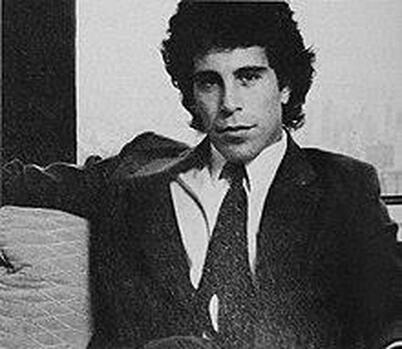 Jeff Epstein in 1980
Jeff Epstein in 1980 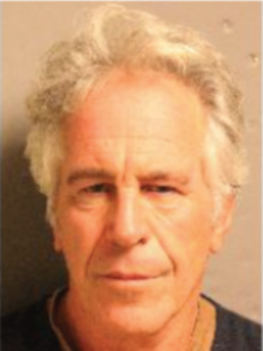 Final mug shot in 2019 Epstein was arrested again on July 6, 2019, on federal charges for the sex trafficking of minors in Florida and New York. He died in his jail cell on August 10, 2019. The medical examiner ruled the death a suicide, although Epstein's lawyers have disputed the ruling. Because his death eliminates the possibility of pursuing criminal charges, a judge dismissed all criminal charges on August 29, 2019.
Final mug shot in 2019 Epstein was arrested again on July 6, 2019, on federal charges for the sex trafficking of minors in Florida and New York. He died in his jail cell on August 10, 2019. The medical examiner ruled the death a suicide, although Epstein's lawyers have disputed the ruling. Because his death eliminates the possibility of pursuing criminal charges, a judge dismissed all criminal charges on August 29, 2019.
I will discuss his history, and then will address concerns about a lack of justice for victims, following Epstein’s death.
Jeff Epstein graduated in 1969 from Lafayette High School in New York, at age 16, having skipped two grades. He attended the Courant Institute of Mathematical Sciences at New York University, but left without receiving a degree in June 1974.
Epstein joined Bear Stearns in 1976 as a low-level junior assistant to a floor trader. He swiftly moved up to become an options trader, and then advised the bank's wealthiest clients, such as Seagram president Edgar Bronfman, on tax mitigation strategies. Jimmy Cayne, CEO, praised Epstein's skill with wealthy clients. In 1980, four years after joining Bear Stearns, Epstein became a limited partner. In 1981, he was asked to leave Bear Stearns for being guilty of hedge fund violations. Epstein remained a client of Bear Stearns until it collapsed in 2008.
In August 1981, Epstein founded his own consulting firm, Intercontinental Assets Group Inc. (IAG), which assisted clients in recovering stolen money from fraudulent brokers and lawyers. Epstein described his work as being a high-level bounty hunter. He worked for the very wealthy to recover embezzled funds, while at other times he worked for clients who had embezzled funds.
Steven Hoffenberg and Jeff Epstein became corporate raiders using Tower Financial as their raiding vessel (corporate raiders buy large stake in a corporation and then using shareholder voting rights to require the company to undertake new measures designed to increase the share value. They are often in it for the short-term and sell out at the inflated cost).
One of Epstein's first assignments was to implement what turned out to be an unsuccessful bid to take over Pan American World Airways in 1987. A similar unsuccessful bid in 1988 was made to take over Emery Air Freight Corp. During this period, Hoffenberg and Epstein worked closely together and traveled everywhere on Hoffenberg's private jet.
In 1993, Tower Financial Corporation imploded as one of the biggest Ponzi schemes in American history, losing its investors over $450 million (equivalent to $796,441,000 in 2019). In court documents, Hoffenberg claimed that Epstein was intimately involved in the scheme. Epstein left the company by 1989 before it collapsed and was never charged for his involvement in the massive investor fraud he committed.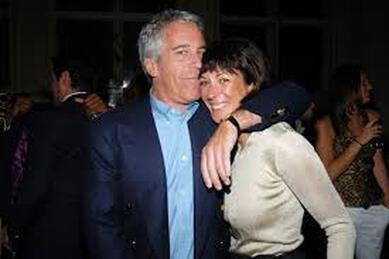 Epstein and long-term partner Ghislaine Maxwell
Epstein and long-term partner Ghislaine Maxwell  One of Epstein’s clients was billionaire Leslie Wexner, the CEO of L Brands and Victoria’s Secret. Pictured above is Wexner’s yacht, the Limitless, which Epstein designed. By 1995, Epstein was a director of the Wexner Foundation and made millions in fees by managing Wexner's financial affairs. Epstein often attended Victoria's Secret fashion shows, and hosted the models at his New York City home, as well as helping aspiring models get work with the company.
One of Epstein’s clients was billionaire Leslie Wexner, the CEO of L Brands and Victoria’s Secret. Pictured above is Wexner’s yacht, the Limitless, which Epstein designed. By 1995, Epstein was a director of the Wexner Foundation and made millions in fees by managing Wexner's financial affairs. Epstein often attended Victoria's Secret fashion shows, and hosted the models at his New York City home, as well as helping aspiring models get work with the company.
In 1996, Epstein changed the name of his firm to the Financial Trust Company and, for tax advantages, based it on the island of St. Thomas in the U.S. Virgin Islands. By relocating to the U.S. Virgin Islands, Epstein was able to reduce federal income taxes by 90%. The U.S. Virgin Islands acted as an offshore tax haven, while at the same time offering the advantages of being part of the United States banking system.
On April 18, 2007, an investor in the fund, who had $57 million invested, wanted to redeem his investment. the fund had a leverage ratio of 17:1, which meant for every dollar invested there were seventeen dollars of borrowed funds. The redemption of this investment caused the eventual collapse of Bear Stearns in March 2008. Epstein installed concealed cameras in numerous places on his properties to record sexual activity with underage girls by prominent people for blackmail. Ghislaine Maxwell, Epstein's close companion, told a friend that Epstein's private island in the Virgin Islands was completely wired for video and the friend believed that Maxwell and Epstein were videotaping everyone on the island as an insurance policy. When police raided his Palm Beach residence in 2006, two hidden pinhole cameras were discovered in his home. It was also reported that Epstein's mansion in New York was wired extensively with a video surveillance system. Maxwell has been sued by underage females for recruiting them as sex workers for Jeff Epstein.
Epstein installed concealed cameras in numerous places on his properties to record sexual activity with underage girls by prominent people for blackmail. Ghislaine Maxwell, Epstein's close companion, told a friend that Epstein's private island in the Virgin Islands was completely wired for video and the friend believed that Maxwell and Epstein were videotaping everyone on the island as an insurance policy. When police raided his Palm Beach residence in 2006, two hidden pinhole cameras were discovered in his home. It was also reported that Epstein's mansion in New York was wired extensively with a video surveillance system. Maxwell has been sued by underage females for recruiting them as sex workers for Jeff Epstein.
Individuals monitored private moments through the pinhole cameras throughout the house. The media room was accessed through a hidden door. Epstein allegedly "lent" girls to powerful people to ingratiate himself with them and also to gain possible blackmail information. According to the Department of Justice, he kept compact discs locked in his safe in his New York mansion with handwritten labels that included the description: "young [name] + [name]." Epstein partially confirmed that he had blackmail material when he told a New York Times reporter in 2018, off the record, that he had dirt on powerful people, including information about their sexual proclivities and recreational drug use.
Epstein allegedly "lent" girls to powerful people to ingratiate himself with them and also to gain possible blackmail information. According to the Department of Justice, he kept compact discs locked in his safe in his New York mansion with handwritten labels that included the description: "young [name] + [name]." Epstein partially confirmed that he had blackmail material when he told a New York Times reporter in 2018, off the record, that he had dirt on powerful people, including information about their sexual proclivities and recreational drug use.
In March 2005, a woman contacted Florida's Palm Beach Police Department and alleged that her 14-year-old stepdaughter had been taken to Epstein's mansion by an older girl. There she was allegedly paid $300 to strip and massage Epstein.
Police began a 13-month undercover investigation of Epstein, including a search of his home. The Federal Bureau of Investigation (FBI) also became involved. They alleged that Epstein had paid several girls to perform sexual acts with him. The police search of Epstein's home found large numbers of photos of girls throughout the house, some of whom the police had interviewed in the course of their investigation. (Many under age 16.) A former employee told the police that Epstein would receive massages 3 times a day. Eventually the FBI compiled reports on "34 confirmed minors" eligible for restitution (increased to 40 in the NPA) whose allegations of sexual abuse by Epstein included corroborating details. Julie Brown's 2018 exposé in the Miami Herald identified about 80 victims and located 60 of them. 12-year-old triplets were flown in from France for Epstein's birthday. Young girls were recruited from Brazil and other South American countries, former Soviet countries, and Europe. Jean Luc Brunel's "MC2" modeling agency was also supplying girls to Epstein.
A former employee told the police that Epstein would receive massages 3 times a day. Eventually the FBI compiled reports on "34 confirmed minors" eligible for restitution (increased to 40 in the NPA) whose allegations of sexual abuse by Epstein included corroborating details. Julie Brown's 2018 exposé in the Miami Herald identified about 80 victims and located 60 of them. 12-year-old triplets were flown in from France for Epstein's birthday. Young girls were recruited from Brazil and other South American countries, former Soviet countries, and Europe. Jean Luc Brunel's "MC2" modeling agency was also supplying girls to Epstein.
In May 2006, Palm Beach police filed a probable cause affidavit saying that Epstein should be charged with four counts of unlawful sex with minors and one count of sexual abuse. Epstein's defense lawyers included Roy Black, Gerald Lefcourt, Harvard Law School professor Alan Dershowitz, and former U. S. Solicitor General Ken Starr.
In July 2006, the FBI began its own investigation of Epstein, nicknamed "Operation Leap Year." Alexander Acosta, then the U.S. Attorney for the Southern District of Florida, agreed to a plea deal, which Alan Dershowitz helped to negotiate, to grant immunity from all federal criminal charges to Epstein, along with four named co-conspirators and any unnamed "potential co-conspirators". According to the Miami Herald, the non-prosecution agreement shut down the FBI probe into whether there were more victims and other powerful people who took part in Epstein's sex crimes. At the time, this halted the investigation and sealed the indictment. Acosta agreed, despite a federal law to the contrary, that the deal would be kept from the victims.
Acosta later said he offered a lenient plea deal because he was told that Epstein "belonged to intelligence," was "above his pay grade" and to "leave it alone." Epstein agreed to plead guilty in Florida state court to two felony prostitution charges, register as a sex offender, and pay restitution to three dozen victims identified by the FBI. The plea deal was described as a "sweetheart deal." On July 6, 2019, Epstein was arrested at Teterboro Airport in New Jersey on sex trafficking charges and was jailed at the Metropolitan Correctional Center in New York City. On the day of his arrest, FBI agents forced open the door to his Manhattan townhouse. The search turned up evidence of sex trafficking and also found "hundreds – and perhaps thousands – of sexually suggestive photographs of fully – or partially – nude females." Some of the photos were confirmed as those of underage females. In a locked safe, compact discs were found with handwritten labels including the descriptions: "Young [Name] + [Name]," "Misc nudes 1," and "Girl pics nude." Also found in the safe were $70,000 in cash, 48 diamonds, and a fraudulent Austrian passport, which expired in 1987, that had Epstein's photo but another name. The passport had been used to enter France, Spain, the United Kingdom, and Saudi Arabia in the 1980s. The passport showed his place of residence as Saudi Arabia. According to his attorneys, Epstein had been advised to acquire the passport because "as an affluent member of the Jewish faith," he was in danger of being kidnapped while traveling abroad.
On July 6, 2019, Epstein was arrested at Teterboro Airport in New Jersey on sex trafficking charges and was jailed at the Metropolitan Correctional Center in New York City. On the day of his arrest, FBI agents forced open the door to his Manhattan townhouse. The search turned up evidence of sex trafficking and also found "hundreds – and perhaps thousands – of sexually suggestive photographs of fully – or partially – nude females." Some of the photos were confirmed as those of underage females. In a locked safe, compact discs were found with handwritten labels including the descriptions: "Young [Name] + [Name]," "Misc nudes 1," and "Girl pics nude." Also found in the safe were $70,000 in cash, 48 diamonds, and a fraudulent Austrian passport, which expired in 1987, that had Epstein's photo but another name. The passport had been used to enter France, Spain, the United Kingdom, and Saudi Arabia in the 1980s. The passport showed his place of residence as Saudi Arabia. According to his attorneys, Epstein had been advised to acquire the passport because "as an affluent member of the Jewish faith," he was in danger of being kidnapped while traveling abroad.
Epstein owned a private Boeing 727 jet, nicknamed the " Lolita Express ," and traveled in it frequently, logging "600 flying hours a year usually with guests on board." The jet got its' nickname the Lolita Express from the locals in the Virgin Islands, because of its apparent frequent arrival with underage teenage girls to Little Saint James. (“Lolita” is a porn term for underage females.)
On July 23, 2019, 3 weeks prior to his death, Epstein was found unconscious in his jail cell with injuries to his neck. Epstein claimed he was attacked by his cellmate, who was awaiting trial for four counts of murder, while the correctional staff suspected he attempted suicide. After that incident, he was placed on suicide watch. 6 days later, on July 29, 2019, Epstein was taken off suicide watch and placed in a special housing unit with another inmate. On August 9, 2019, Epstein's cellmate was transferred out, and no new replacement cellmate was brought in. Later in the evening, in violation of the jail's normal procedure, Epstein was not checked every 30 minutes. The two guards assigned to check his cell fell asleep. Two cameras in front of Epstein's cell also malfunctioned that night.
Epstein was found dead in his cell at the Metropolitan Correctional Center (MCC) in New York City at 6:30 a.m. on August 10, 2019. Jeff Epstein’s death was determined to be suicide by hanging. Did Jeff Epstein kill himself? Probably. He was a narcissist, and narcissists love being in control. This is why he pursued 11 to 15 year old girls, rather than women. As a result of his incarceration, he had lost control. Could he have been murdered? Certainly. Guards falling asleep, cameras not working. But on the flip side, this also happens. Victims and their attorneys feel that justice wasn’t ultimately served with Epstein’s death. What would have been justice for Jeff Epstein? Honestly, I don’t feel victims can ever get justice. People are assaulted by people with incomes that range from billionaires to homeless people. I don’t believe that there is anything the offender can do to replace what was lost. So we incarcerate people, have them pay fines, and have them register as sex offenders, but none of it can ever really make up for it. Life in prison might have been appropriate, but honestly, he never would have received this. He didn’t murder anyone. Healing for victims can never be dependent on the outcome of the offender. We all need to address whatever’s bothering us on our own, as there is no guarantee anyone else is going to change. I don’t like Epstein, but I also don’t believe he got out of anything. He’s dead.Perhaps a better question is: Why does our society make celebrities out of slimeballs like Jeff Epstein? I think it’s easier for a slimeball to be wealthy, as normal people use their extra money to help others. It’s far better to be kind than rich.
Thanks for listening,
Frank Here some old photos of my family I came across while preparing my mother to move to assisted living:
 Leo
Leo 

 Rosetta and John
Rosetta and John  Frank and John
Frank and John  Leo and Hank
Leo and Hank  Ivan
Ivan  Anthony “Tony”, Barb, Charles, Dorothy, Elizabeth “Liz”, Frank, George, Henry “Hank”, Ivan. Grandma Barbara Kapsner made all of our pajamas.
Anthony “Tony”, Barb, Charles, Dorothy, Elizabeth “Liz”, Frank, George, Henry “Hank”, Ivan. Grandma Barbara Kapsner made all of our pajamas.  Hank and Ivan
Hank and Ivan  George and Hank
George and Hank  Dorothy, Tony, Barb, Charlie Liz and Frank
Dorothy, Tony, Barb, Charlie Liz and Frank  Tony and Charlie
Tony and Charlie  Liz and John
Liz and John 
 Ivan
Ivan  Elisabeth “Liz”
Elisabeth “Liz” 
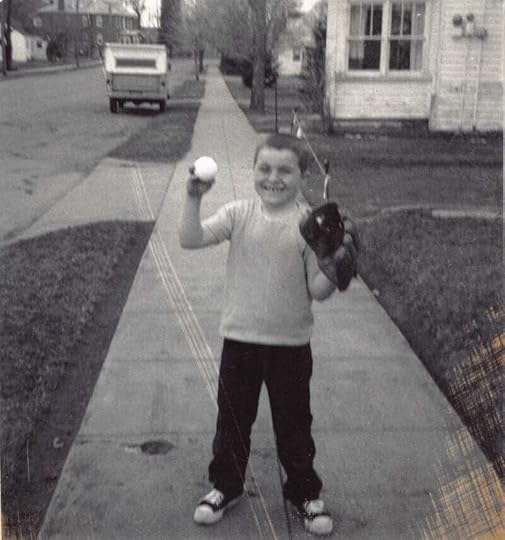 Henry “Hank”
Henry “Hank”  Charlie and John
Charlie and John  Charlie
Charlie 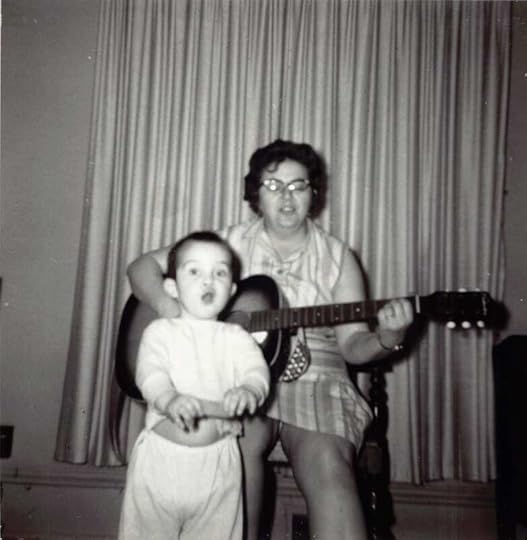 Rosetta and John
Rosetta and John  Dorothy (The veil had been borrowed from Aunt Regina Grittner and all the girls used it)
Dorothy (The veil had been borrowed from Aunt Regina Grittner and all the girls used it)  Barb, Tony, Charles Dorothy, Frank, Liz (the common theme with family pictures of me is I’m looking the other way or walking away)
Barb, Tony, Charles Dorothy, Frank, Liz (the common theme with family pictures of me is I’m looking the other way or walking away)  Leo and Liz
Leo and Liz 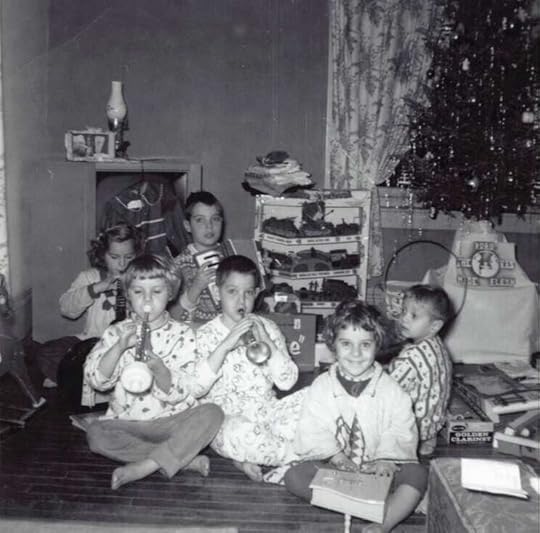 Barb, Tony, Dorothy, Charlie, Liz and Frank
Barb, Tony, Dorothy, Charlie, Liz and Frank 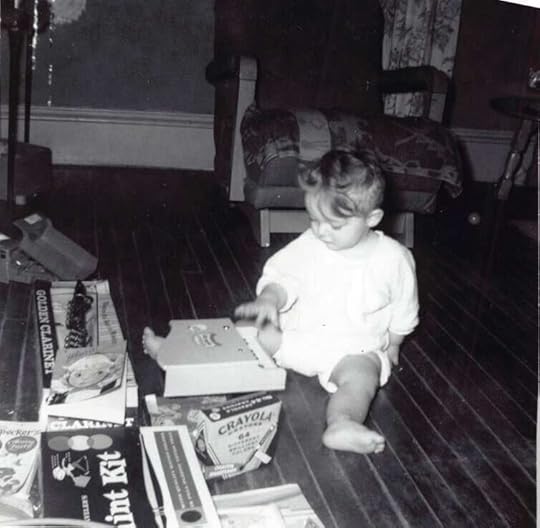 George
George  Charlie
Charlie
Make sure you are following Frank on Facebook! Click here to visit his Facebook page.
You can listen and ask questions from the safety of your home (or wherever you happen to be). Please join him live to get forensic questions answered and share any thoughts about his True Crime mysteries. *Win a chance to be a True Crime Star! During the 4 weeks of presentations, people who make comments during the presentation will have their name put into a drawing with the winner receiving 1 of the 3 choices. I will either use your name as a character, have you make a brief appearance, or use your business name somewhere in the book. Your choice (names will be entered only once)!
Tuesday, April 7, 2020 from 7:00 to 7:30 is the discussion of Murder Book.
 FACEBOOK LIVE EVENT! Monday, April 6, 2020, presenting on Last Call at the “Brown Bag” lunch event. Frank will be speaking from noon to 1:00. Enjoy your lunch at home while you hear about forensics and the writing of True Crime mysteries. Find out what they get wrong in movies and shows. The event is sponsored by “The Friends of Brainerd Public Library.”FACEBOOK LIVE EVENT! Tuesday, April 7, 2020 presenting on
Murder Book
on my Facebook site from 7:00 to 7:30 p.m. Enjoy hearing about the book and asking questions from the comfort of your home. Murder Book was the true crime thriller that started it all. Discussion of the case and events that lead to the mystery. I will be sharing events in my own life and the disappearance of girl in rural Minnesota that created the story.FACEBOOK LIVE EVENT! Tuesday, April 14, 2020 presenting on
The I-94 Murders
. The I-94 Murders was based on the I-680 killer and was written before he was caught. I was convinced the crime was unsolved because the profile was wrong, I had Jon Frederick work the case and changed the profile. Frederick solves it with a creative use of DNA. Four months after my book went to the publisher, the I-680 killer was caught. My profile was correct and they used the manner I suggested, to catch the killer. The I-94 Murders was selected as Best Romance of 2019 by Midwest Independent Publishers Association. MIPA evaluates all new books in the 12 state Midwest.Virtual Children’s Reading Event. April 16, 2020, reading Stuck by Oliver Jeffers to at 3:00 p.m. to children ages 5 to 9 for Friends of the Brainerd Public Library. Frank is reading a children’s book using Facebook Live on the Friends of the Brainerd Public Library page.FACEBOOK LIVE EVENT! Tuesday, April 21, 2020 presenting on
Last Call
. This book challenges the reader to consider how all of our work occurs in the context of our relationship. An relationship issue is presented in the first chapter, and then Last Call goes to Jon’s investigation of a 19-year-old female who was abducted after leaving a convenience store. However, as Jon works the case, the relationship issue looms in the background. This book was based on my own work assessing a kidnapper and counseling a kidnapping victim, which gives the reader a unique inside perspective. LIVE ZOOM EVENT! Monday, April 27, 2020, speaking on Mental Illness & Mental Health Crisis Intervention at the Minnesota Association for Children’s Mental Health (MACMH). Frank will share insights on how to deal with aggressive, oppositionally silent, narcissistic, and “angry at the system” clients. Due to concerns of COVID-19, this conference (one of the largest mental health conferences nationally), has been converted on an online format. This will allow professionals and families to participate and engage with others in the field from the safety and comfort of their homes. This presentation is from 3:00 to 4:45 p.m. You can sign up for the conference through the MACMH's online website. This is the 2020 Child & Adolescent Mental Health Conference that runs from April 26-28, 2020.FACEBOOK LIVE EVENT! Tuesday, April 28, 2020 presenting on
Lying Close
. A hunting accident. A rural home break-in. A teen disappears. All within 30 miles in rural Minnesota. Are they symptoms of a larger evil in the area? And someone close to the investigation is lying. Interwoven in the story is a love affair between a rural white Christian male and a Somali Muslim woman in St. Cloud. It’s hard to believe that in 2020 some couples in the U.S. still can’t share with their families who they are dating-- because of group association. Lying Close is based on a true story, and is not intended to convert people to a side. Jeffrey Edward Epstein (January 20, 1953 – August 10, 2019) was a convicted sex offender. Jeff worked as a financier for Bear Stearns before forming his own firm. He developed an “elite” social circle and sexually abused underage girls.
FACEBOOK LIVE EVENT! Monday, April 6, 2020, presenting on Last Call at the “Brown Bag” lunch event. Frank will be speaking from noon to 1:00. Enjoy your lunch at home while you hear about forensics and the writing of True Crime mysteries. Find out what they get wrong in movies and shows. The event is sponsored by “The Friends of Brainerd Public Library.”FACEBOOK LIVE EVENT! Tuesday, April 7, 2020 presenting on
Murder Book
on my Facebook site from 7:00 to 7:30 p.m. Enjoy hearing about the book and asking questions from the comfort of your home. Murder Book was the true crime thriller that started it all. Discussion of the case and events that lead to the mystery. I will be sharing events in my own life and the disappearance of girl in rural Minnesota that created the story.FACEBOOK LIVE EVENT! Tuesday, April 14, 2020 presenting on
The I-94 Murders
. The I-94 Murders was based on the I-680 killer and was written before he was caught. I was convinced the crime was unsolved because the profile was wrong, I had Jon Frederick work the case and changed the profile. Frederick solves it with a creative use of DNA. Four months after my book went to the publisher, the I-680 killer was caught. My profile was correct and they used the manner I suggested, to catch the killer. The I-94 Murders was selected as Best Romance of 2019 by Midwest Independent Publishers Association. MIPA evaluates all new books in the 12 state Midwest.Virtual Children’s Reading Event. April 16, 2020, reading Stuck by Oliver Jeffers to at 3:00 p.m. to children ages 5 to 9 for Friends of the Brainerd Public Library. Frank is reading a children’s book using Facebook Live on the Friends of the Brainerd Public Library page.FACEBOOK LIVE EVENT! Tuesday, April 21, 2020 presenting on
Last Call
. This book challenges the reader to consider how all of our work occurs in the context of our relationship. An relationship issue is presented in the first chapter, and then Last Call goes to Jon’s investigation of a 19-year-old female who was abducted after leaving a convenience store. However, as Jon works the case, the relationship issue looms in the background. This book was based on my own work assessing a kidnapper and counseling a kidnapping victim, which gives the reader a unique inside perspective. LIVE ZOOM EVENT! Monday, April 27, 2020, speaking on Mental Illness & Mental Health Crisis Intervention at the Minnesota Association for Children’s Mental Health (MACMH). Frank will share insights on how to deal with aggressive, oppositionally silent, narcissistic, and “angry at the system” clients. Due to concerns of COVID-19, this conference (one of the largest mental health conferences nationally), has been converted on an online format. This will allow professionals and families to participate and engage with others in the field from the safety and comfort of their homes. This presentation is from 3:00 to 4:45 p.m. You can sign up for the conference through the MACMH's online website. This is the 2020 Child & Adolescent Mental Health Conference that runs from April 26-28, 2020.FACEBOOK LIVE EVENT! Tuesday, April 28, 2020 presenting on
Lying Close
. A hunting accident. A rural home break-in. A teen disappears. All within 30 miles in rural Minnesota. Are they symptoms of a larger evil in the area? And someone close to the investigation is lying. Interwoven in the story is a love affair between a rural white Christian male and a Somali Muslim woman in St. Cloud. It’s hard to believe that in 2020 some couples in the U.S. still can’t share with their families who they are dating-- because of group association. Lying Close is based on a true story, and is not intended to convert people to a side. Jeffrey Edward Epstein (January 20, 1953 – August 10, 2019) was a convicted sex offender. Jeff worked as a financier for Bear Stearns before forming his own firm. He developed an “elite” social circle and sexually abused underage girls.
In 2005, police in Palm Beach, Florida began investigating Epstein after a parent complained that he had sexually abused her 14-year-old daughter. Federal officials identified 36 victims (girls), with the youngest being 11 years old. He was convicted of only two crimes as part of a plea deal. He served 13 months in custody, with extensive work release. (It was reported his cell door wasn’t even locked.)
 Jeff Epstein in 1980
Jeff Epstein in 1980  Final mug shot in 2019 Epstein was arrested again on July 6, 2019, on federal charges for the sex trafficking of minors in Florida and New York. He died in his jail cell on August 10, 2019. The medical examiner ruled the death a suicide, although Epstein's lawyers have disputed the ruling. Because his death eliminates the possibility of pursuing criminal charges, a judge dismissed all criminal charges on August 29, 2019.
Final mug shot in 2019 Epstein was arrested again on July 6, 2019, on federal charges for the sex trafficking of minors in Florida and New York. He died in his jail cell on August 10, 2019. The medical examiner ruled the death a suicide, although Epstein's lawyers have disputed the ruling. Because his death eliminates the possibility of pursuing criminal charges, a judge dismissed all criminal charges on August 29, 2019.I will discuss his history, and then will address concerns about a lack of justice for victims, following Epstein’s death.
Jeff Epstein graduated in 1969 from Lafayette High School in New York, at age 16, having skipped two grades. He attended the Courant Institute of Mathematical Sciences at New York University, but left without receiving a degree in June 1974.
Epstein joined Bear Stearns in 1976 as a low-level junior assistant to a floor trader. He swiftly moved up to become an options trader, and then advised the bank's wealthiest clients, such as Seagram president Edgar Bronfman, on tax mitigation strategies. Jimmy Cayne, CEO, praised Epstein's skill with wealthy clients. In 1980, four years after joining Bear Stearns, Epstein became a limited partner. In 1981, he was asked to leave Bear Stearns for being guilty of hedge fund violations. Epstein remained a client of Bear Stearns until it collapsed in 2008.
In August 1981, Epstein founded his own consulting firm, Intercontinental Assets Group Inc. (IAG), which assisted clients in recovering stolen money from fraudulent brokers and lawyers. Epstein described his work as being a high-level bounty hunter. He worked for the very wealthy to recover embezzled funds, while at other times he worked for clients who had embezzled funds.
Steven Hoffenberg and Jeff Epstein became corporate raiders using Tower Financial as their raiding vessel (corporate raiders buy large stake in a corporation and then using shareholder voting rights to require the company to undertake new measures designed to increase the share value. They are often in it for the short-term and sell out at the inflated cost).
One of Epstein's first assignments was to implement what turned out to be an unsuccessful bid to take over Pan American World Airways in 1987. A similar unsuccessful bid in 1988 was made to take over Emery Air Freight Corp. During this period, Hoffenberg and Epstein worked closely together and traveled everywhere on Hoffenberg's private jet.
In 1993, Tower Financial Corporation imploded as one of the biggest Ponzi schemes in American history, losing its investors over $450 million (equivalent to $796,441,000 in 2019). In court documents, Hoffenberg claimed that Epstein was intimately involved in the scheme. Epstein left the company by 1989 before it collapsed and was never charged for his involvement in the massive investor fraud he committed.
 Epstein and long-term partner Ghislaine Maxwell
Epstein and long-term partner Ghislaine Maxwell  One of Epstein’s clients was billionaire Leslie Wexner, the CEO of L Brands and Victoria’s Secret. Pictured above is Wexner’s yacht, the Limitless, which Epstein designed. By 1995, Epstein was a director of the Wexner Foundation and made millions in fees by managing Wexner's financial affairs. Epstein often attended Victoria's Secret fashion shows, and hosted the models at his New York City home, as well as helping aspiring models get work with the company.
One of Epstein’s clients was billionaire Leslie Wexner, the CEO of L Brands and Victoria’s Secret. Pictured above is Wexner’s yacht, the Limitless, which Epstein designed. By 1995, Epstein was a director of the Wexner Foundation and made millions in fees by managing Wexner's financial affairs. Epstein often attended Victoria's Secret fashion shows, and hosted the models at his New York City home, as well as helping aspiring models get work with the company.In 1996, Epstein changed the name of his firm to the Financial Trust Company and, for tax advantages, based it on the island of St. Thomas in the U.S. Virgin Islands. By relocating to the U.S. Virgin Islands, Epstein was able to reduce federal income taxes by 90%. The U.S. Virgin Islands acted as an offshore tax haven, while at the same time offering the advantages of being part of the United States banking system.
On April 18, 2007, an investor in the fund, who had $57 million invested, wanted to redeem his investment. the fund had a leverage ratio of 17:1, which meant for every dollar invested there were seventeen dollars of borrowed funds. The redemption of this investment caused the eventual collapse of Bear Stearns in March 2008.
 Epstein installed concealed cameras in numerous places on his properties to record sexual activity with underage girls by prominent people for blackmail. Ghislaine Maxwell, Epstein's close companion, told a friend that Epstein's private island in the Virgin Islands was completely wired for video and the friend believed that Maxwell and Epstein were videotaping everyone on the island as an insurance policy. When police raided his Palm Beach residence in 2006, two hidden pinhole cameras were discovered in his home. It was also reported that Epstein's mansion in New York was wired extensively with a video surveillance system. Maxwell has been sued by underage females for recruiting them as sex workers for Jeff Epstein.
Epstein installed concealed cameras in numerous places on his properties to record sexual activity with underage girls by prominent people for blackmail. Ghislaine Maxwell, Epstein's close companion, told a friend that Epstein's private island in the Virgin Islands was completely wired for video and the friend believed that Maxwell and Epstein were videotaping everyone on the island as an insurance policy. When police raided his Palm Beach residence in 2006, two hidden pinhole cameras were discovered in his home. It was also reported that Epstein's mansion in New York was wired extensively with a video surveillance system. Maxwell has been sued by underage females for recruiting them as sex workers for Jeff Epstein. Individuals monitored private moments through the pinhole cameras throughout the house. The media room was accessed through a hidden door.
 Epstein allegedly "lent" girls to powerful people to ingratiate himself with them and also to gain possible blackmail information. According to the Department of Justice, he kept compact discs locked in his safe in his New York mansion with handwritten labels that included the description: "young [name] + [name]." Epstein partially confirmed that he had blackmail material when he told a New York Times reporter in 2018, off the record, that he had dirt on powerful people, including information about their sexual proclivities and recreational drug use.
Epstein allegedly "lent" girls to powerful people to ingratiate himself with them and also to gain possible blackmail information. According to the Department of Justice, he kept compact discs locked in his safe in his New York mansion with handwritten labels that included the description: "young [name] + [name]." Epstein partially confirmed that he had blackmail material when he told a New York Times reporter in 2018, off the record, that he had dirt on powerful people, including information about their sexual proclivities and recreational drug use.In March 2005, a woman contacted Florida's Palm Beach Police Department and alleged that her 14-year-old stepdaughter had been taken to Epstein's mansion by an older girl. There she was allegedly paid $300 to strip and massage Epstein.
Police began a 13-month undercover investigation of Epstein, including a search of his home. The Federal Bureau of Investigation (FBI) also became involved. They alleged that Epstein had paid several girls to perform sexual acts with him. The police search of Epstein's home found large numbers of photos of girls throughout the house, some of whom the police had interviewed in the course of their investigation. (Many under age 16.)
 A former employee told the police that Epstein would receive massages 3 times a day. Eventually the FBI compiled reports on "34 confirmed minors" eligible for restitution (increased to 40 in the NPA) whose allegations of sexual abuse by Epstein included corroborating details. Julie Brown's 2018 exposé in the Miami Herald identified about 80 victims and located 60 of them. 12-year-old triplets were flown in from France for Epstein's birthday. Young girls were recruited from Brazil and other South American countries, former Soviet countries, and Europe. Jean Luc Brunel's "MC2" modeling agency was also supplying girls to Epstein.
A former employee told the police that Epstein would receive massages 3 times a day. Eventually the FBI compiled reports on "34 confirmed minors" eligible for restitution (increased to 40 in the NPA) whose allegations of sexual abuse by Epstein included corroborating details. Julie Brown's 2018 exposé in the Miami Herald identified about 80 victims and located 60 of them. 12-year-old triplets were flown in from France for Epstein's birthday. Young girls were recruited from Brazil and other South American countries, former Soviet countries, and Europe. Jean Luc Brunel's "MC2" modeling agency was also supplying girls to Epstein.
In May 2006, Palm Beach police filed a probable cause affidavit saying that Epstein should be charged with four counts of unlawful sex with minors and one count of sexual abuse. Epstein's defense lawyers included Roy Black, Gerald Lefcourt, Harvard Law School professor Alan Dershowitz, and former U. S. Solicitor General Ken Starr.
In July 2006, the FBI began its own investigation of Epstein, nicknamed "Operation Leap Year." Alexander Acosta, then the U.S. Attorney for the Southern District of Florida, agreed to a plea deal, which Alan Dershowitz helped to negotiate, to grant immunity from all federal criminal charges to Epstein, along with four named co-conspirators and any unnamed "potential co-conspirators". According to the Miami Herald, the non-prosecution agreement shut down the FBI probe into whether there were more victims and other powerful people who took part in Epstein's sex crimes. At the time, this halted the investigation and sealed the indictment. Acosta agreed, despite a federal law to the contrary, that the deal would be kept from the victims.
Acosta later said he offered a lenient plea deal because he was told that Epstein "belonged to intelligence," was "above his pay grade" and to "leave it alone." Epstein agreed to plead guilty in Florida state court to two felony prostitution charges, register as a sex offender, and pay restitution to three dozen victims identified by the FBI. The plea deal was described as a "sweetheart deal."
 On July 6, 2019, Epstein was arrested at Teterboro Airport in New Jersey on sex trafficking charges and was jailed at the Metropolitan Correctional Center in New York City. On the day of his arrest, FBI agents forced open the door to his Manhattan townhouse. The search turned up evidence of sex trafficking and also found "hundreds – and perhaps thousands – of sexually suggestive photographs of fully – or partially – nude females." Some of the photos were confirmed as those of underage females. In a locked safe, compact discs were found with handwritten labels including the descriptions: "Young [Name] + [Name]," "Misc nudes 1," and "Girl pics nude." Also found in the safe were $70,000 in cash, 48 diamonds, and a fraudulent Austrian passport, which expired in 1987, that had Epstein's photo but another name. The passport had been used to enter France, Spain, the United Kingdom, and Saudi Arabia in the 1980s. The passport showed his place of residence as Saudi Arabia. According to his attorneys, Epstein had been advised to acquire the passport because "as an affluent member of the Jewish faith," he was in danger of being kidnapped while traveling abroad.
On July 6, 2019, Epstein was arrested at Teterboro Airport in New Jersey on sex trafficking charges and was jailed at the Metropolitan Correctional Center in New York City. On the day of his arrest, FBI agents forced open the door to his Manhattan townhouse. The search turned up evidence of sex trafficking and also found "hundreds – and perhaps thousands – of sexually suggestive photographs of fully – or partially – nude females." Some of the photos were confirmed as those of underage females. In a locked safe, compact discs were found with handwritten labels including the descriptions: "Young [Name] + [Name]," "Misc nudes 1," and "Girl pics nude." Also found in the safe were $70,000 in cash, 48 diamonds, and a fraudulent Austrian passport, which expired in 1987, that had Epstein's photo but another name. The passport had been used to enter France, Spain, the United Kingdom, and Saudi Arabia in the 1980s. The passport showed his place of residence as Saudi Arabia. According to his attorneys, Epstein had been advised to acquire the passport because "as an affluent member of the Jewish faith," he was in danger of being kidnapped while traveling abroad.
Epstein owned a private Boeing 727 jet, nicknamed the " Lolita Express ," and traveled in it frequently, logging "600 flying hours a year usually with guests on board." The jet got its' nickname the Lolita Express from the locals in the Virgin Islands, because of its apparent frequent arrival with underage teenage girls to Little Saint James. (“Lolita” is a porn term for underage females.)
On July 23, 2019, 3 weeks prior to his death, Epstein was found unconscious in his jail cell with injuries to his neck. Epstein claimed he was attacked by his cellmate, who was awaiting trial for four counts of murder, while the correctional staff suspected he attempted suicide. After that incident, he was placed on suicide watch. 6 days later, on July 29, 2019, Epstein was taken off suicide watch and placed in a special housing unit with another inmate. On August 9, 2019, Epstein's cellmate was transferred out, and no new replacement cellmate was brought in. Later in the evening, in violation of the jail's normal procedure, Epstein was not checked every 30 minutes. The two guards assigned to check his cell fell asleep. Two cameras in front of Epstein's cell also malfunctioned that night.
Epstein was found dead in his cell at the Metropolitan Correctional Center (MCC) in New York City at 6:30 a.m. on August 10, 2019. Jeff Epstein’s death was determined to be suicide by hanging. Did Jeff Epstein kill himself? Probably. He was a narcissist, and narcissists love being in control. This is why he pursued 11 to 15 year old girls, rather than women. As a result of his incarceration, he had lost control. Could he have been murdered? Certainly. Guards falling asleep, cameras not working. But on the flip side, this also happens. Victims and their attorneys feel that justice wasn’t ultimately served with Epstein’s death. What would have been justice for Jeff Epstein? Honestly, I don’t feel victims can ever get justice. People are assaulted by people with incomes that range from billionaires to homeless people. I don’t believe that there is anything the offender can do to replace what was lost. So we incarcerate people, have them pay fines, and have them register as sex offenders, but none of it can ever really make up for it. Life in prison might have been appropriate, but honestly, he never would have received this. He didn’t murder anyone. Healing for victims can never be dependent on the outcome of the offender. We all need to address whatever’s bothering us on our own, as there is no guarantee anyone else is going to change. I don’t like Epstein, but I also don’t believe he got out of anything. He’s dead.Perhaps a better question is: Why does our society make celebrities out of slimeballs like Jeff Epstein? I think it’s easier for a slimeball to be wealthy, as normal people use their extra money to help others. It’s far better to be kind than rich.
Thanks for listening,
Frank Here some old photos of my family I came across while preparing my mother to move to assisted living:

 Leo
Leo 

 Rosetta and John
Rosetta and John  Frank and John
Frank and John  Leo and Hank
Leo and Hank  Ivan
Ivan  Anthony “Tony”, Barb, Charles, Dorothy, Elizabeth “Liz”, Frank, George, Henry “Hank”, Ivan. Grandma Barbara Kapsner made all of our pajamas.
Anthony “Tony”, Barb, Charles, Dorothy, Elizabeth “Liz”, Frank, George, Henry “Hank”, Ivan. Grandma Barbara Kapsner made all of our pajamas.  Hank and Ivan
Hank and Ivan  George and Hank
George and Hank  Dorothy, Tony, Barb, Charlie Liz and Frank
Dorothy, Tony, Barb, Charlie Liz and Frank  Tony and Charlie
Tony and Charlie  Liz and John
Liz and John 
 Ivan
Ivan  Elisabeth “Liz”
Elisabeth “Liz” 
 Henry “Hank”
Henry “Hank”  Charlie and John
Charlie and John  Charlie
Charlie  Rosetta and John
Rosetta and John  Dorothy (The veil had been borrowed from Aunt Regina Grittner and all the girls used it)
Dorothy (The veil had been borrowed from Aunt Regina Grittner and all the girls used it)  Barb, Tony, Charles Dorothy, Frank, Liz (the common theme with family pictures of me is I’m looking the other way or walking away)
Barb, Tony, Charles Dorothy, Frank, Liz (the common theme with family pictures of me is I’m looking the other way or walking away)  Leo and Liz
Leo and Liz  Barb, Tony, Dorothy, Charlie, Liz and Frank
Barb, Tony, Dorothy, Charlie, Liz and Frank  George
George  Charlie
Charlie
Published on April 04, 2020 11:09
March 25, 2020
True Crime Tuesday
Every Tuesday in April, Frank Weber will be presenting a free Facebook live chat on one of his novels from 7:00-7:30 p.m. central time.
Make sure you are following Frank on Facebook! Click here to visit his Facebook page.
You can listen and ask questions from the safety of your home (or wherever you happen to be). Please join him live to get forensic questions answered and share any thoughts about his True Crime mysteries. *Win a chance to be a True Crime Star! During the 4 weeks of presentations, people who make comments during the presentation will have their name put into a drawing with the winner receiving 1 of the 3 choices. I will either use your name as a character, have you make a brief appearance, or use your business name somewhere in the book. Your choice (names will be entered only once)! April 7: Murder Book The mystery that started it all.
 Do you recall the teens parking at the beginning or Serena looking out Jon’s Minneapolis apartment window?
Do you recall the teens parking at the beginning or Serena looking out Jon’s Minneapolis apartment window? 
 April 14: The I-94 Murders
April 14: The I-94 Murders 
 Do you remember what Sonia witnessed on the steps at the beginning, and her walking through a field east of Buckman toward the end? Or how about Serena at the very end?
Do you remember what Sonia witnessed on the steps at the beginning, and her walking through a field east of Buckman toward the end? Or how about Serena at the very end? 

 April 21: Last Call
April 21: Last Call 
 Do you remember the river scene with Jon and Serena? The wolves in the woods?
Do you remember the river scene with Jon and Serena? The wolves in the woods? 

 April 28: Lying Close
April 28: Lying Close 
 Are you prepared for Lying Close?
Are you prepared for Lying Close?
A hunting accident. A rural home break-in. A teen disappears. All within 30 miles in rural Minnesota. Are they symptoms of a larger evil in the area? And someone close to the investigation is lying. Interwoven in the story is love affair between a rural white Christian male and a Somali Muslim woman in St. Cloud. It’s hard to believe that in 2020 some couples in the U.S. still can’t share with their families who they are dating because of group association. Lying Close is based on a true story, and is not intended to convert people to a side.
There are scenes in central Minnesota from Paynesville, to Grey Eagle, to the Mississippi river, to downtown St. Cloud and north. Story pictures below: Serena. A couple at Wilson park along the Mississippi in St. Cloud. A young girl with a large buck.

 Each discussion will start at 7:00 p.m. central time and run until 7:30.
Each discussion will start at 7:00 p.m. central time and run until 7:30.
Please invite people to listen. As you can see on my event page, the current situation has cancelled my major book promotion events. Thank you!
Frank Weber
Make sure you are following Frank on Facebook! Click here to visit his Facebook page.
You can listen and ask questions from the safety of your home (or wherever you happen to be). Please join him live to get forensic questions answered and share any thoughts about his True Crime mysteries. *Win a chance to be a True Crime Star! During the 4 weeks of presentations, people who make comments during the presentation will have their name put into a drawing with the winner receiving 1 of the 3 choices. I will either use your name as a character, have you make a brief appearance, or use your business name somewhere in the book. Your choice (names will be entered only once)! April 7: Murder Book The mystery that started it all.

 Do you recall the teens parking at the beginning or Serena looking out Jon’s Minneapolis apartment window?
Do you recall the teens parking at the beginning or Serena looking out Jon’s Minneapolis apartment window? 
 April 14: The I-94 Murders
April 14: The I-94 Murders 
 Do you remember what Sonia witnessed on the steps at the beginning, and her walking through a field east of Buckman toward the end? Or how about Serena at the very end?
Do you remember what Sonia witnessed on the steps at the beginning, and her walking through a field east of Buckman toward the end? Or how about Serena at the very end? 

 April 21: Last Call
April 21: Last Call 
 Do you remember the river scene with Jon and Serena? The wolves in the woods?
Do you remember the river scene with Jon and Serena? The wolves in the woods? 

 April 28: Lying Close
April 28: Lying Close 
 Are you prepared for Lying Close?
Are you prepared for Lying Close?A hunting accident. A rural home break-in. A teen disappears. All within 30 miles in rural Minnesota. Are they symptoms of a larger evil in the area? And someone close to the investigation is lying. Interwoven in the story is love affair between a rural white Christian male and a Somali Muslim woman in St. Cloud. It’s hard to believe that in 2020 some couples in the U.S. still can’t share with their families who they are dating because of group association. Lying Close is based on a true story, and is not intended to convert people to a side.
There are scenes in central Minnesota from Paynesville, to Grey Eagle, to the Mississippi river, to downtown St. Cloud and north. Story pictures below: Serena. A couple at Wilson park along the Mississippi in St. Cloud. A young girl with a large buck.


 Each discussion will start at 7:00 p.m. central time and run until 7:30.
Each discussion will start at 7:00 p.m. central time and run until 7:30.Please invite people to listen. As you can see on my event page, the current situation has cancelled my major book promotion events. Thank you!
Frank Weber
Published on March 25, 2020 11:45
March 13, 2020
Indulgences, Reaction Formation & Cheryl Koker
Thank you New York Mills Public Library, Maple Plain Public Library, Brainerd High School and Tamarack Tap Room in Woodbury for the opportunity to speak on my books and forensic work.
First of all, thank you once again for the support for my writing. We are close to having the audio recording of Murder Book completed. Actor Johnathan Strait is reading the book. He has an appearance coming up on the TV show “Bull” in the near future. I was looking at my parents’ marriage license, and yes they were married (just kidding). I thought it was particularly humorous that after AMEN, the license states, … “300 days indulgence.” I contacted my cousin, Kevin Zenner, for some insight into this. Kevin and I have interesting conversations about many of my blogs and he gave me the great quote from Mother Teresa I used in the previous blog. Apparently the “days of indulgence” has to do with time in purgatory. Involvement in a sacrament reduced the amount of time in purgatory, with this particular ceremony being worthy of 300 days (but not necessarily earth days). But keep in mind, indulgences can only be redeemed for temporal punishment. You still need to have mortal sins absolved through confession.
I was looking at my parents’ marriage license, and yes they were married (just kidding). I thought it was particularly humorous that after AMEN, the license states, … “300 days indulgence.” I contacted my cousin, Kevin Zenner, for some insight into this. Kevin and I have interesting conversations about many of my blogs and he gave me the great quote from Mother Teresa I used in the previous blog. Apparently the “days of indulgence” has to do with time in purgatory. Involvement in a sacrament reduced the amount of time in purgatory, with this particular ceremony being worthy of 300 days (but not necessarily earth days). But keep in mind, indulgences can only be redeemed for temporal punishment. You still need to have mortal sins absolved through confession.  I’m not exactly sure when you stopped receiving indulgences for getting married, but I didn’t receive any. Maybe secretly Brenda did. In the middle ages, corrupt administration in the Catholic church actually sold indulgences. They obviously missed the warning from Jesus, “My house shall be called a house of prayer, but you have made it a den of thieves.”
I’m not exactly sure when you stopped receiving indulgences for getting married, but I didn’t receive any. Maybe secretly Brenda did. In the middle ages, corrupt administration in the Catholic church actually sold indulgences. They obviously missed the warning from Jesus, “My house shall be called a house of prayer, but you have made it a den of thieves.”
Reaction formation = A defense mechanism in which anxiety producing emotions are replaced with the direct opposite. For example: A man who secretly desires to dominate his partner might hate that aspect of himself and respond by continually submitting to her wishes. It is one of the most difficult psychological concepts for people to understand. The concept was noticed by Sigmund Freud in 1894. (This is an insight he got right.) Other examples: A parent who excessively punishes a child (s)he claims to love. Or: A vengeful lover exhibits shallow public displays of affection for his partner. A possible forensic example of reaction formation:
A possible forensic example of reaction formation:
Cheryl Koker met Bill Koker working at General Motors. In October of 2018, they are living in Riverside, Ohio with their daughter, Makayla. Cheryl drops Makayla off at school that morning and is never seen again. Her daughter, Merissa, gets online and tracks Cheryl’s cell phone. She finds Cheryl’s car in a Kroger grocery store parking lot on October 3. Her phone, purse and credit cards are all in her car. Investigators view the motion sensored security camera from the store, and realize the camera stopped recording as soon as the car was parked, so they couldn’t see who exited the vehicle. Cheryl is described as a kind and caring person, a great friend and a wonderful mother. Investigation into the marriage indicated her husband Bill has been unfaithful, but they attempt to work through it. Bill suggests they have an open marriage, but not fall in love with any of their other partners. Bill enters into a loving relationship with a coworker (which violated the rule). Cheryl requests a divorce. Bill tells Cheryl he’ll end the affair. An hour later, Cheryl sees Bill had sent a text to his mistress stating, “I can’t wait to spend the rest of our lives together.”
Investigation into the marriage indicated her husband Bill has been unfaithful, but they attempt to work through it. Bill suggests they have an open marriage, but not fall in love with any of their other partners. Bill enters into a loving relationship with a coworker (which violated the rule). Cheryl requests a divorce. Bill tells Cheryl he’ll end the affair. An hour later, Cheryl sees Bill had sent a text to his mistress stating, “I can’t wait to spend the rest of our lives together.”
When Bill is served with divorce papers he is furious. Bill and Cheryl get into an argument, and Bill tries running her off the road. No police report was filed, so this is based on what Cheryl told friends. Bill reports that he was home, and Cheryl was fine that morning, but he didn’t see her. He spoke to her from the other room. Since Cheryl’s disappearance, Bill is the only family member who isn’t calling the police and asking about the progress of the investigation.
Investigators get surveillance footage from a local tavern which also borders the parking lot where Cheryl’s car was found. This video reveals a man wearing a black hooded sweatshirt, with the hood up, exiting Cheryl’s vehicle in the Kroger parking lot. (It was a very hot day so wearing the hood is particularly suspicious.) The man was walking back to the Koker residence.
As of today: Bill Koker has been named the one and only suspect in Cheryl’s disappearance, however he has not been formally charged. The investigators feel they don’t have the evidence to convict. No one has been arrested. Cheryl’s body has never been found.
 Why would someone murder someone they loved? Intense love can include underlying resentments, and feelings of not being completely appreciated. Where there is betrayal, there can be moments of extreme hate. Love and hate are opposing sides of the same coin (both involve extremes of emotion). On the other end of the spectrum is indifference, and that’s what people need to find with an ex-lover. Much of the great criminology work comes out of Chicago. David Luckenbill reports that murder typically follows the same scenario:
Why would someone murder someone they loved? Intense love can include underlying resentments, and feelings of not being completely appreciated. Where there is betrayal, there can be moments of extreme hate. Love and hate are opposing sides of the same coin (both involve extremes of emotion). On the other end of the spectrum is indifference, and that’s what people need to find with an ex-lover. Much of the great criminology work comes out of Chicago. David Luckenbill reports that murder typically follows the same scenario:
Theory of Murder as a Situational Transaction =
Murder generally follows a sequence:Victim offends killer;Killer issues threat;Use of violence is forged in killer by victim’s reaction;Battle ensues, leaving victim dead.
David Luckenbill
American Assyriologist
University of Chicago, 1977
This is a hypothetical of the Cheryl Koker case, based on the conclusion made by law enforcement. Please keep in mind, no one has been charged with Cheryl’s murder, so this is hypothetical. Woman requests divorce. Husband likes the arrangement of uncommitted relationship without having to pay child support. He threatens to kill her if she follows through with divorce (allegedly runs her off the road).His aggressive behavior confirms her desire for a divorce. She is not backing down.One last brief argument at home results in expression of hate for woman he once loved.
Thanks for listening,
Frank Saturday, March 14, 2020, presenting on his newest mystery, Last Call, and answering questions about forensic work at the New York Mills Library at 10:30 a.m. Frank will speak for approximately one hour and will be at the library before and after the presentation to sign and sell books and answer questions related to forensics or true crime writing. The New York Mills Public library is located at 30 Main Avenue North, New York Mills, Minnesota.Thursday, March 19, speaking at the Senior Center in Sartell from 9:00 a.m. to 10:30 a.m. on the writing of True Crime mystery and my forensic work. It’s a chance to get your questions answered about forensics, learn some new forensic techniques, and hear about what they get wrong in movies. Last Call begins in Brainerd and ends in St. Cloud, identifying actual business and places in the Minnesota communities. I will be at the Senior Center both before and after my presentation signing and selling books. The Senior Center is located at 850 19th Street South, Sartell, Minnesota.March 20, 2020, Friday, presentation from 6:30 to 7:30 to the Belgrade book club and general public on the writing of true crime novels at Belgrade Public Library. The Belgrade Library is located at 324 Washburn Ave, Belgrade, Minnesota.On Saturday, March 21, 2020 Frank Weber will speaking on forensic work and the writing of True Crime mysteries at Southern Star Brewing in Conroe, Texas from 6:00 to 7:00 p.m. Frank is the individual who’s called in to perform assessments in homicide and sexual assault cases. He has profiled cold case homicides and recently narrated an episode of Murdered by Morning, an investigative show on the Oxygen channel. Frank will be at Southern Star Brewing from 5:00 to 9:00 signing and selling books and answering questions about his work. There’s nothing better than a cold Southern Star beer on a hot night in Texas! Southern Star was the first taproom to can beer in Texas, and trust me, they brew it right! Stop in and have a cold beverage and ask the questions you’d love to ask about forensic work or forensic shows. Frank will be sharing a little about what they get wrong on movies and TV. Southern Star Brewery is located at 3525 North Frazier Street, Conroe, Texas. Sunday, March 22, 2020 Frank Weber will speaking on forensic work and the writing of True Crime mysteries at Saloon Door Brewing from 3:00 to 4:00 in Webster, Texas. Frank is the individual who’s called in to perform assessments in homicide and sexual assault cases. He has profiled cold case homicides and recently narrated an episode of Murdered by Morning, an investigative show on the Oxygen channel. Frank will be at Saloon Door Brewing from 1:00 to 6:00 signing and selling books and answering questions about his work. Saloon Door Brewing is a comfortable, very chill environment. Stop in and have a cold beverage and ask the questions you’d love to ask about forensic work or forensic shows. Frank will be sharing a little about what they get wrong on movies and TV. Saloon Door Brewing is located at 105 A Magellan Circle, Webster, Texas.
Sunday, March 22, 2020 Frank Weber will speaking on forensic work and the writing of True Crime mysteries at Saloon Door Brewing from 3:00 to 4:00 in Webster, Texas. Frank is the individual who’s called in to perform assessments in homicide and sexual assault cases. He has profiled cold case homicides and recently narrated an episode of Murdered by Morning, an investigative show on the Oxygen channel. Frank will be at Saloon Door Brewing from 1:00 to 6:00 signing and selling books and answering questions about his work. Saloon Door Brewing is a comfortable, very chill environment. Stop in and have a cold beverage and ask the questions you’d love to ask about forensic work or forensic shows. Frank will be sharing a little about what they get wrong on movies and TV. Saloon Door Brewing is located at 105 A Magellan Circle, Webster, Texas.  On Monday, March 23, 2020 Frank Weber will speaking on forensic work and the writing of True Crime mysteries at
Platypus Brewing
from 6:00 to 7:00 in Houston, Texas. Frank is the individual who’s called in to perform assessments in homicide and sexual assault cases. He has profiled cold case homicides and recently narrated an episode of Murdered by Morning, an investigative show on the Oxygen channel. Frank will be at Platypus from 5:00 to 8:00 signing and selling books and answering questions about his work. Platypus Brewing has Australian inspired comfort food and comfortable seating. Stop in and have a cold beverage and ask the questions you’d love to ask about forensic work or forensic shows. Frank will be sharing a little about what they get wrong on movies and TV. Platypus Brewery is located at 1902 Washington Avenue, Suite E, Houston, Texas.
On Monday, March 23, 2020 Frank Weber will speaking on forensic work and the writing of True Crime mysteries at
Platypus Brewing
from 6:00 to 7:00 in Houston, Texas. Frank is the individual who’s called in to perform assessments in homicide and sexual assault cases. He has profiled cold case homicides and recently narrated an episode of Murdered by Morning, an investigative show on the Oxygen channel. Frank will be at Platypus from 5:00 to 8:00 signing and selling books and answering questions about his work. Platypus Brewing has Australian inspired comfort food and comfortable seating. Stop in and have a cold beverage and ask the questions you’d love to ask about forensic work or forensic shows. Frank will be sharing a little about what they get wrong on movies and TV. Platypus Brewery is located at 1902 Washington Avenue, Suite E, Houston, Texas.  March 27, 2020, speaking on most recent thriller, Last Call, at the Lunch & Learn event at 12:00 noon at
The Center
in Brainerd. Frank will be at The Center signing and selling books both before and after the his presentation. The Center is located at 803 Kingwood Street, Brainerd, Minnesota.Thursday, April 2, 2020, speaking on “The Sudden Rise of True Crime” panel with a true crime podcaster, judge, author, at the Bloomington Center for the Arts from 7:00 p.m. to 8:30 p.m. A reception, cash bar and appetizers in the lobby will follow. The Bloomington Center for the Arts is located at 1800 West Old Shakopee Road, Bloomington, Minnesota.On Saturday, April 4, 2020 Frank Weber will speaking on forensic work and the writing of True Crime mysteries at
Shakopee Brewhall
from 6:00 to 7:00 in Shakopee, Minnesota. Frank will be at Shakopee Brewhall from 5:00 to 8:00 signing and selling books and answering questions about his work. Cover Model, Elise Yates, will make a special appearance, dressed as she is on the cover of Last Call, and will pose for pictures with patrons. Shakopee Brewing is about great beer! Stop in and have a cold beverage and ask the questions you’d love to ask about forensic work or forensic shows. Frank will be sharing a little about what they get wrong on movies and TV. Shakopee Brewhall is located at 124 1st Avenue East, Shakopee, Minnesota.
March 27, 2020, speaking on most recent thriller, Last Call, at the Lunch & Learn event at 12:00 noon at
The Center
in Brainerd. Frank will be at The Center signing and selling books both before and after the his presentation. The Center is located at 803 Kingwood Street, Brainerd, Minnesota.Thursday, April 2, 2020, speaking on “The Sudden Rise of True Crime” panel with a true crime podcaster, judge, author, at the Bloomington Center for the Arts from 7:00 p.m. to 8:30 p.m. A reception, cash bar and appetizers in the lobby will follow. The Bloomington Center for the Arts is located at 1800 West Old Shakopee Road, Bloomington, Minnesota.On Saturday, April 4, 2020 Frank Weber will speaking on forensic work and the writing of True Crime mysteries at
Shakopee Brewhall
from 6:00 to 7:00 in Shakopee, Minnesota. Frank will be at Shakopee Brewhall from 5:00 to 8:00 signing and selling books and answering questions about his work. Cover Model, Elise Yates, will make a special appearance, dressed as she is on the cover of Last Call, and will pose for pictures with patrons. Shakopee Brewing is about great beer! Stop in and have a cold beverage and ask the questions you’d love to ask about forensic work or forensic shows. Frank will be sharing a little about what they get wrong on movies and TV. Shakopee Brewhall is located at 124 1st Avenue East, Shakopee, Minnesota. 
First of all, thank you once again for the support for my writing. We are close to having the audio recording of Murder Book completed. Actor Johnathan Strait is reading the book. He has an appearance coming up on the TV show “Bull” in the near future.
 I was looking at my parents’ marriage license, and yes they were married (just kidding). I thought it was particularly humorous that after AMEN, the license states, … “300 days indulgence.” I contacted my cousin, Kevin Zenner, for some insight into this. Kevin and I have interesting conversations about many of my blogs and he gave me the great quote from Mother Teresa I used in the previous blog. Apparently the “days of indulgence” has to do with time in purgatory. Involvement in a sacrament reduced the amount of time in purgatory, with this particular ceremony being worthy of 300 days (but not necessarily earth days). But keep in mind, indulgences can only be redeemed for temporal punishment. You still need to have mortal sins absolved through confession.
I was looking at my parents’ marriage license, and yes they were married (just kidding). I thought it was particularly humorous that after AMEN, the license states, … “300 days indulgence.” I contacted my cousin, Kevin Zenner, for some insight into this. Kevin and I have interesting conversations about many of my blogs and he gave me the great quote from Mother Teresa I used in the previous blog. Apparently the “days of indulgence” has to do with time in purgatory. Involvement in a sacrament reduced the amount of time in purgatory, with this particular ceremony being worthy of 300 days (but not necessarily earth days). But keep in mind, indulgences can only be redeemed for temporal punishment. You still need to have mortal sins absolved through confession.  I’m not exactly sure when you stopped receiving indulgences for getting married, but I didn’t receive any. Maybe secretly Brenda did. In the middle ages, corrupt administration in the Catholic church actually sold indulgences. They obviously missed the warning from Jesus, “My house shall be called a house of prayer, but you have made it a den of thieves.”
I’m not exactly sure when you stopped receiving indulgences for getting married, but I didn’t receive any. Maybe secretly Brenda did. In the middle ages, corrupt administration in the Catholic church actually sold indulgences. They obviously missed the warning from Jesus, “My house shall be called a house of prayer, but you have made it a den of thieves.” Reaction formation = A defense mechanism in which anxiety producing emotions are replaced with the direct opposite. For example: A man who secretly desires to dominate his partner might hate that aspect of himself and respond by continually submitting to her wishes. It is one of the most difficult psychological concepts for people to understand. The concept was noticed by Sigmund Freud in 1894. (This is an insight he got right.) Other examples: A parent who excessively punishes a child (s)he claims to love. Or: A vengeful lover exhibits shallow public displays of affection for his partner.
 A possible forensic example of reaction formation:
A possible forensic example of reaction formation:Cheryl Koker met Bill Koker working at General Motors. In October of 2018, they are living in Riverside, Ohio with their daughter, Makayla. Cheryl drops Makayla off at school that morning and is never seen again. Her daughter, Merissa, gets online and tracks Cheryl’s cell phone. She finds Cheryl’s car in a Kroger grocery store parking lot on October 3. Her phone, purse and credit cards are all in her car. Investigators view the motion sensored security camera from the store, and realize the camera stopped recording as soon as the car was parked, so they couldn’t see who exited the vehicle. Cheryl is described as a kind and caring person, a great friend and a wonderful mother.
 Investigation into the marriage indicated her husband Bill has been unfaithful, but they attempt to work through it. Bill suggests they have an open marriage, but not fall in love with any of their other partners. Bill enters into a loving relationship with a coworker (which violated the rule). Cheryl requests a divorce. Bill tells Cheryl he’ll end the affair. An hour later, Cheryl sees Bill had sent a text to his mistress stating, “I can’t wait to spend the rest of our lives together.”
Investigation into the marriage indicated her husband Bill has been unfaithful, but they attempt to work through it. Bill suggests they have an open marriage, but not fall in love with any of their other partners. Bill enters into a loving relationship with a coworker (which violated the rule). Cheryl requests a divorce. Bill tells Cheryl he’ll end the affair. An hour later, Cheryl sees Bill had sent a text to his mistress stating, “I can’t wait to spend the rest of our lives together.” When Bill is served with divorce papers he is furious. Bill and Cheryl get into an argument, and Bill tries running her off the road. No police report was filed, so this is based on what Cheryl told friends. Bill reports that he was home, and Cheryl was fine that morning, but he didn’t see her. He spoke to her from the other room. Since Cheryl’s disappearance, Bill is the only family member who isn’t calling the police and asking about the progress of the investigation.
Investigators get surveillance footage from a local tavern which also borders the parking lot where Cheryl’s car was found. This video reveals a man wearing a black hooded sweatshirt, with the hood up, exiting Cheryl’s vehicle in the Kroger parking lot. (It was a very hot day so wearing the hood is particularly suspicious.) The man was walking back to the Koker residence.
As of today: Bill Koker has been named the one and only suspect in Cheryl’s disappearance, however he has not been formally charged. The investigators feel they don’t have the evidence to convict. No one has been arrested. Cheryl’s body has never been found.

 Why would someone murder someone they loved? Intense love can include underlying resentments, and feelings of not being completely appreciated. Where there is betrayal, there can be moments of extreme hate. Love and hate are opposing sides of the same coin (both involve extremes of emotion). On the other end of the spectrum is indifference, and that’s what people need to find with an ex-lover. Much of the great criminology work comes out of Chicago. David Luckenbill reports that murder typically follows the same scenario:
Why would someone murder someone they loved? Intense love can include underlying resentments, and feelings of not being completely appreciated. Where there is betrayal, there can be moments of extreme hate. Love and hate are opposing sides of the same coin (both involve extremes of emotion). On the other end of the spectrum is indifference, and that’s what people need to find with an ex-lover. Much of the great criminology work comes out of Chicago. David Luckenbill reports that murder typically follows the same scenario: Theory of Murder as a Situational Transaction =
Murder generally follows a sequence:Victim offends killer;Killer issues threat;Use of violence is forged in killer by victim’s reaction;Battle ensues, leaving victim dead.
David Luckenbill
American Assyriologist
University of Chicago, 1977
This is a hypothetical of the Cheryl Koker case, based on the conclusion made by law enforcement. Please keep in mind, no one has been charged with Cheryl’s murder, so this is hypothetical. Woman requests divorce. Husband likes the arrangement of uncommitted relationship without having to pay child support. He threatens to kill her if she follows through with divorce (allegedly runs her off the road).His aggressive behavior confirms her desire for a divorce. She is not backing down.One last brief argument at home results in expression of hate for woman he once loved.
Thanks for listening,
Frank Saturday, March 14, 2020, presenting on his newest mystery, Last Call, and answering questions about forensic work at the New York Mills Library at 10:30 a.m. Frank will speak for approximately one hour and will be at the library before and after the presentation to sign and sell books and answer questions related to forensics or true crime writing. The New York Mills Public library is located at 30 Main Avenue North, New York Mills, Minnesota.Thursday, March 19, speaking at the Senior Center in Sartell from 9:00 a.m. to 10:30 a.m. on the writing of True Crime mystery and my forensic work. It’s a chance to get your questions answered about forensics, learn some new forensic techniques, and hear about what they get wrong in movies. Last Call begins in Brainerd and ends in St. Cloud, identifying actual business and places in the Minnesota communities. I will be at the Senior Center both before and after my presentation signing and selling books. The Senior Center is located at 850 19th Street South, Sartell, Minnesota.March 20, 2020, Friday, presentation from 6:30 to 7:30 to the Belgrade book club and general public on the writing of true crime novels at Belgrade Public Library. The Belgrade Library is located at 324 Washburn Ave, Belgrade, Minnesota.On Saturday, March 21, 2020 Frank Weber will speaking on forensic work and the writing of True Crime mysteries at Southern Star Brewing in Conroe, Texas from 6:00 to 7:00 p.m. Frank is the individual who’s called in to perform assessments in homicide and sexual assault cases. He has profiled cold case homicides and recently narrated an episode of Murdered by Morning, an investigative show on the Oxygen channel. Frank will be at Southern Star Brewing from 5:00 to 9:00 signing and selling books and answering questions about his work. There’s nothing better than a cold Southern Star beer on a hot night in Texas! Southern Star was the first taproom to can beer in Texas, and trust me, they brew it right! Stop in and have a cold beverage and ask the questions you’d love to ask about forensic work or forensic shows. Frank will be sharing a little about what they get wrong on movies and TV. Southern Star Brewery is located at 3525 North Frazier Street, Conroe, Texas.
 Sunday, March 22, 2020 Frank Weber will speaking on forensic work and the writing of True Crime mysteries at Saloon Door Brewing from 3:00 to 4:00 in Webster, Texas. Frank is the individual who’s called in to perform assessments in homicide and sexual assault cases. He has profiled cold case homicides and recently narrated an episode of Murdered by Morning, an investigative show on the Oxygen channel. Frank will be at Saloon Door Brewing from 1:00 to 6:00 signing and selling books and answering questions about his work. Saloon Door Brewing is a comfortable, very chill environment. Stop in and have a cold beverage and ask the questions you’d love to ask about forensic work or forensic shows. Frank will be sharing a little about what they get wrong on movies and TV. Saloon Door Brewing is located at 105 A Magellan Circle, Webster, Texas.
Sunday, March 22, 2020 Frank Weber will speaking on forensic work and the writing of True Crime mysteries at Saloon Door Brewing from 3:00 to 4:00 in Webster, Texas. Frank is the individual who’s called in to perform assessments in homicide and sexual assault cases. He has profiled cold case homicides and recently narrated an episode of Murdered by Morning, an investigative show on the Oxygen channel. Frank will be at Saloon Door Brewing from 1:00 to 6:00 signing and selling books and answering questions about his work. Saloon Door Brewing is a comfortable, very chill environment. Stop in and have a cold beverage and ask the questions you’d love to ask about forensic work or forensic shows. Frank will be sharing a little about what they get wrong on movies and TV. Saloon Door Brewing is located at 105 A Magellan Circle, Webster, Texas.  On Monday, March 23, 2020 Frank Weber will speaking on forensic work and the writing of True Crime mysteries at
Platypus Brewing
from 6:00 to 7:00 in Houston, Texas. Frank is the individual who’s called in to perform assessments in homicide and sexual assault cases. He has profiled cold case homicides and recently narrated an episode of Murdered by Morning, an investigative show on the Oxygen channel. Frank will be at Platypus from 5:00 to 8:00 signing and selling books and answering questions about his work. Platypus Brewing has Australian inspired comfort food and comfortable seating. Stop in and have a cold beverage and ask the questions you’d love to ask about forensic work or forensic shows. Frank will be sharing a little about what they get wrong on movies and TV. Platypus Brewery is located at 1902 Washington Avenue, Suite E, Houston, Texas.
On Monday, March 23, 2020 Frank Weber will speaking on forensic work and the writing of True Crime mysteries at
Platypus Brewing
from 6:00 to 7:00 in Houston, Texas. Frank is the individual who’s called in to perform assessments in homicide and sexual assault cases. He has profiled cold case homicides and recently narrated an episode of Murdered by Morning, an investigative show on the Oxygen channel. Frank will be at Platypus from 5:00 to 8:00 signing and selling books and answering questions about his work. Platypus Brewing has Australian inspired comfort food and comfortable seating. Stop in and have a cold beverage and ask the questions you’d love to ask about forensic work or forensic shows. Frank will be sharing a little about what they get wrong on movies and TV. Platypus Brewery is located at 1902 Washington Avenue, Suite E, Houston, Texas.  March 27, 2020, speaking on most recent thriller, Last Call, at the Lunch & Learn event at 12:00 noon at
The Center
in Brainerd. Frank will be at The Center signing and selling books both before and after the his presentation. The Center is located at 803 Kingwood Street, Brainerd, Minnesota.Thursday, April 2, 2020, speaking on “The Sudden Rise of True Crime” panel with a true crime podcaster, judge, author, at the Bloomington Center for the Arts from 7:00 p.m. to 8:30 p.m. A reception, cash bar and appetizers in the lobby will follow. The Bloomington Center for the Arts is located at 1800 West Old Shakopee Road, Bloomington, Minnesota.On Saturday, April 4, 2020 Frank Weber will speaking on forensic work and the writing of True Crime mysteries at
Shakopee Brewhall
from 6:00 to 7:00 in Shakopee, Minnesota. Frank will be at Shakopee Brewhall from 5:00 to 8:00 signing and selling books and answering questions about his work. Cover Model, Elise Yates, will make a special appearance, dressed as she is on the cover of Last Call, and will pose for pictures with patrons. Shakopee Brewing is about great beer! Stop in and have a cold beverage and ask the questions you’d love to ask about forensic work or forensic shows. Frank will be sharing a little about what they get wrong on movies and TV. Shakopee Brewhall is located at 124 1st Avenue East, Shakopee, Minnesota.
March 27, 2020, speaking on most recent thriller, Last Call, at the Lunch & Learn event at 12:00 noon at
The Center
in Brainerd. Frank will be at The Center signing and selling books both before and after the his presentation. The Center is located at 803 Kingwood Street, Brainerd, Minnesota.Thursday, April 2, 2020, speaking on “The Sudden Rise of True Crime” panel with a true crime podcaster, judge, author, at the Bloomington Center for the Arts from 7:00 p.m. to 8:30 p.m. A reception, cash bar and appetizers in the lobby will follow. The Bloomington Center for the Arts is located at 1800 West Old Shakopee Road, Bloomington, Minnesota.On Saturday, April 4, 2020 Frank Weber will speaking on forensic work and the writing of True Crime mysteries at
Shakopee Brewhall
from 6:00 to 7:00 in Shakopee, Minnesota. Frank will be at Shakopee Brewhall from 5:00 to 8:00 signing and selling books and answering questions about his work. Cover Model, Elise Yates, will make a special appearance, dressed as she is on the cover of Last Call, and will pose for pictures with patrons. Shakopee Brewing is about great beer! Stop in and have a cold beverage and ask the questions you’d love to ask about forensic work or forensic shows. Frank will be sharing a little about what they get wrong on movies and TV. Shakopee Brewhall is located at 124 1st Avenue East, Shakopee, Minnesota. 
Published on March 13, 2020 10:35
March 1, 2020
Mental Illness and Homicide
I used to pray that God would feed the hungry, or do this or that, but now I pray that he will guide me to do whatever I'm supposed to do, what I can do. I used to pray for answers, but now I'm praying for strength. I used to believe that prayer changes things, but now I know that prayer changes us and we change things. Mother Teresa  Mental Illness and Homicide:
Mental Illness and Homicide:
On February 22, 2020, Alexander Petrovich of Apple Valley shot and killed his mother, Janice, and his brother, Jonathan “Jack,” age 23, and the two family dogs before turning the gun on himself. The police had responded to a medical emergency at this home in 2019, and damage to property in 2017. Family members report Alexander would exhibit fits of rage and confrontational behavior. They further stated Alexander suffered from “undiagnosed paranoid schizophrenia.” A neighbor shared that Alex had taught him how to play chess, but more recently Alex had become more oppositional and delusional. Mentally ill individuals are 3X more likely to be violent than the average person. However, people who abuse substances are 7X more likely to be violent than the average person.
Alexander was not prohibited from carrying a gun. There are gun laws in Minnesota which attempt to address this scenario In Minnesota. You are prohibited from carrying a gun if you have ever been committed to a treatment facility as a person who is mentally ill, developmentally disabled, “mentally ill and dangerous to the public,” if you’ve been found incompetent to stand trial or if you’ve been found not guilty by reason of mental illness. You are also prohibited from carrying a gun if you have been convicted of domestic assault (unless the person’s eligibility to possess a firearm has been restored). Three yellow roses lay in front of a house on Monday, Feb. 24, 2020 at 13640 Upper Elkwood Court in Apple Valley. Police said three people were found shot to death in the home on Saturday. The deaths were an act of murder-suicide, police said. (Nick Ferraro / Pioneer Press) The problem in the Apple Valley case lies in the term “undiagnosed.” It suggests that Alexander didn’t receive the intervention necessary which would have restricted his gun access. This is not something you can easily blame on the family. My guess is, as is typical of many paranoid schizophrenics, Alex was not cooperative with the prospect of an intervention, and without having prior criminal charges, a psychological examination couldn’t be required.
Three yellow roses lay in front of a house on Monday, Feb. 24, 2020 at 13640 Upper Elkwood Court in Apple Valley. Police said three people were found shot to death in the home on Saturday. The deaths were an act of murder-suicide, police said. (Nick Ferraro / Pioneer Press) The problem in the Apple Valley case lies in the term “undiagnosed.” It suggests that Alexander didn’t receive the intervention necessary which would have restricted his gun access. This is not something you can easily blame on the family. My guess is, as is typical of many paranoid schizophrenics, Alex was not cooperative with the prospect of an intervention, and without having prior criminal charges, a psychological examination couldn’t be required.
In December of 1981, Darrell Burch was wandering along a Florida highway, shoeless, bruised, bloodied, disoriented and clearly psychotic. A good Samaritan picked him up and took him to a private mental health center in Tallahassee. Darrell suffered from paranoid schizophrenia. The Psychologist felt Darrell was in need of long-term treatment, so Darrell was transferred to a Florida State Hospital. At both the center and the hospital Burch signed voluntary admission and consent-to-treatment forms. He remained in the hospital for five months. Shortly after his release, Burch sued the state, pointing out that his mental illness prevented him from understanding the forms he had signed. He had told staff when he was initially admitted that he thought he was signing in to “heaven.” The Florida Human Rights Advocacy Committee encouraged Burch to proceed with his grievance. Even though Darrell had benefited from treatment and was functioning much better upon his release, he felt he was entitled to money because his rights were violated.
How did it end? Ultimately, the hospital settled out of court and paid Darrell Burch $30,000 for being inconvenienced. It was ridiculous. I could understand if he failed to receive treatment, or failed to receive proper treatment, but this was a case where he received effective treatment and even voluntarily returned for services twice after being furloughed.
One of the most common ways people access mental health services today is by being arrested. Unfortunately, in some situations, it’s too late. I will be presenting on this issue at a number of conventions in the following months. We need an intervention which allows people to get help before arrests are made. It’s tricky in our lawsuit-oriented society to ensure you’re not violating the rights of others. We need a “Good Samaritan” law to protect people and mental health facilities who intervene with proper intent.
 A retired investigator from St. Cloud contacted me several months ago about an interesting case. I was overwhelmed with finishing book 4, Lying Close, at the time, and I can’t seem to find the contact. Please contact me again. I try to take a couple months after finishing a book without writing, but it never seems to run its entire fruition before I’m writing again. I use that time to mull over ideas before putting them on paper. (Lying Close will be released by North Star Press in September, 2020.) My editor, Tiffany Madson, and I have rehashed Lying Close many times and we are anxious to move on to the next book. Lying Close will generate some conversations, but hopefully not too much controversy. Krista Soukup and Blue Cottage Agency have been helpful with promoting my work and Krista has taken on getting Murder Book available in audio. Elise Yates, cover model, has been incredibly helpful at the presentations with assisting in selling the large volume of books.
A retired investigator from St. Cloud contacted me several months ago about an interesting case. I was overwhelmed with finishing book 4, Lying Close, at the time, and I can’t seem to find the contact. Please contact me again. I try to take a couple months after finishing a book without writing, but it never seems to run its entire fruition before I’m writing again. I use that time to mull over ideas before putting them on paper. (Lying Close will be released by North Star Press in September, 2020.) My editor, Tiffany Madson, and I have rehashed Lying Close many times and we are anxious to move on to the next book. Lying Close will generate some conversations, but hopefully not too much controversy. Krista Soukup and Blue Cottage Agency have been helpful with promoting my work and Krista has taken on getting Murder Book available in audio. Elise Yates, cover model, has been incredibly helpful at the presentations with assisting in selling the large volume of books.
I’m also looking over a book written by an investigator which has the potential to be very good. The demand for my books continues to increase and I want to offer everyone a genuine thank you! March begins a busy period of book presentations.
The demand for my books continues to increase and I want to offer everyone a genuine thank you! March begins a busy period of book presentations.
Thanks for listening,
Frank
On Sunday, March 8, 2020 presenting on forensic work and the writing of True Crime mysteries at Tamarack Tap Room from 2:00 to 3:00 in Woodbury. Frank will be at Tamarack from 11:00 to 4:00 signing and selling books and answering questions about his work. Tamarack is the new “hot spot” in Woodbury featuring tap brewed at various breweries throughout the state and a great menu. Stop in and have a cold beverage and ask the questions you’d love to ask about forensic work or forensic shows. Frank will be sharing a little about what they get wrong on movies and TV. Cover model, Elise Yates, will be present, dressed as she is on the cover of Last Call. She will be available for pictures with patrons. Tamarack is located at 8418 Tamarack Village in Woodbury, Minnesota.Tuesday, March 10, 2020, presentation at 6:00 p.m. on Last Call and forensic psychology at the Maple Plain Library in Hennepin County located at 5184 Main Street East, Maple Plain, Minnesota. Book signing, and questions (on forensics and writing true crime) answered before, during and after presentation.March 12, 2020, speaking on Forensic Psychology and forensic techniques used in investigations, in the auditorium at Brainerd High School from 10:00 to 10:40 a.m. on March 12, 2020. Brainerd High School is located at 702 South Fifth Street, Brainerd, Minnesota.Saturday, March 14, 2020, presenting on his newest mystery, Last Call, and answering questions about forensic work at the New York Mills Library at 10:30 a.m. Frank will speak for approximately one hour and will be at the library before and after the presentation to sign and sell books and answer questions related to forensics or true crime writing. The New York Mills Public library is located at 30 Main Avenue North, New York Mills, Minnesota.Thursday, March 19, speaking at the Senior Center in Sartell from 9:00 a.m. to 10:30 a.m. on the writing of True Crime mystery and my forensic work. It’s a chance to get your questions answered about forensics, learn some new forensic techniques, and hear about what they get wrong in movies. Last Call begins in Brainerd and ends in St. Cloud, identifying actual business and places in the Minnesota communities. I will be at the Senior Center both before and after my presentation signing and selling books. The Senior Center is located at 850 19th Street South, Sartell, Minnesota.March 20, 2020, Friday, presentation from 6:30 to 7:30 to the Belgrade book club and general public on the writing of true crime novels at Belgrade Public Library. The Belgrade Library is located at 324 Washburn Ave, Belgrade, Minnesota.On Saturday, March 21, 2020 Frank Weber will speaking on forensic work and the writing of True Crime mysteries at Southern Star Brewing in Conroe, Texas from 6:00 to 7:00 p.m. Frank is the individual who’s called in to perform assessments in homicide and sexual assault cases. He has profiled cold case homicides and recently narrated an episode of Murdered by Morning, an investigative show on the Oxygen channel. Frank will be at Southern Star Brewing from 5:00 to 9:00 signing and selling books and answering questions about his work. There’s nothing better than a cold Southern Star beer on a hot night in Texas! Southern Star was the first taproom to can beer in Texas, and trust me, they brew it right! Stop in and have a cold beverage and ask the questions you’d love to ask about forensic work or forensic shows. Frank will be sharing a little about what they get wrong on movies and TV. Southern Star Brewery is located at 3525 North Frazier Street, Conroe, Texas.Sunday, March 22, 2020 Frank Weber will speaking on forensic work and the writing of True Crime mysteries at Saloon Door Brewing from 3:00 to 4:00 in Webster, Texas. Frank is the individual who’s called in to perform assessments in homicide and sexual assault cases. He has profiled cold case homicides and recently narrated an episode of Murdered by Morning, an investigative show on the Oxygen channel. Frank will be at Saloon Door Brewing from 1:00 to 6:00 signing and selling books and answering questions about his work. Saloon Door Brewing is a comfortable, very chill environment. Stop in and have a cold beverage and ask the questions you’d love to ask about forensic work or forensic shows. Frank will be sharing a little about what they get wrong on movies and TV. Saloon Door Brewing is located at 105 A Magellan Circle, Webster, Texas.On Monday, March 23, 2020 Frank Weber will speaking on forensic work and the writing of True Crime mysteries at Platypus Brewing from 6:00 to 7:00 in Houston, Texas. Frank is the individual who’s called in to perform assessments in homicide and sexual assault cases. He has profiled cold case homicides and recently narrated an episode of Murdered by Morning, an investigative show on the Oxygen channel. Frank will be at Platypus from 5:00 to 8:00 signing and selling books and answering questions about his work. Platypus Brewing has Australian inspired comfort food and comfortable seating. Stop in and have a cold beverage and ask the questions you’d love to ask about forensic work or forensic shows. Frank will be sharing a little about what they get wrong on movies and TV. Platypus Brewery is located at 1902 Washington Avenue, Suite E, Houston, Texas.March 27, 2020, speaking on most recent thriller, Last Call, at the Lunch & Learn event at 12:00 noon at The Center in Brainerd. Frank will be at The Center signing and selling books both before and after the his presentation. The Center is located at 803 Kingwood Street, Brainerd, Minnesota.Thursday, April 2, 2020, speaking on “The Sudden Rise of True Crime” panel with a true crime podcaster, judge, author, at the Bloomington Center for the Arts from 7:00 p.m. to 8:30 p.m. A reception, cash bar and appetizers in the lobby will follow. The Bloomington Center for the Arts is located at 1800 West Old Shakopee Road, Bloomington, Minnesota.On Saturday, April 4, 2020 Frank Weber will speaking on forensic work and the writing of True Crime mysteries at Shakopee Brewhall from 6:00 to 7:00 in Shakopee, Minnesota. Frank will be at Shakopee Brewhall from 5:00 to 8:00 signing and selling books and answering questions about his work. Cover Model, Elise Yates, will make a special appearance, dressed as she is on the cover of Last Call, and will pose for pictures with patrons. Shakopee Brewing is about great beer! Stop in and have a cold beverage and ask the questions you’d love to ask about forensic work or forensic shows. Frank will be sharing a little about what they get wrong on movies and TV. Shakopee Brewhall is located at 124 1st Avenue East, Shakopee, Minnesota.Monday, April 6, 2020, presenting on Last Call at the “Brown Bag” lunch event at Brainerd Public Library from noon to 1:00. Frank will be speaking from noon to 1:00. Bring your lunch and enjoy hearing about forensics and the writing of True Crime mysteries. The event is sponsored by “The Friends of Brainerd Public Library.” Brainerd Library is located at: 416 South 5th Street, Brainerd, Minnesota.April 16, 2020, training on Elder Abuse from 3:30 to 4:30, followed by presentation from 4:30 to 5:30 on forensic work and the writing of True Crime thrillers. The presentation is at Deephaven Woods, 18025 28th Avenue North in Deephaven, Minnesota. CEU’s are available for the training.On Saturday, April 18, 2020 Frank Weber will speaking on forensic work and the writing of True Crime mysteries at Fat Pants Brewing Company from 3:00 to 4:00 in Eden Prairie, Minnesota. Frank will be at Fat Pants Brewing Company from 2:00 to 6:00 signing and selling books and answering questions about his work. Cover Model, Elise Yates, will make a special appearance, dressed as she is on the cover of Last Call, and will pose for pictures with patrons. Fats Pants Brewing Company is about relaxing and enjoying a good story with friends! Stop in and have a cold beverage and ask the questions you’d love to ask about forensic work or forensic shows. Frank will be sharing a little about what they get wrong on movies and TV. Fat Pants Brewing Company is located at 8335 Crystal View Rd, Eden Prairie, Minnesota.Wednesday, April 22, 2020, speaking to students of South Central College in North Mankato at 12:00 noon on forensic work and the writing of True Crime thrillers. It’s a chance to get your questions on forensics answered. He will introduce new techniques and discuss what they get wrong in movies. Frank will be speaking to a Creative Writing class in the afternoon. South Central College is located 1920 Lee Boulevard, North Mankato, Minnesota. Friday, April 24, 2020, speaking at the MN ATSA (Association of Treatment for Sexual Abusers) 24th Annual Conference on “Mental Illness & Mental Health Crisis Intervention” from 1:15-2:45 p.m.. The conference is held April 22-24, 2020 at the Minneapolis Marriott Northwest, 7025 Northland Drive, Brooklyn Park, Minnesota.Monday, April 27, 2020, speaking on Mental Illness & Mental Health Crisis Intervention at the Minnesota Association for Children’s Mental Health (MACMH) in Duluth. This presentation is from 3:00 to 4:45 p.m. at MACMH's 2020 Child & Adolescent Mental Health Conference to be held at the at the Duluth Entertainment Convention Center (DECC) at 350 Harbor Drive in Duluth, Minnesota on April 26-28, 2020. This is one of the largest mental health conferences nationally. Time for me to make a trip to Texas.
 Mental Illness and Homicide:
Mental Illness and Homicide:On February 22, 2020, Alexander Petrovich of Apple Valley shot and killed his mother, Janice, and his brother, Jonathan “Jack,” age 23, and the two family dogs before turning the gun on himself. The police had responded to a medical emergency at this home in 2019, and damage to property in 2017. Family members report Alexander would exhibit fits of rage and confrontational behavior. They further stated Alexander suffered from “undiagnosed paranoid schizophrenia.” A neighbor shared that Alex had taught him how to play chess, but more recently Alex had become more oppositional and delusional. Mentally ill individuals are 3X more likely to be violent than the average person. However, people who abuse substances are 7X more likely to be violent than the average person.
Alexander was not prohibited from carrying a gun. There are gun laws in Minnesota which attempt to address this scenario In Minnesota. You are prohibited from carrying a gun if you have ever been committed to a treatment facility as a person who is mentally ill, developmentally disabled, “mentally ill and dangerous to the public,” if you’ve been found incompetent to stand trial or if you’ve been found not guilty by reason of mental illness. You are also prohibited from carrying a gun if you have been convicted of domestic assault (unless the person’s eligibility to possess a firearm has been restored).
 Three yellow roses lay in front of a house on Monday, Feb. 24, 2020 at 13640 Upper Elkwood Court in Apple Valley. Police said three people were found shot to death in the home on Saturday. The deaths were an act of murder-suicide, police said. (Nick Ferraro / Pioneer Press) The problem in the Apple Valley case lies in the term “undiagnosed.” It suggests that Alexander didn’t receive the intervention necessary which would have restricted his gun access. This is not something you can easily blame on the family. My guess is, as is typical of many paranoid schizophrenics, Alex was not cooperative with the prospect of an intervention, and without having prior criminal charges, a psychological examination couldn’t be required.
Three yellow roses lay in front of a house on Monday, Feb. 24, 2020 at 13640 Upper Elkwood Court in Apple Valley. Police said three people were found shot to death in the home on Saturday. The deaths were an act of murder-suicide, police said. (Nick Ferraro / Pioneer Press) The problem in the Apple Valley case lies in the term “undiagnosed.” It suggests that Alexander didn’t receive the intervention necessary which would have restricted his gun access. This is not something you can easily blame on the family. My guess is, as is typical of many paranoid schizophrenics, Alex was not cooperative with the prospect of an intervention, and without having prior criminal charges, a psychological examination couldn’t be required. In December of 1981, Darrell Burch was wandering along a Florida highway, shoeless, bruised, bloodied, disoriented and clearly psychotic. A good Samaritan picked him up and took him to a private mental health center in Tallahassee. Darrell suffered from paranoid schizophrenia. The Psychologist felt Darrell was in need of long-term treatment, so Darrell was transferred to a Florida State Hospital. At both the center and the hospital Burch signed voluntary admission and consent-to-treatment forms. He remained in the hospital for five months. Shortly after his release, Burch sued the state, pointing out that his mental illness prevented him from understanding the forms he had signed. He had told staff when he was initially admitted that he thought he was signing in to “heaven.” The Florida Human Rights Advocacy Committee encouraged Burch to proceed with his grievance. Even though Darrell had benefited from treatment and was functioning much better upon his release, he felt he was entitled to money because his rights were violated.
How did it end? Ultimately, the hospital settled out of court and paid Darrell Burch $30,000 for being inconvenienced. It was ridiculous. I could understand if he failed to receive treatment, or failed to receive proper treatment, but this was a case where he received effective treatment and even voluntarily returned for services twice after being furloughed.
One of the most common ways people access mental health services today is by being arrested. Unfortunately, in some situations, it’s too late. I will be presenting on this issue at a number of conventions in the following months. We need an intervention which allows people to get help before arrests are made. It’s tricky in our lawsuit-oriented society to ensure you’re not violating the rights of others. We need a “Good Samaritan” law to protect people and mental health facilities who intervene with proper intent.

 A retired investigator from St. Cloud contacted me several months ago about an interesting case. I was overwhelmed with finishing book 4, Lying Close, at the time, and I can’t seem to find the contact. Please contact me again. I try to take a couple months after finishing a book without writing, but it never seems to run its entire fruition before I’m writing again. I use that time to mull over ideas before putting them on paper. (Lying Close will be released by North Star Press in September, 2020.) My editor, Tiffany Madson, and I have rehashed Lying Close many times and we are anxious to move on to the next book. Lying Close will generate some conversations, but hopefully not too much controversy. Krista Soukup and Blue Cottage Agency have been helpful with promoting my work and Krista has taken on getting Murder Book available in audio. Elise Yates, cover model, has been incredibly helpful at the presentations with assisting in selling the large volume of books.
A retired investigator from St. Cloud contacted me several months ago about an interesting case. I was overwhelmed with finishing book 4, Lying Close, at the time, and I can’t seem to find the contact. Please contact me again. I try to take a couple months after finishing a book without writing, but it never seems to run its entire fruition before I’m writing again. I use that time to mull over ideas before putting them on paper. (Lying Close will be released by North Star Press in September, 2020.) My editor, Tiffany Madson, and I have rehashed Lying Close many times and we are anxious to move on to the next book. Lying Close will generate some conversations, but hopefully not too much controversy. Krista Soukup and Blue Cottage Agency have been helpful with promoting my work and Krista has taken on getting Murder Book available in audio. Elise Yates, cover model, has been incredibly helpful at the presentations with assisting in selling the large volume of books. I’m also looking over a book written by an investigator which has the potential to be very good.
 The demand for my books continues to increase and I want to offer everyone a genuine thank you! March begins a busy period of book presentations.
The demand for my books continues to increase and I want to offer everyone a genuine thank you! March begins a busy period of book presentations.Thanks for listening,
Frank
On Sunday, March 8, 2020 presenting on forensic work and the writing of True Crime mysteries at Tamarack Tap Room from 2:00 to 3:00 in Woodbury. Frank will be at Tamarack from 11:00 to 4:00 signing and selling books and answering questions about his work. Tamarack is the new “hot spot” in Woodbury featuring tap brewed at various breweries throughout the state and a great menu. Stop in and have a cold beverage and ask the questions you’d love to ask about forensic work or forensic shows. Frank will be sharing a little about what they get wrong on movies and TV. Cover model, Elise Yates, will be present, dressed as she is on the cover of Last Call. She will be available for pictures with patrons. Tamarack is located at 8418 Tamarack Village in Woodbury, Minnesota.Tuesday, March 10, 2020, presentation at 6:00 p.m. on Last Call and forensic psychology at the Maple Plain Library in Hennepin County located at 5184 Main Street East, Maple Plain, Minnesota. Book signing, and questions (on forensics and writing true crime) answered before, during and after presentation.March 12, 2020, speaking on Forensic Psychology and forensic techniques used in investigations, in the auditorium at Brainerd High School from 10:00 to 10:40 a.m. on March 12, 2020. Brainerd High School is located at 702 South Fifth Street, Brainerd, Minnesota.Saturday, March 14, 2020, presenting on his newest mystery, Last Call, and answering questions about forensic work at the New York Mills Library at 10:30 a.m. Frank will speak for approximately one hour and will be at the library before and after the presentation to sign and sell books and answer questions related to forensics or true crime writing. The New York Mills Public library is located at 30 Main Avenue North, New York Mills, Minnesota.Thursday, March 19, speaking at the Senior Center in Sartell from 9:00 a.m. to 10:30 a.m. on the writing of True Crime mystery and my forensic work. It’s a chance to get your questions answered about forensics, learn some new forensic techniques, and hear about what they get wrong in movies. Last Call begins in Brainerd and ends in St. Cloud, identifying actual business and places in the Minnesota communities. I will be at the Senior Center both before and after my presentation signing and selling books. The Senior Center is located at 850 19th Street South, Sartell, Minnesota.March 20, 2020, Friday, presentation from 6:30 to 7:30 to the Belgrade book club and general public on the writing of true crime novels at Belgrade Public Library. The Belgrade Library is located at 324 Washburn Ave, Belgrade, Minnesota.On Saturday, March 21, 2020 Frank Weber will speaking on forensic work and the writing of True Crime mysteries at Southern Star Brewing in Conroe, Texas from 6:00 to 7:00 p.m. Frank is the individual who’s called in to perform assessments in homicide and sexual assault cases. He has profiled cold case homicides and recently narrated an episode of Murdered by Morning, an investigative show on the Oxygen channel. Frank will be at Southern Star Brewing from 5:00 to 9:00 signing and selling books and answering questions about his work. There’s nothing better than a cold Southern Star beer on a hot night in Texas! Southern Star was the first taproom to can beer in Texas, and trust me, they brew it right! Stop in and have a cold beverage and ask the questions you’d love to ask about forensic work or forensic shows. Frank will be sharing a little about what they get wrong on movies and TV. Southern Star Brewery is located at 3525 North Frazier Street, Conroe, Texas.Sunday, March 22, 2020 Frank Weber will speaking on forensic work and the writing of True Crime mysteries at Saloon Door Brewing from 3:00 to 4:00 in Webster, Texas. Frank is the individual who’s called in to perform assessments in homicide and sexual assault cases. He has profiled cold case homicides and recently narrated an episode of Murdered by Morning, an investigative show on the Oxygen channel. Frank will be at Saloon Door Brewing from 1:00 to 6:00 signing and selling books and answering questions about his work. Saloon Door Brewing is a comfortable, very chill environment. Stop in and have a cold beverage and ask the questions you’d love to ask about forensic work or forensic shows. Frank will be sharing a little about what they get wrong on movies and TV. Saloon Door Brewing is located at 105 A Magellan Circle, Webster, Texas.On Monday, March 23, 2020 Frank Weber will speaking on forensic work and the writing of True Crime mysteries at Platypus Brewing from 6:00 to 7:00 in Houston, Texas. Frank is the individual who’s called in to perform assessments in homicide and sexual assault cases. He has profiled cold case homicides and recently narrated an episode of Murdered by Morning, an investigative show on the Oxygen channel. Frank will be at Platypus from 5:00 to 8:00 signing and selling books and answering questions about his work. Platypus Brewing has Australian inspired comfort food and comfortable seating. Stop in and have a cold beverage and ask the questions you’d love to ask about forensic work or forensic shows. Frank will be sharing a little about what they get wrong on movies and TV. Platypus Brewery is located at 1902 Washington Avenue, Suite E, Houston, Texas.March 27, 2020, speaking on most recent thriller, Last Call, at the Lunch & Learn event at 12:00 noon at The Center in Brainerd. Frank will be at The Center signing and selling books both before and after the his presentation. The Center is located at 803 Kingwood Street, Brainerd, Minnesota.Thursday, April 2, 2020, speaking on “The Sudden Rise of True Crime” panel with a true crime podcaster, judge, author, at the Bloomington Center for the Arts from 7:00 p.m. to 8:30 p.m. A reception, cash bar and appetizers in the lobby will follow. The Bloomington Center for the Arts is located at 1800 West Old Shakopee Road, Bloomington, Minnesota.On Saturday, April 4, 2020 Frank Weber will speaking on forensic work and the writing of True Crime mysteries at Shakopee Brewhall from 6:00 to 7:00 in Shakopee, Minnesota. Frank will be at Shakopee Brewhall from 5:00 to 8:00 signing and selling books and answering questions about his work. Cover Model, Elise Yates, will make a special appearance, dressed as she is on the cover of Last Call, and will pose for pictures with patrons. Shakopee Brewing is about great beer! Stop in and have a cold beverage and ask the questions you’d love to ask about forensic work or forensic shows. Frank will be sharing a little about what they get wrong on movies and TV. Shakopee Brewhall is located at 124 1st Avenue East, Shakopee, Minnesota.Monday, April 6, 2020, presenting on Last Call at the “Brown Bag” lunch event at Brainerd Public Library from noon to 1:00. Frank will be speaking from noon to 1:00. Bring your lunch and enjoy hearing about forensics and the writing of True Crime mysteries. The event is sponsored by “The Friends of Brainerd Public Library.” Brainerd Library is located at: 416 South 5th Street, Brainerd, Minnesota.April 16, 2020, training on Elder Abuse from 3:30 to 4:30, followed by presentation from 4:30 to 5:30 on forensic work and the writing of True Crime thrillers. The presentation is at Deephaven Woods, 18025 28th Avenue North in Deephaven, Minnesota. CEU’s are available for the training.On Saturday, April 18, 2020 Frank Weber will speaking on forensic work and the writing of True Crime mysteries at Fat Pants Brewing Company from 3:00 to 4:00 in Eden Prairie, Minnesota. Frank will be at Fat Pants Brewing Company from 2:00 to 6:00 signing and selling books and answering questions about his work. Cover Model, Elise Yates, will make a special appearance, dressed as she is on the cover of Last Call, and will pose for pictures with patrons. Fats Pants Brewing Company is about relaxing and enjoying a good story with friends! Stop in and have a cold beverage and ask the questions you’d love to ask about forensic work or forensic shows. Frank will be sharing a little about what they get wrong on movies and TV. Fat Pants Brewing Company is located at 8335 Crystal View Rd, Eden Prairie, Minnesota.Wednesday, April 22, 2020, speaking to students of South Central College in North Mankato at 12:00 noon on forensic work and the writing of True Crime thrillers. It’s a chance to get your questions on forensics answered. He will introduce new techniques and discuss what they get wrong in movies. Frank will be speaking to a Creative Writing class in the afternoon. South Central College is located 1920 Lee Boulevard, North Mankato, Minnesota. Friday, April 24, 2020, speaking at the MN ATSA (Association of Treatment for Sexual Abusers) 24th Annual Conference on “Mental Illness & Mental Health Crisis Intervention” from 1:15-2:45 p.m.. The conference is held April 22-24, 2020 at the Minneapolis Marriott Northwest, 7025 Northland Drive, Brooklyn Park, Minnesota.Monday, April 27, 2020, speaking on Mental Illness & Mental Health Crisis Intervention at the Minnesota Association for Children’s Mental Health (MACMH) in Duluth. This presentation is from 3:00 to 4:45 p.m. at MACMH's 2020 Child & Adolescent Mental Health Conference to be held at the at the Duluth Entertainment Convention Center (DECC) at 350 Harbor Drive in Duluth, Minnesota on April 26-28, 2020. This is one of the largest mental health conferences nationally. Time for me to make a trip to Texas.
Published on March 01, 2020 17:47
February 24, 2020
Psychoanalyst Carl Jung and Physicist Wolfgang Pauli
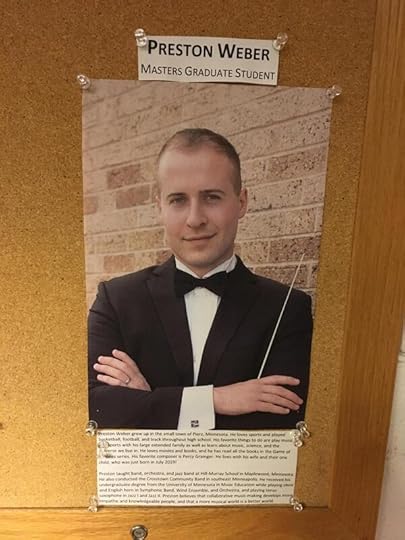 Preston Weber was featured at the University of Minnesota main campus this week.
Preston Weber was featured at the University of Minnesota main campus this week.  A tapper made in honor of my brother John, at Hoffman-Weber Construction. The last blog about Physics has generated great feedback and there was a request I talk a little about Synchronicity and the beliefs of Psychoanalyst Carl Jung and Physicist Wolfgang Pauli. If this blog seems a little “out there,” it’s because it pushes one to consider the years of thought a psychologist (Jung) and a physicist (Pauli) put into examining the interconnectedness of humanity. I promise to get back to forensics with the next blog. We all have seen connections we attribute to “coincidence” or in science they might attribute to a “spurious correlation.” (A 3rd factor creating the connection that isn’t obvious at the moment.) An example of a spurious correlation is that rape and ice sales both increase at the same time, even though one doesn’t cause the other. Both increase in summer.
A tapper made in honor of my brother John, at Hoffman-Weber Construction. The last blog about Physics has generated great feedback and there was a request I talk a little about Synchronicity and the beliefs of Psychoanalyst Carl Jung and Physicist Wolfgang Pauli. If this blog seems a little “out there,” it’s because it pushes one to consider the years of thought a psychologist (Jung) and a physicist (Pauli) put into examining the interconnectedness of humanity. I promise to get back to forensics with the next blog. We all have seen connections we attribute to “coincidence” or in science they might attribute to a “spurious correlation.” (A 3rd factor creating the connection that isn’t obvious at the moment.) An example of a spurious correlation is that rape and ice sales both increase at the same time, even though one doesn’t cause the other. Both increase in summer.Consider this: 25 years ago, I shared with Brenda that I would like to leave my work with DHS and start my own company, CORE. She, along with my colleagues, discouraged it, since I was a Psychologist 3 (the highest status at the time). I was the youngest psychologist in the system, and the state has great health benefits. I had a dream that I was flying over a beach and I could see all of my work colleagues holding hands on the sand, but I wasn’t among them. I continued to fly until I saw myself sitting at the ocean’s edge, alone, but happy. When I woke up, I knew I was quitting my job. Carl Jung called this concept synchronicity. Jung believed there is information, that only we understand, which comes to us by an underlying connection we all share.
I went to my father-in-law, Rod Brixius, who had guided me to testing into a state job, which got me into the DHS system. I had taught for year, but the school’s insurance didn’t cover the medical bills Brenda and I incurred as a result of our daughter being born with a stomach that wasn’t fully developed. I needed to leave teaching and take a job with decent medical coverage. I felt I needed to go to Rod, who worked for DHS for 43 years, and tell him I was leaving to start my own forensic company. I was expecting him to talk me out of it. Instead he responded, “The ideal state employee is someone who is comfortable with never accomplishing anything. I knew you would never last.” Okay—back to the blog…
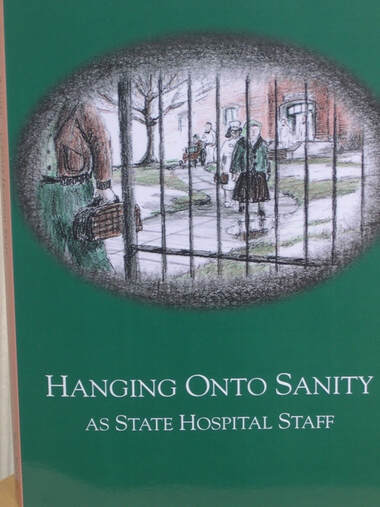 Rod Brixius' book, Hanging Onto Sanity, which tells true stories of his work at Brainerd Regional Center. Carl Jung was 19 years younger than Sigmund Freud. Jung was initially and admirer of Freud’s work. Eventually, Jung felt Freud’s psychoanalysis was unnecessarily negative (which I agree with). Freud, who was very popular at the time, rejected Jung’s work and Carl went through a period of depression. (In my opinion Jung should have been elated.) Carl Jung retreated to a beach, and found playing in the sand on the beach helped him work through it. (Sand therapy developed from this. This is why you can find small sand boxes in some therapist's offices.) Walking along a beach or a river works for me! As I explain this, it’s important for me to point out this isn’t how I provide therapy.
Rod Brixius' book, Hanging Onto Sanity, which tells true stories of his work at Brainerd Regional Center. Carl Jung was 19 years younger than Sigmund Freud. Jung was initially and admirer of Freud’s work. Eventually, Jung felt Freud’s psychoanalysis was unnecessarily negative (which I agree with). Freud, who was very popular at the time, rejected Jung’s work and Carl went through a period of depression. (In my opinion Jung should have been elated.) Carl Jung retreated to a beach, and found playing in the sand on the beach helped him work through it. (Sand therapy developed from this. This is why you can find small sand boxes in some therapist's offices.) Walking along a beach or a river works for me! As I explain this, it’s important for me to point out this isn’t how I provide therapy. 
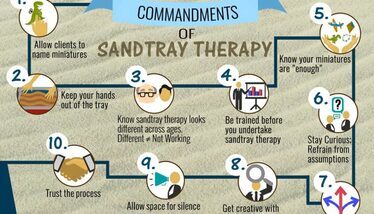 Quick criticism of Freud: Sigmund reported to be an atheist. While Sigmund believed nothing is said or done by accident, he frequently made references to God in his personal letters, with comments like, “God willing,” or “with God’s grace.” With that said, I’m not a Freud hater or lover for that matter. He was right about enough. He was sexist and homophobic, and totally misunderstood social problems (for example, describing women’s desire for equal rights as penis-envy), but he was right about enough to deserve some credit.
Quick criticism of Freud: Sigmund reported to be an atheist. While Sigmund believed nothing is said or done by accident, he frequently made references to God in his personal letters, with comments like, “God willing,” or “with God’s grace.” With that said, I’m not a Freud hater or lover for that matter. He was right about enough. He was sexist and homophobic, and totally misunderstood social problems (for example, describing women’s desire for equal rights as penis-envy), but he was right about enough to deserve some credit.Carl Jung met with Physicists including Albert Einstein occasionally, and with Wolfgang Pauli frequently to discuss abstract thoughts like the collective unconscious and synchronicity. Ironically, when Pauli died, his spouse was encouraged by physicists to keep Pauli's discussions with Jung out of his memoirs since psychoanalysis lacked scientific evidence. (She did omit it.)
Wolfgang Pauli was an Austrian-born physicist and recipient of the 1945 Nobel Prize for Physics for his discovery, in 1925, of the Pauli exclusion principle, which states that no two electrons can occupy the same quantum state simultaneously in an atom. Pauli was a perfectionist and criticized people heavily for ideas not supported by scientific evidence. (Ironically, objects in the lab had a tendency to accidently break in his presence, which even Wolfgang learned to make light of.) The fact that Pauli had Carl Jung interpreting his dreams and they discussed the idea that we all may be spiritually connected (a concept they referred to synchronicity) didn’t sit well with his scientific community. But I understand it. As an expert witness, I rely on scientific evidence, but that doesn’t minimize my spiritual beliefs.

 This note was written by Pauli to Jung. Werner Heisenberg — of uncertainty principle fame — wrote:
This note was written by Pauli to Jung. Werner Heisenberg — of uncertainty principle fame — wrote:Behind [Pauli’s] outward display of criticism and skepticism lay concealed a deep philosophical interest even in those dark areas of reality of the human mind which elude the grasp of reason... Pauli’s analyses of physical problems was admittedly due to the detailed and penetrating clarity of his formulations, the rest was derived from a constant contact with the field of creative processes, for which no rational formulation as yet exists.
Synchronicity = Events in which the observer experiences as having a meaningful connection, on the basis of her or his subjective situation, are purposeful, even if they occur with no causal relationship.
Example of synchronicity: A therapist told me of placing a child from a neglectful family with a couple. The child had no toys, and only a picture of a doll. When the caring couple arrived to pick up the child, they had brought that very doll, even though there had been no conversation of it.
Collective unconscious = Part of the conscious mind is derived from ancestral memory and this experience is common to all humans. Carl Jung believed the mother-child relationship and the father-child relationship were part of the collective unconscious. A significant number of people believe this, even if they don’t understand it. For example: Muslims pray at the same time of day to spiritually connect with others who are praying at the same time.
 Example of the collective unconscious: A student of mine had a recurring dream (5 days in a row) that people close to her were pregnant. After the fifth dream, she found out her cousin, who is very close to her, just learned she was pregnant. Jung would argue that the student knew, because we are all connected.
Example of the collective unconscious: A student of mine had a recurring dream (5 days in a row) that people close to her were pregnant. After the fifth dream, she found out her cousin, who is very close to her, just learned she was pregnant. Jung would argue that the student knew, because we are all connected. Is the theory of a collective unconscious that far out there? Maybe not. Consider this. A newborn infant roots for a nipple and begins sucking, with no education on how or why to do this. Where does that understanding come from? Even going beyond the spiritual implications, consider: Everything on earth has been created from elements that have been on earth for centuries and generations. Nothing ever truly goes away. It simply takes different forms. We are connected…
To quote Carl Jung:
Those who look outside, dream;
Those who look inside, awaken.
There is no coming to consciousness without pain.
Everything that irritates us about others, can lead us to an understanding of ourselves.
In all chaos there is a cosmos, in all disorder a secret order.
Knowing your own darkness is the best method for dealing with the darkness of other people.
The most terrifying thing is to accept oneself completely.
The shoe that fits one person, pinches another; there is no recipe for living that suits all cases.
Neurosis is always a substitute for legitimate suffering.
We cannot change anything until we accept it. Condemnation does not liberate; it oppresses.
The healthy man does not torture others- generally it is the tortured who turn to torture.
Carl Jung, Swiss Psychiatrist
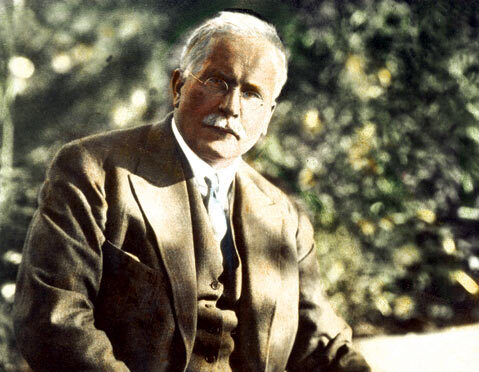 I am not what happened to me. I am what I chose to become. Carl Jung
I am not what happened to me. I am what I chose to become. Carl JungThanks for listening,
Frank Upcoming Events:On Sunday, March 8, 2020 presenting on forensic work and the writing of True Crime mysteries at Tamarack Tap Room from 2:00 to 3:00 in Woodbury. Frank will be at Tamarack from 11:00 to 4:00 signing and selling books and answering questions about his work. Tamarack is the new “hot spot” in Woodbury featuring tap brewed at various breweries throughout the state and a great menu. Stop in and have a cold beverage and ask the questions you’d love to ask about forensic work or forensic shows. Frank will be sharing a little about what they get wrong on movies and TV. Cover model, Elise Yates, will be present, dressed as she is on the cover of Last Call. She will be available for pictures with patrons. Tamarack is located at 8418 Tamarack Village in Woodbury, Minnesota.
 Tuesday, March 10, 2020, presentation at 6:00 p.m. on Last Call and forensic psychology at the
Maple Plain Library
in Hennepin County located at 5184 Main Street East, Maple Plain, Minnesota. Book signing, and questions (on forensics and writing true crime) answered before, during and after presentation.March 12, 2020, speaking on Forensic Psychology and forensic techniques used in investigations, in the auditorium at Brainerd High School from 10:00 to 10:40 a.m. on March 12, 2020. Brainerd High School is located at 702 South Fifth Street, Brainerd, Minnesota.Saturday, March 14, 2020, presenting on his newest mystery, Last Call, and answering questions about forensic work at the
New York Mills Library
at 10:30 a.m. Frank will speak for approximately one hour and will be at the library before and after the presentation to sign and sell books and answer questions related to forensics or true crime writing. The New York Mills Public library is located at 30 Main Avenue North, New York Mills, Minnesota.Thursday, March 19, speaking at the Senior Center in Sartell from 9:00 a.m. to 10:30 a.m. on the writing of True Crime mystery and my forensic work. It’s a chance to get your questions answered about forensics, learn some new forensic techniques, and hear about what they get wrong in movies. Last Call begins in Brainerd and ends in St. Cloud, identifying actual business and places in the Minnesota communities. I will be at the Senior Center both before and after my presentation signing and selling books. The Senior Center is located at 850 19th Street South, Sartell, Minnesota.March 20, 2020, Friday, presentation from 6:30 to 7:30 to the Belgrade book club and general public on the writing of true crime novels at Belgrade Public Library. The Belgrade Library is located at 324 Washburn Ave, Belgrade, Minnesota.On Saturday, March 21, 2020 Frank Weber will speaking on forensic work and the writing of True Crime mysteries at
Southern Star Brewing
in Conroe, Texas from 6:00 to 7:00 p.m. Frank is the individual who’s called in to perform assessments in homicide and sexual assault cases. He has profiled cold case homicides and recently narrated an episode of Murdered by Morning, an investigative show on the Oxygen channel. Frank will be at Southern Star Brewing from 5:00 to 9:00 signing and selling books and answering questions about his work. There’s nothing better than a cold Southern Star beer on a hot night in Texas! Southern Star was the first taproom to can beer in Texas, and trust me, they brew it right! Stop in and have a cold beverage and ask the questions you’d love to ask about forensic work or forensic shows. Frank will be sharing a little about what they get wrong on movies and TV. Southern Star Brewery is located at 3525 North Frazier Street, Conroe, Texas.
Tuesday, March 10, 2020, presentation at 6:00 p.m. on Last Call and forensic psychology at the
Maple Plain Library
in Hennepin County located at 5184 Main Street East, Maple Plain, Minnesota. Book signing, and questions (on forensics and writing true crime) answered before, during and after presentation.March 12, 2020, speaking on Forensic Psychology and forensic techniques used in investigations, in the auditorium at Brainerd High School from 10:00 to 10:40 a.m. on March 12, 2020. Brainerd High School is located at 702 South Fifth Street, Brainerd, Minnesota.Saturday, March 14, 2020, presenting on his newest mystery, Last Call, and answering questions about forensic work at the
New York Mills Library
at 10:30 a.m. Frank will speak for approximately one hour and will be at the library before and after the presentation to sign and sell books and answer questions related to forensics or true crime writing. The New York Mills Public library is located at 30 Main Avenue North, New York Mills, Minnesota.Thursday, March 19, speaking at the Senior Center in Sartell from 9:00 a.m. to 10:30 a.m. on the writing of True Crime mystery and my forensic work. It’s a chance to get your questions answered about forensics, learn some new forensic techniques, and hear about what they get wrong in movies. Last Call begins in Brainerd and ends in St. Cloud, identifying actual business and places in the Minnesota communities. I will be at the Senior Center both before and after my presentation signing and selling books. The Senior Center is located at 850 19th Street South, Sartell, Minnesota.March 20, 2020, Friday, presentation from 6:30 to 7:30 to the Belgrade book club and general public on the writing of true crime novels at Belgrade Public Library. The Belgrade Library is located at 324 Washburn Ave, Belgrade, Minnesota.On Saturday, March 21, 2020 Frank Weber will speaking on forensic work and the writing of True Crime mysteries at
Southern Star Brewing
in Conroe, Texas from 6:00 to 7:00 p.m. Frank is the individual who’s called in to perform assessments in homicide and sexual assault cases. He has profiled cold case homicides and recently narrated an episode of Murdered by Morning, an investigative show on the Oxygen channel. Frank will be at Southern Star Brewing from 5:00 to 9:00 signing and selling books and answering questions about his work. There’s nothing better than a cold Southern Star beer on a hot night in Texas! Southern Star was the first taproom to can beer in Texas, and trust me, they brew it right! Stop in and have a cold beverage and ask the questions you’d love to ask about forensic work or forensic shows. Frank will be sharing a little about what they get wrong on movies and TV. Southern Star Brewery is located at 3525 North Frazier Street, Conroe, Texas.  Sunday, March 22, 2020 Frank Weber will speaking on forensic work and the writing of True Crime mysteries at Saloon Door Brewing from 3:00 to 4:00 in Webster, Texas. Frank is the individual who’s called in to perform assessments in homicide and sexual assault cases. He has profiled cold case homicides and recently narrated an episode of Murdered by Morning, an investigative show on the Oxygen channel. Frank will be at Saloon Door Brewing from 1:00 to 6:00 signing and selling books and answering questions about his work. Saloon Door Brewing is a comfortable, very chill environment. Stop in and have a cold beverage and ask the questions you’d love to ask about forensic work or forensic shows. Frank will be sharing a little about what they get wrong on movies and TV. Saloon Door Brewing is located at 105 A Magellan Circle, Webster, Texas.
Sunday, March 22, 2020 Frank Weber will speaking on forensic work and the writing of True Crime mysteries at Saloon Door Brewing from 3:00 to 4:00 in Webster, Texas. Frank is the individual who’s called in to perform assessments in homicide and sexual assault cases. He has profiled cold case homicides and recently narrated an episode of Murdered by Morning, an investigative show on the Oxygen channel. Frank will be at Saloon Door Brewing from 1:00 to 6:00 signing and selling books and answering questions about his work. Saloon Door Brewing is a comfortable, very chill environment. Stop in and have a cold beverage and ask the questions you’d love to ask about forensic work or forensic shows. Frank will be sharing a little about what they get wrong on movies and TV. Saloon Door Brewing is located at 105 A Magellan Circle, Webster, Texas.  On Monday, March 23, 2020 Frank Weber will speaking on forensic work and the writing of True Crime mysteries at
Platypus Brewing
from 6:00 to 7:00 in Houston, Texas. Frank is the individual who’s called in to perform assessments in homicide and sexual assault cases. He has profiled cold case homicides and recently narrated an episode of Murdered by Morning, an investigative show on the Oxygen channel. Frank will be at Platypus from 5:00 to 8:00 signing and selling books and answering questions about his work. Platypus Brewing has Australian inspired comfort food and comfortable seating. Stop in and have a cold beverage and ask the questions you’d love to ask about forensic work or forensic shows. Frank will be sharing a little about what they get wrong on movies and TV. Platypus Brewery is located at 1902 Washington Avenue, Suite E, Houston, Texas.
On Monday, March 23, 2020 Frank Weber will speaking on forensic work and the writing of True Crime mysteries at
Platypus Brewing
from 6:00 to 7:00 in Houston, Texas. Frank is the individual who’s called in to perform assessments in homicide and sexual assault cases. He has profiled cold case homicides and recently narrated an episode of Murdered by Morning, an investigative show on the Oxygen channel. Frank will be at Platypus from 5:00 to 8:00 signing and selling books and answering questions about his work. Platypus Brewing has Australian inspired comfort food and comfortable seating. Stop in and have a cold beverage and ask the questions you’d love to ask about forensic work or forensic shows. Frank will be sharing a little about what they get wrong on movies and TV. Platypus Brewery is located at 1902 Washington Avenue, Suite E, Houston, Texas.  March 27, 2020, speaking on most recent thriller, Last Call, at the Lunch & Learn event at 12:00 noon at
The Center
in Brainerd. Frank will be at The Center signing and selling books both before and after the his presentation. The Center is located at 803 Kingwood Street, Brainerd, Minnesota.Thursday, April 2, 2020, speaking on “The Sudden Rise of True Crime” panel with a true crime podcaster, judge, author, at the Bloomington Center for the Arts from 7:00 p.m. to 8:30 p.m. A reception, cash bar and appetizers in the lobby will follow. The Bloomington Center for the Arts is located at 1800 West Old Shakopee Road, Bloomington, Minnesota.On Saturday, April 4, 2020 Frank Weber will speaking on forensic work and the writing of True Crime mysteries at
Shakopee Brewhall
from 6:00 to 7:00 in Shakopee, Minnesota. Frank will be at Shakopee Brewhall from 5:00 to 8:00 signing and selling books and answering questions about his work. Cover Model, Elise Yates, will make a special appearance, dressed as she is on the cover of Last Call, and will pose for pictures with patrons. Shakopee Brewing is about great beer! Stop in and have a cold beverage and ask the questions you’d love to ask about forensic work or forensic shows. Frank will be sharing a little about what they get wrong on movies and TV. Shakopee Brewhall is located at 124 1st Avenue East, Shakopee, Minnesota.
March 27, 2020, speaking on most recent thriller, Last Call, at the Lunch & Learn event at 12:00 noon at
The Center
in Brainerd. Frank will be at The Center signing and selling books both before and after the his presentation. The Center is located at 803 Kingwood Street, Brainerd, Minnesota.Thursday, April 2, 2020, speaking on “The Sudden Rise of True Crime” panel with a true crime podcaster, judge, author, at the Bloomington Center for the Arts from 7:00 p.m. to 8:30 p.m. A reception, cash bar and appetizers in the lobby will follow. The Bloomington Center for the Arts is located at 1800 West Old Shakopee Road, Bloomington, Minnesota.On Saturday, April 4, 2020 Frank Weber will speaking on forensic work and the writing of True Crime mysteries at
Shakopee Brewhall
from 6:00 to 7:00 in Shakopee, Minnesota. Frank will be at Shakopee Brewhall from 5:00 to 8:00 signing and selling books and answering questions about his work. Cover Model, Elise Yates, will make a special appearance, dressed as she is on the cover of Last Call, and will pose for pictures with patrons. Shakopee Brewing is about great beer! Stop in and have a cold beverage and ask the questions you’d love to ask about forensic work or forensic shows. Frank will be sharing a little about what they get wrong on movies and TV. Shakopee Brewhall is located at 124 1st Avenue East, Shakopee, Minnesota.  It only seems appropriate to include a clip of the excellent Minnesota band, Collective Unconscious.
It only seems appropriate to include a clip of the excellent Minnesota band, Collective Unconscious.
Published on February 24, 2020 11:42
February 17, 2020
It all started with a Big Bang!

 Bad Habit was packed (on a day they are not usually open) this week as we discussed Last Call. Each chapter in my next book, Lying Close, is introduced with a physics or other science theory. I’ve learned some interesting information in my research for this book (that didn’t fit into the book) that I’ll share a little of below.
Bad Habit was packed (on a day they are not usually open) this week as we discussed Last Call. Each chapter in my next book, Lying Close, is introduced with a physics or other science theory. I’ve learned some interesting information in my research for this book (that didn’t fit into the book) that I’ll share a little of below.
For example, Big Bang theory was proposed by a Catholic Priest. Georges Henri Joseph Édouard Lemaître, a Jesuit educated Belgian Catholic priest, mathematician, astronomer, and professor of physics at the Catholic University of Louvain. Father Lemaitre expanded on the work of Albert Einstein. He was the first to propose that the recession of nearby galaxies could be explained by a theory of an expanding universe. Father Lemaitre’s theory was observationally confirmed soon afterwards by Edwin Hubble. Lemaitre was the first to derive what is now known as Hubble's law, or the Hubble–Lemaître law, and made the first estimation of what is now called the Hubble constant, which he published in 1927 (two years before Hubble's article). Reverand Lemaître's proposal of the "Big Bang theory" of the origin of the universe was initially called the "hypothesis of the primeval atom."
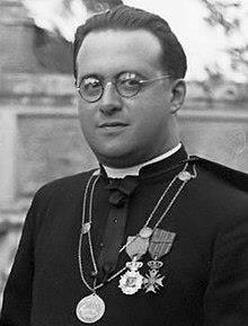 Georges Lemaître Reverand Lemaitre believed that science and religion are intertwined. I agree. The fact that the theory was suggested by a Priest surprised me as I remember being told when I was younger that the Big Bang theory went against religion. (I never agreed with this interpretation.)
Georges Lemaître Reverand Lemaitre believed that science and religion are intertwined. I agree. The fact that the theory was suggested by a Priest surprised me as I remember being told when I was younger that the Big Bang theory went against religion. (I never agreed with this interpretation.) 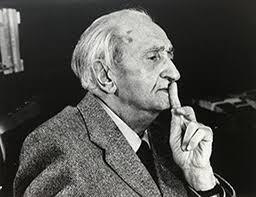 Leopold Szondi, Hungarian Psychiatrist, was deported with his family to Bergen-Belsen concentration camp on the Kastner train in June of 1944. After 1700 American intellectuals paid a large ransom to Adolf Eichmann, Szondi, his family, and other prominent intellectuals were released to Switzerland in December 1944. Szondi developed a theory of sadism, called Drive Theory. Drive Theory proposes that sadism is not restorative in intent. Behaviorally, it is aggression for its own sake, and is driven by unstrained biological urges.
Leopold Szondi, Hungarian Psychiatrist, was deported with his family to Bergen-Belsen concentration camp on the Kastner train in June of 1944. After 1700 American intellectuals paid a large ransom to Adolf Eichmann, Szondi, his family, and other prominent intellectuals were released to Switzerland in December 1944. Szondi developed a theory of sadism, called Drive Theory. Drive Theory proposes that sadism is not restorative in intent. Behaviorally, it is aggression for its own sake, and is driven by unstrained biological urges.  The Szondi test: The subject is asked to describe the above pictures. The aim was to explore the deepest repressed impulses of a person on the basis of sympathy or aversion caused by the specific photos of psychopaths. The Szondi test is based on the general notion that the characteristics that bother us in others, are those that caused aversion to ourselves at an early stage of our life. In 1961, the test developed by Szondi was used by Israeli judges to test the same Adolf Eichmann who had Szondi arrested, during Eichmann’s 1961 trial.
The Szondi test: The subject is asked to describe the above pictures. The aim was to explore the deepest repressed impulses of a person on the basis of sympathy or aversion caused by the specific photos of psychopaths. The Szondi test is based on the general notion that the characteristics that bother us in others, are those that caused aversion to ourselves at an early stage of our life. In 1961, the test developed by Szondi was used by Israeli judges to test the same Adolf Eichmann who had Szondi arrested, during Eichmann’s 1961 trial.
Leopold Szondi was widely acknowledged as an internationally renowned psychoanalyst, Szondi proposed what he called "the family unconscious." He felt the genes of our ancestors are present in our unconscious and influence our choices.
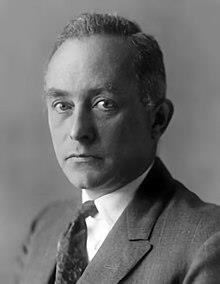
 German Physicst Max Born was instrumental in the development of Quantum Physics and wrote the popular college textbook Atomic Physics. Max’s daughter, Irene, became engaged to Welshman Brinley (Bryn) Newton-John. His granddaughter is Olivia Newton John.
German Physicst Max Born was instrumental in the development of Quantum Physics and wrote the popular college textbook Atomic Physics. Max’s daughter, Irene, became engaged to Welshman Brinley (Bryn) Newton-John. His granddaughter is Olivia Newton John.
And perhaps one of the more intriguing stories was of Max Plank. Max Karl Ernst Ludwig Planck was a German theoretical physicist whose discovery of energy quanta won him the Nobel Prize in Physics in 1918. Max Planck was a classical pianist and revolutionary physicist. Planck is credited with the origin of Quantum theory. Plank played piano and cello and composed operas.
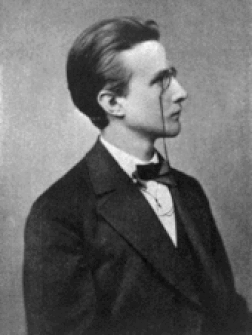
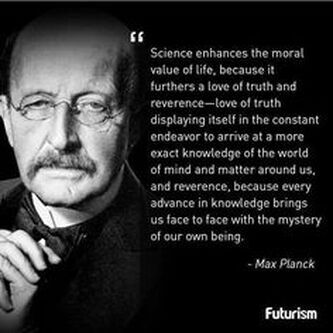 Max Planck
Max PlanckIn March 1887, Max married Marie Merck (1861–1909), sister of a school fellow, and moved with her into a sublet apartment in Kiel. They had four children: Karl (1888–1916), the twins Emma (1889–1919) and Grete (1889–1917), and Erwin (1893–1945).
Here is how the lives of Max’s family tragically ended:
Marie Merck died from tuberculosis in 1909. During World War I, his oldest son Karl was killed in action at Verdun. His son, Erwin, was taken prisoner by the French in 1914. (I’ll describe his tragic death in the next paragraph.) Grete died in 1917, while giving birth to her first child. Emma married Grete’s widower, and also died giving birth, two years later. Both granddaughters survived and were named after their mothers. Planck endured these losses stoically.
Edwin Planck became a deputy minister in 1932, and retained this post when his friend, Kurt Von Schleicher was appointed Reich Chancellor in December. In 1933 Schleicher resigned and Adolf Hitler was appointed Chancellor. Edwin immediately resigned office, and went abroad to East Asia for a year. Shortly after he came back to Germany, Kurt von Schleicher and his wife were shot at their Babelsberg home by members of the Sicherheitsdienst (SD) in the Night of the Long Knives on June 30, 1934. Planck tried in vain to get an explanation for his friend's murder.
Operation Valkyrie: On July 20, 1944, Claus von Stauffenberg and other conspirators (including Edwin Planck) attempted to assassinate Adolf Hitler, Führer of Nazi Germany, inside his Wolf's Lair field headquarters near Rastenburg, East Prussia.
The apparent aim of the assassination attempt was to wrest political control of Germany and its armed forces from the Nazi Party (including the SS) and to make peace with the Western Allies as soon as possible. The plot was the culmination of efforts by several groups in the German resistance to overthrow the Nazi German government. The failure of the assassination attempt and the intended military coup d'état that was to follow led the Gestapo to arrest more than 7,000 people, of whom they executed 4,980. (The assassination attempt was used by Hitler to execute numerous people who had criticized him, but were not necessarily a part of the assassination attempt.)
They had considered shooting Hitler, but Adolf had taken to wearing a bullet proof vest. They also considered poisoning him, but Adolf was having his food tested before he ate. Ultimately, they felt a bomb was the best route. The first bombing attempt was aborted on July 7, as SS Commander Heinrich Himmler wasn’t present. The conspirators felt Himmler and Hermann Goering needed to be killed at the same time. Operation Valkyrie failed. Claus von Stauffenberg placed the single primed bomb inside his briefcase and, entered the conference room containing Hitler and 20 officers. Claus positioned the briefcase under the table near Hitler. After a few minutes, Stauffenberg received a planned telephone call and left the room. Unaware of the significance of the briefcase, Colonel Heinz Brandt, who was standing next to Hitler, used his foot to move the briefcase aside by pushing it behind the leg of the conference table. This deflected the blast from Hitler but caused his own demise and the loss of one of his legs when the bomb detonated.
 On November 29, 1944 Adolf Hitler stated that the Pope was somehow a conspirator, specifically naming Eugenio Pacelli, Pope Pius XII, as being a party in the attempt. Hitler had been unhappy with the Pope and the criticism he was receiving from Christians. In 1943, Hitler had put together a plot to kidnap or murder the Pope. Evidence indicates that the Valkyrie plotters Colonel Wessel von Freytag-Loringhoven, Colonel Erwin von Lahousen, and Admiral Wilhelm Canaris were involved in the foiling of Hitler's alleged plot to kidnap or murder Pope Pius XII, when Canaris reported the plot to Italian counterintelligence officer General Cesare Amè, who passed on the information.
On November 29, 1944 Adolf Hitler stated that the Pope was somehow a conspirator, specifically naming Eugenio Pacelli, Pope Pius XII, as being a party in the attempt. Hitler had been unhappy with the Pope and the criticism he was receiving from Christians. In 1943, Hitler had put together a plot to kidnap or murder the Pope. Evidence indicates that the Valkyrie plotters Colonel Wessel von Freytag-Loringhoven, Colonel Erwin von Lahousen, and Admiral Wilhelm Canaris were involved in the foiling of Hitler's alleged plot to kidnap or murder Pope Pius XII, when Canaris reported the plot to Italian counterintelligence officer General Cesare Amè, who passed on the information.  The Pope issued 55 protests about Nazi actions during Hitler’s regime
The Pope issued 55 protests about Nazi actions during Hitler’s regime 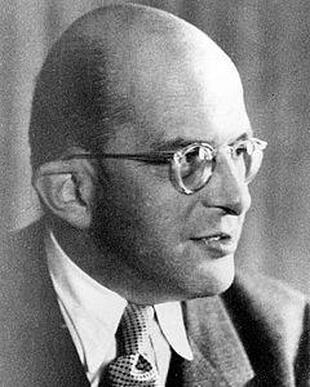 Erwin Planck
Erwin PlanckIn January 1945, Erwin Planck, to whom Max was close, was sentenced to death by the Nazi Volksgerichtshof because of Edwin’s participation in the failed assignation attempt. Erwin was executed on January 23, 1945. Max Planck wrote a letter to Adolf Hitler pleading with Hitler to spare his son’s life, but it was ignored.
The phrase, “Desperate times call for desperate measures,” can be traced all the way back Hippocrates, 400 years before the birth of Jesus.
Thanks for listening,
Frank
Published on February 17, 2020 17:42
February 10, 2020
Jerome Haaf
 Tuesday, February 11, 2020, presentation from 6:00-7:00 on forensic work and the writing of True Crime mysteries at Bad Habit Brewing in St. Joseph. Frank will be at the brewery signing and selling books from 5:00 to 8:00. This will be a great time with a guest appearance by the cover model, Elise Yates, dressed as she is on the cover. She will be available for pictures with attendees. Stop in and have a cold beverage and ask the questions you’d love to ask about forensic work or forensic shows. Frank will be sharing a little about what they get wrong on movies and TV. Bad Habit is located at 25 College Ave North, St Joseph, Minnesota.
Tuesday, February 11, 2020, presentation from 6:00-7:00 on forensic work and the writing of True Crime mysteries at Bad Habit Brewing in St. Joseph. Frank will be at the brewery signing and selling books from 5:00 to 8:00. This will be a great time with a guest appearance by the cover model, Elise Yates, dressed as she is on the cover. She will be available for pictures with attendees. Stop in and have a cold beverage and ask the questions you’d love to ask about forensic work or forensic shows. Frank will be sharing a little about what they get wrong on movies and TV. Bad Habit is located at 25 College Ave North, St Joseph, Minnesota.  I had an amazing week last week. The people at the Dock Café in Stillwater were great and I was still laughing at a couple of the questions when I left. I can’t thank people enough at Forgotten Star Brewing in Fridley. Saturday was a blast and we all agreed we need to do this again. They’ll touch up the mic, and we will do this even better. Lots of wonderful people and they serve an excellent Cream Ale! Remember Jerome Haaf: A good man died for no reason.
I had an amazing week last week. The people at the Dock Café in Stillwater were great and I was still laughing at a couple of the questions when I left. I can’t thank people enough at Forgotten Star Brewing in Fridley. Saturday was a blast and we all agreed we need to do this again. They’ll touch up the mic, and we will do this even better. Lots of wonderful people and they serve an excellent Cream Ale! Remember Jerome Haaf: A good man died for no reason.Police officer, Jerome Haaf, was executed by members of the Vice Lords, for simply being a police officer. Jerome was a traffic officer who had been on the job for 30 years. Jerome and his wife had recently bought an RV and were planning to tour the U.S. upon his retirement (which was only 3 months away).
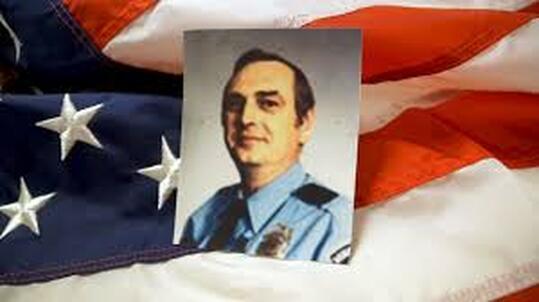 September 25, 1992: Jerome Haaf is sitting at the Pizza Shack having a cup of coffee and finishing his paperwork as his shift was coming to an end at 1:45 a.m. The Pizza Shack on Lake Street and 17th Avenue in Minneapolis had been known as a “cop shop,” as police officers typically finished their paperwork at this location.
September 25, 1992: Jerome Haaf is sitting at the Pizza Shack having a cup of coffee and finishing his paperwork as his shift was coming to an end at 1:45 a.m. The Pizza Shack on Lake Street and 17th Avenue in Minneapolis had been known as a “cop shop,” as police officers typically finished their paperwork at this location. The Vice Lords wanted to kill a cop. Any cop. Jerry Haaf was shot in the back by members of the Vice Lords. It was reported to be in retaliation for an incident a day before in which police picked up a blind man who evaded bus fare. Gang members said police beat him. Officer Haaf had nothing to do with the incident.
Gang member A.C. Ford Jr. would ultimately be quoted as saying, just before the shooting: “You all ready to do this? This is what we are going to do. We are going to walk up on the number five bus line and shoot the bus driver.”
“No man, you must be crazy,” Monterey Willis replied.
“All right, then let’s do the Pizza Shack,” Ford responded.
Shannon Bowles was the shooter. Some reports suggest Mwati McKenzie was also a shooter. Officer Haaf was shot multiple times in the back, and then the shooter(s) fled. Officer Haaf radioed for help as he was lying on the floor dying. Jerome Haaf was survived by his wife and three children. The funeral was held at St. Helena’s Catholic Church and was attended by 1200 officers from throughout the state.
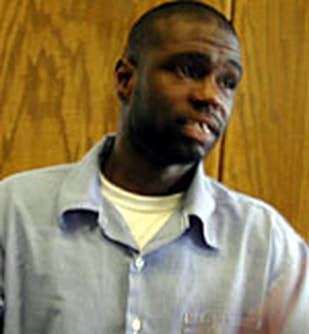 Mwati McKenzie still protests that he wasn’t given a fair trial. Minneapolis police picked up a gang member shortly after the shooting to question him. The gang member revealed nothing. Within 6 hours the man they interviewed was found dead. The Vice Lords had sent a message to the community that no one talks. Police were determined to solve this, and they did.
Mwati McKenzie still protests that he wasn’t given a fair trial. Minneapolis police picked up a gang member shortly after the shooting to question him. The gang member revealed nothing. Within 6 hours the man they interviewed was found dead. The Vice Lords had sent a message to the community that no one talks. Police were determined to solve this, and they did.
Shannon Bowles, the man who pulled the trigger, Mwati (Pepi) McKenzie, A.C. Ford Jr. (who later changed his name to Adl El-Shabazz), and Monterey Willis went to prison. Bowles received a prison sentence of life without parole. McKenzie is currently surviving his sentence at Oak Park Heights Correctional Facility and is eligible for parole in 2093. A.C. Ford and Monterey Willis were also sentenced to life for their part in planning the murder, driving the getaway cars and supplying the guns.
 Prosecutors believe that the Haaf shooting was planned in the home of United for Peace President Sharif Willis, a Vice Lord leader, by other Vice Lords. Although they do not contend that Willis was involved, he has been tainted by the association. One of the defendants is Willis’ nephew. After serving some time for a drug charge, Sharif Willis returned to Minneapolis to attempt to assist with reducing the killings by gangs.
Prosecutors believe that the Haaf shooting was planned in the home of United for Peace President Sharif Willis, a Vice Lord leader, by other Vice Lords. Although they do not contend that Willis was involved, he has been tainted by the association. One of the defendants is Willis’ nephew. After serving some time for a drug charge, Sharif Willis returned to Minneapolis to attempt to assist with reducing the killings by gangs.Before the shooting, the Minneapolis police were working with United for Peace, a coalition of gang leaders formed to reduce gang-on-gang violence and get “gangbangers” into jobs and school. The group had been enlisted by police to help defuse more than one tense street altercation. After Haaf’s murder, Police Chief John Laux formally severed police ties to United for Peace.
The solution to reducing violence is complicated. Here are some of the moving parts:
- People who grew up in poverty who need things to be more fair.
- Some great officers who are working a thankless job.
- Some officers who shouldn’t be officers. A police chief who is trying to clean it up, but when he terminates 11 officers, the union forces him to take 6 of them back. Imagine what that does to a work environment.
Blaming one side or the other isn’t the solution. Killing innocent people has never been the solution to anything. There are solutions. As bad as it is now, it isn’t as bad as it was. It’s a slow game.
Thanks for listening,
Frank





























































Published on February 10, 2020 05:33
February 6, 2020
Battle on Blood Mountain
On Thursday I am speaking in Stillwater, although this is already a sold out event. Last weekend I had the chance to speak at Hoops Brewing in Duluth. They have a great Stone Cold Light. I had the opportunity to speak to long-time arson investigator, and Vermillion law enforcement instructor, Jim Christensen. I also had a great time speaking at the Sauk Centre Library to people familiar with Richard “Dick” Polipnick (the basis of my Tony Shileto character).
I have a couple big events in the next week:
 Saturday, February 8, 2020, Frank Weber is presenting on forensic work and the writing of True Crime mysteries at Forgotten Star Brewing Co. Speaking from 6:00 to 7:00. Frank will be at Forgotten Star from 4:00 to 8:00 talking to people and signing books. Forgotten Star Brewing is located at 38 Northern Stacks Drive, Fridley, Minnesota.
Saturday, February 8, 2020, Frank Weber is presenting on forensic work and the writing of True Crime mysteries at Forgotten Star Brewing Co. Speaking from 6:00 to 7:00. Frank will be at Forgotten Star from 4:00 to 8:00 talking to people and signing books. Forgotten Star Brewing is located at 38 Northern Stacks Drive, Fridley, Minnesota.
 Tuesday, February 11, 2020, presentation from 6:00-7:00 on forensic work and the writing of True Crime mysteries at Bad Habit Brewing in St. Joseph. Frank will be at the brewery signing and selling books from 5:00 to 8:00. Bad Habit is located at 25 College Ave North, St Joseph, Minnesota. Both Forgotten Star and Bad Habit will be a great time with a guest appearance by the cover model, Elise Yates, dressed as she is on the cover of Last Call. She will be available for pictures with attendees. Stop in and have a cold beverage and ask the questions you’d love to ask about forensic work or forensic shows. Frank will be sharing a little about what they get wrong on movies and TV.
Tuesday, February 11, 2020, presentation from 6:00-7:00 on forensic work and the writing of True Crime mysteries at Bad Habit Brewing in St. Joseph. Frank will be at the brewery signing and selling books from 5:00 to 8:00. Bad Habit is located at 25 College Ave North, St Joseph, Minnesota. Both Forgotten Star and Bad Habit will be a great time with a guest appearance by the cover model, Elise Yates, dressed as she is on the cover of Last Call. She will be available for pictures with attendees. Stop in and have a cold beverage and ask the questions you’d love to ask about forensic work or forensic shows. Frank will be sharing a little about what they get wrong on movies and TV. 

 Battle on Blood Mountain New Years Day, 2008, 24–year-old Meredith Emerson went hiking on Blood Mountain in Georgia. When she didn’t show up for work, a search began. More volunteers showed up than investigators could use, but they didn’t find her in time.
Battle on Blood Mountain New Years Day, 2008, 24–year-old Meredith Emerson went hiking on Blood Mountain in Georgia. When she didn’t show up for work, a search began. More volunteers showed up than investigators could use, but they didn’t find her in time. 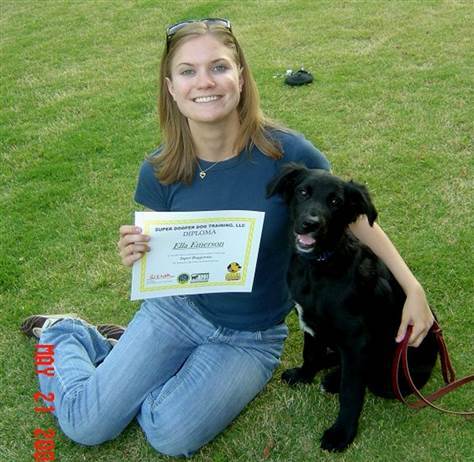 Meredith Emerson is seen with her dog Ella, in this May 2007 photo released by Pat B. Mitchell The search was on. Meredith had been spotted in the woods with a man who was soon identified as Gary Hilton. Gary Hilton frequently camped in the woods, and had a history of hostile encounters with others. Hilton had prior legal charges for scamming others. He was proud of the fact that he never worked a full-time job. Gary helped his attorney write the movie Deadly Run, which involved a killer who befriended women in the woods and then hunted them down. Gary and his attorney began disagreeing about the movie, as Gary wanted it more violent and more sexual. After an argument about the movie, Gary stole his attorney’s dog.
Meredith Emerson is seen with her dog Ella, in this May 2007 photo released by Pat B. Mitchell The search was on. Meredith had been spotted in the woods with a man who was soon identified as Gary Hilton. Gary Hilton frequently camped in the woods, and had a history of hostile encounters with others. Hilton had prior legal charges for scamming others. He was proud of the fact that he never worked a full-time job. Gary helped his attorney write the movie Deadly Run, which involved a killer who befriended women in the woods and then hunted them down. Gary and his attorney began disagreeing about the movie, as Gary wanted it more violent and more sexual. After an argument about the movie, Gary stole his attorney’s dog.
Meredith had been caught by surprise and attacked by Gary Hilton, who saw her hiking. A brutal battle ensued. She wrestled away his knife and baton during parts of the fight, but wasn’t able to take hold of them. He blackened her eyes and broke her nose, but she continued to fight. Georgia Bureau of Investigation Director, Vernon Keenan, told the newspaper, "She nearly got the best of him. She's very much a hero." Hilton stated he told her he just wanted her credit card and PIN number. Hilton avoided established trails as he led Emerson back down from the mountains and placed her and her dog in his van. Meredith bought herself three days by giving Hilton the wrong PIN for her ATM card, telling him each time that the numbers were correct.
While they searched, they began seeing action on Meredith’s ATM card. The user was unable to withdraw money, as he had the wrong pin number. Then Meredith’s dog turned up at a convenience store. Meredith’s purse was found in the dumpster. Police posted pictures of Hilton and his van on the news, and soon received a tip that Hilton was unloading his Astro van by a dumpster. The caller offered to take Hilton down himself, but was encouraged to allow police handle it. On the day Hilton killed Emerson, he told her "she was going home." He secured her to a tree, walked back to his van to collect himself and make coffee, and when he returned, he said Emerson told him: "I was afraid you weren't coming back." He said he walked behind her and hit her several times with the handle from a car jack.
On the day Hilton killed Emerson, he told her "she was going home." He secured her to a tree, walked back to his van to collect himself and make coffee, and when he returned, he said Emerson told him: "I was afraid you weren't coming back." He said he walked behind her and hit her several times with the handle from a car jack.
"That's the one thing that broke my heart in this case," said Georgia agent Clay Bridges, who interviewed Hilton. "She was doing everything she was supposed to do to stay alive, and we didn't get there in time."
The evidence in his van was enough to convict him Hilton and sentence him to life in prison. He had agreed to lead investigators to her body if prosecutors didn't seek the death penalty. When asked why he targeted Meredith, Hilton’s response was, “Because she was a woman.” He added, “You either have to kill them or be arrested.”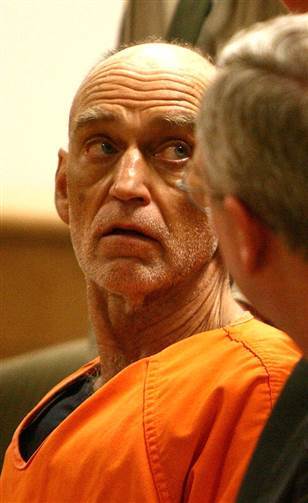 Gary Michael Hilton at his first appearance in Union County Magistrate Court in Blairsville, Ga. on Jan. 7 Gary Hilton was then charged with the murder of Cheryl Dunlap in Florida. Cheryl Dunlap, a 46-year-old nurse, had failed to show up at church to teach her Sunday school religion class. Her car was found abandoned in the woods by Tallahassee. Four days later, investigators realized a man was using Cheryl’s ATM card. On December 15, 2007 (two weeks later), her body, missing head and hands, was found in the forest.
Gary Michael Hilton at his first appearance in Union County Magistrate Court in Blairsville, Ga. on Jan. 7 Gary Hilton was then charged with the murder of Cheryl Dunlap in Florida. Cheryl Dunlap, a 46-year-old nurse, had failed to show up at church to teach her Sunday school religion class. Her car was found abandoned in the woods by Tallahassee. Four days later, investigators realized a man was using Cheryl’s ATM card. On December 15, 2007 (two weeks later), her body, missing head and hands, was found in the forest.
In April 2011, Hilton received a Florida death sentence for the murder of 46-year-old Cheryl Dunlap. Two years later, in 2013, Gary Hilton was sentenced in North Carolina to 4 life sentences for the 2007 deaths of John Bryant, 80, and Irene Bryant, 84. Hilton had been scouting for potential victims before selecting and ambushing the Hendersonville couple who were out for a hike on October 21, 2007. He killed Irene Bryant using blunt force. Her body was later found several yards from where the couple parked their car. Hilton then kidnapped her husband, took his ATM card, and coerced him into providing his personal identification number to access money from an ATM.
Two years later, in 2013, Gary Hilton was sentenced in North Carolina to 4 life sentences for the 2007 deaths of John Bryant, 80, and Irene Bryant, 84. Hilton had been scouting for potential victims before selecting and ambushing the Hendersonville couple who were out for a hike on October 21, 2007. He killed Irene Bryant using blunt force. Her body was later found several yards from where the couple parked their car. Hilton then kidnapped her husband, took his ATM card, and coerced him into providing his personal identification number to access money from an ATM.
Hilton is believed to have killed Rossana Miliani, 26 and Michael Scot Louis, 27, among others. On December 7, 2005, Rossana Miliani disappeared while hiking in Bryson City. A shopkeeper told the police that Miliani, who appeared very nervous, came into her store with an older man who looked to be in his sixties. The witness reported that they purchased clothing and that the man told her he was a traveling preacher. It was later learned that Hilton had stolen Miliani's bank card and was trying to use it. Miliani was beaten to death but Hilton was not charged. On December 6, 2007, the decapitated and dismembered body of Michael Scot Louis was found in Tomoka State Park near Ormond Beach, Florida.
Gary Hilton remains on death row. A judge delayed his appeal in the wake of a U.S. Supreme Court decision in January 2016 declaring Florida's death penalty law unconstitutional.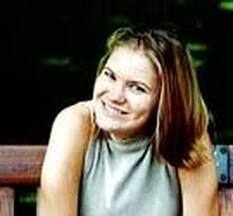 Meredith Emerson’s battle with Hilton is the reason there isn’t more victims. She didn’t give up life easily, and made it difficult for him. Dragging out the process for days enabled the police to organize a search party, broadcast her disappearance on television, and eventually produce a sighting. Meredith is the hero, and the reason some other poor soul didn’t suffer her fate. Thank you!
Meredith Emerson’s battle with Hilton is the reason there isn’t more victims. She didn’t give up life easily, and made it difficult for him. Dragging out the process for days enabled the police to organize a search party, broadcast her disappearance on television, and eventually produce a sighting. Meredith is the hero, and the reason some other poor soul didn’t suffer her fate. Thank you!
And thanks for listening,
Frank
I have a couple big events in the next week:
 Saturday, February 8, 2020, Frank Weber is presenting on forensic work and the writing of True Crime mysteries at Forgotten Star Brewing Co. Speaking from 6:00 to 7:00. Frank will be at Forgotten Star from 4:00 to 8:00 talking to people and signing books. Forgotten Star Brewing is located at 38 Northern Stacks Drive, Fridley, Minnesota.
Saturday, February 8, 2020, Frank Weber is presenting on forensic work and the writing of True Crime mysteries at Forgotten Star Brewing Co. Speaking from 6:00 to 7:00. Frank will be at Forgotten Star from 4:00 to 8:00 talking to people and signing books. Forgotten Star Brewing is located at 38 Northern Stacks Drive, Fridley, Minnesota.
 Tuesday, February 11, 2020, presentation from 6:00-7:00 on forensic work and the writing of True Crime mysteries at Bad Habit Brewing in St. Joseph. Frank will be at the brewery signing and selling books from 5:00 to 8:00. Bad Habit is located at 25 College Ave North, St Joseph, Minnesota. Both Forgotten Star and Bad Habit will be a great time with a guest appearance by the cover model, Elise Yates, dressed as she is on the cover of Last Call. She will be available for pictures with attendees. Stop in and have a cold beverage and ask the questions you’d love to ask about forensic work or forensic shows. Frank will be sharing a little about what they get wrong on movies and TV.
Tuesday, February 11, 2020, presentation from 6:00-7:00 on forensic work and the writing of True Crime mysteries at Bad Habit Brewing in St. Joseph. Frank will be at the brewery signing and selling books from 5:00 to 8:00. Bad Habit is located at 25 College Ave North, St Joseph, Minnesota. Both Forgotten Star and Bad Habit will be a great time with a guest appearance by the cover model, Elise Yates, dressed as she is on the cover of Last Call. She will be available for pictures with attendees. Stop in and have a cold beverage and ask the questions you’d love to ask about forensic work or forensic shows. Frank will be sharing a little about what they get wrong on movies and TV. 

 Battle on Blood Mountain New Years Day, 2008, 24–year-old Meredith Emerson went hiking on Blood Mountain in Georgia. When she didn’t show up for work, a search began. More volunteers showed up than investigators could use, but they didn’t find her in time.
Battle on Blood Mountain New Years Day, 2008, 24–year-old Meredith Emerson went hiking on Blood Mountain in Georgia. When she didn’t show up for work, a search began. More volunteers showed up than investigators could use, but they didn’t find her in time.  Meredith Emerson is seen with her dog Ella, in this May 2007 photo released by Pat B. Mitchell The search was on. Meredith had been spotted in the woods with a man who was soon identified as Gary Hilton. Gary Hilton frequently camped in the woods, and had a history of hostile encounters with others. Hilton had prior legal charges for scamming others. He was proud of the fact that he never worked a full-time job. Gary helped his attorney write the movie Deadly Run, which involved a killer who befriended women in the woods and then hunted them down. Gary and his attorney began disagreeing about the movie, as Gary wanted it more violent and more sexual. After an argument about the movie, Gary stole his attorney’s dog.
Meredith Emerson is seen with her dog Ella, in this May 2007 photo released by Pat B. Mitchell The search was on. Meredith had been spotted in the woods with a man who was soon identified as Gary Hilton. Gary Hilton frequently camped in the woods, and had a history of hostile encounters with others. Hilton had prior legal charges for scamming others. He was proud of the fact that he never worked a full-time job. Gary helped his attorney write the movie Deadly Run, which involved a killer who befriended women in the woods and then hunted them down. Gary and his attorney began disagreeing about the movie, as Gary wanted it more violent and more sexual. After an argument about the movie, Gary stole his attorney’s dog. Meredith had been caught by surprise and attacked by Gary Hilton, who saw her hiking. A brutal battle ensued. She wrestled away his knife and baton during parts of the fight, but wasn’t able to take hold of them. He blackened her eyes and broke her nose, but she continued to fight. Georgia Bureau of Investigation Director, Vernon Keenan, told the newspaper, "She nearly got the best of him. She's very much a hero." Hilton stated he told her he just wanted her credit card and PIN number. Hilton avoided established trails as he led Emerson back down from the mountains and placed her and her dog in his van. Meredith bought herself three days by giving Hilton the wrong PIN for her ATM card, telling him each time that the numbers were correct.
While they searched, they began seeing action on Meredith’s ATM card. The user was unable to withdraw money, as he had the wrong pin number. Then Meredith’s dog turned up at a convenience store. Meredith’s purse was found in the dumpster. Police posted pictures of Hilton and his van on the news, and soon received a tip that Hilton was unloading his Astro van by a dumpster. The caller offered to take Hilton down himself, but was encouraged to allow police handle it.
 On the day Hilton killed Emerson, he told her "she was going home." He secured her to a tree, walked back to his van to collect himself and make coffee, and when he returned, he said Emerson told him: "I was afraid you weren't coming back." He said he walked behind her and hit her several times with the handle from a car jack.
On the day Hilton killed Emerson, he told her "she was going home." He secured her to a tree, walked back to his van to collect himself and make coffee, and when he returned, he said Emerson told him: "I was afraid you weren't coming back." He said he walked behind her and hit her several times with the handle from a car jack."That's the one thing that broke my heart in this case," said Georgia agent Clay Bridges, who interviewed Hilton. "She was doing everything she was supposed to do to stay alive, and we didn't get there in time."
The evidence in his van was enough to convict him Hilton and sentence him to life in prison. He had agreed to lead investigators to her body if prosecutors didn't seek the death penalty. When asked why he targeted Meredith, Hilton’s response was, “Because she was a woman.” He added, “You either have to kill them or be arrested.”
 Gary Michael Hilton at his first appearance in Union County Magistrate Court in Blairsville, Ga. on Jan. 7 Gary Hilton was then charged with the murder of Cheryl Dunlap in Florida. Cheryl Dunlap, a 46-year-old nurse, had failed to show up at church to teach her Sunday school religion class. Her car was found abandoned in the woods by Tallahassee. Four days later, investigators realized a man was using Cheryl’s ATM card. On December 15, 2007 (two weeks later), her body, missing head and hands, was found in the forest.
Gary Michael Hilton at his first appearance in Union County Magistrate Court in Blairsville, Ga. on Jan. 7 Gary Hilton was then charged with the murder of Cheryl Dunlap in Florida. Cheryl Dunlap, a 46-year-old nurse, had failed to show up at church to teach her Sunday school religion class. Her car was found abandoned in the woods by Tallahassee. Four days later, investigators realized a man was using Cheryl’s ATM card. On December 15, 2007 (two weeks later), her body, missing head and hands, was found in the forest.
In April 2011, Hilton received a Florida death sentence for the murder of 46-year-old Cheryl Dunlap.
 Two years later, in 2013, Gary Hilton was sentenced in North Carolina to 4 life sentences for the 2007 deaths of John Bryant, 80, and Irene Bryant, 84. Hilton had been scouting for potential victims before selecting and ambushing the Hendersonville couple who were out for a hike on October 21, 2007. He killed Irene Bryant using blunt force. Her body was later found several yards from where the couple parked their car. Hilton then kidnapped her husband, took his ATM card, and coerced him into providing his personal identification number to access money from an ATM.
Two years later, in 2013, Gary Hilton was sentenced in North Carolina to 4 life sentences for the 2007 deaths of John Bryant, 80, and Irene Bryant, 84. Hilton had been scouting for potential victims before selecting and ambushing the Hendersonville couple who were out for a hike on October 21, 2007. He killed Irene Bryant using blunt force. Her body was later found several yards from where the couple parked their car. Hilton then kidnapped her husband, took his ATM card, and coerced him into providing his personal identification number to access money from an ATM.
Hilton is believed to have killed Rossana Miliani, 26 and Michael Scot Louis, 27, among others. On December 7, 2005, Rossana Miliani disappeared while hiking in Bryson City. A shopkeeper told the police that Miliani, who appeared very nervous, came into her store with an older man who looked to be in his sixties. The witness reported that they purchased clothing and that the man told her he was a traveling preacher. It was later learned that Hilton had stolen Miliani's bank card and was trying to use it. Miliani was beaten to death but Hilton was not charged. On December 6, 2007, the decapitated and dismembered body of Michael Scot Louis was found in Tomoka State Park near Ormond Beach, Florida.
Gary Hilton remains on death row. A judge delayed his appeal in the wake of a U.S. Supreme Court decision in January 2016 declaring Florida's death penalty law unconstitutional.
 Meredith Emerson’s battle with Hilton is the reason there isn’t more victims. She didn’t give up life easily, and made it difficult for him. Dragging out the process for days enabled the police to organize a search party, broadcast her disappearance on television, and eventually produce a sighting. Meredith is the hero, and the reason some other poor soul didn’t suffer her fate. Thank you!
Meredith Emerson’s battle with Hilton is the reason there isn’t more victims. She didn’t give up life easily, and made it difficult for him. Dragging out the process for days enabled the police to organize a search party, broadcast her disappearance on television, and eventually produce a sighting. Meredith is the hero, and the reason some other poor soul didn’t suffer her fate. Thank you!And thanks for listening,
Frank
Published on February 06, 2020 10:32
January 28, 2020
Elder Abuse
Upcoming Events:
Thursday, January 30, 2020, Frank Weber will be discussing forensic work and his latest true crime thriller, Last Call, from 6:00 p.m. to 7:00 p.m. at the Sauk Centre Public Library . Frank will be at the library from 5:00 p.m. to 8:00 p.m. signing books and talking to patrons. The library’s address is: 430 Main Street South, Sauk Centre, Minnesota. February 1, 2020, Saturday presentation from 5:00-6:00 on forensic work and the writing of True Crime mysteries at
Hoops Brewing
in Duluth. Frank will be at the brewery signing and selling books from 4:00 to 7:00. Stop in and have a cold beverage and ask the questions you’d love to ask about forensic work or forensic shows. Frank will be sharing a little about what they get wrong on movies and TV. Hoops Brewing is located at 325 South Lake Avenue, Duluth, Minnesota.
February 1, 2020, Saturday presentation from 5:00-6:00 on forensic work and the writing of True Crime mysteries at
Hoops Brewing
in Duluth. Frank will be at the brewery signing and selling books from 4:00 to 7:00. Stop in and have a cold beverage and ask the questions you’d love to ask about forensic work or forensic shows. Frank will be sharing a little about what they get wrong on movies and TV. Hoops Brewing is located at 325 South Lake Avenue, Duluth, Minnesota.  This blog is about elder abuse. I want to share my responses to an interview arranged By Dave Hill at the Department of Human Services last Friday.
This blog is about elder abuse. I want to share my responses to an interview arranged By Dave Hill at the Department of Human Services last Friday.
Who you are and what you do. Specialize with rehabilitation of offenders. How you got into this line of work, etc. What gave you a passion for this?
Frank Weber, the Clinical Director of CORE Professional Services. We specialize in addressing abuse and provide expert testimony for court. I initially started working with victims, and after I saw the lack of accountability offenders had 25 years ago I complained to the Department of Corrections. They asked me if I’d be interested in developing a program to treat offenders and the rest is history. The program I started, CORE is in it’s 25th year of services, to 60 of the 87 counties in Minnesota. 97% of the offenders who have completed treatment at CORE have never been convicted of a sexual offense again. People with criminal behavior need accountability and guidance to change. In addition to individual, couples and group therapy, the offenders take classes in developing healthy relationships, bring in their family, or healthy friends for support, and are required to pass polygraph examinations.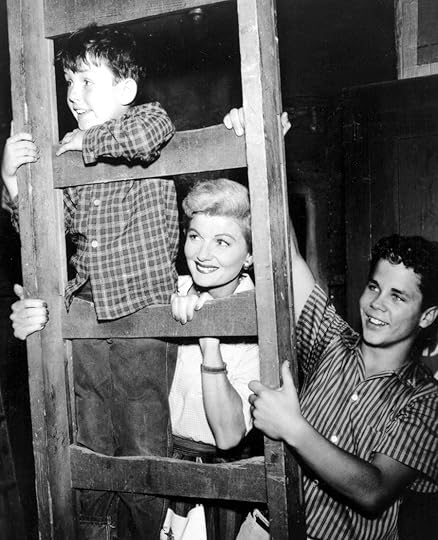 Are sexual assaults really happening to elder nursing home residents and/or vulnerable adults?
Are sexual assaults really happening to elder nursing home residents and/or vulnerable adults?
Yes, they certainly are. While healthy adults find kind and assured people attractive, offenders often find vulnerable people attractive. Elderly people are particularly vulnerable due to memory deficits, communication difficulties, mobility issues and isolation. They may have difficulty reporting, and even when they can report may be too ashamed to tell anyone.
Of particular concern today is that working with the elderly is an easy access to opiates. Both women and men have pursued work with this population specifically for this reason. In addition to the drug issues, we have seen women who have financially exploited the elderly and men who sexually abused the elderly related to their drug addiction. Controlled substances lower inhibitions, and increase self-centeredness, making it easier for people to rationalize taking advantage of others. I’ve had addicts rationalize they’re manipulation of the elderly by stating, “If I was so bad, how come on one ever said anything.”
What are boundaries and how are they crossed?
There’s an old saying that “good fences make good neighbors.” Following good boundaries improves your relationships with others. Boundaries are rules we create regarding our interactions with others. Boundaries are a 2 way street. You need to follow good boundaries and you need to intervene when others are crossing your boundaries. For example, if someone stands too close, I might initially back up. If they do it again, I’ll tell them I’m not comfortable with you standing so close to me.
It's easy to identify the staff with great boundaries. As with children, you have fewer behavioral problems when they’re working, because people behave better when they know the rules are clear. I realize, in facilities you also have events which alter routines and they can result in more difficulties, but it’s something to consider as a general rule of thumb. It’s also important to note that I’m talking about actual behavioral problems, rather than reported behavioral problems. Someone with bad boundaries may not report everything they should, so it may seem on paper that it is not as bad as it really is. You get a better feel for how well boundaries are observed by actually being around the interactions, rather than simply focusing on the data. The data becomes more significant if you can get everyone to report the same behaviors. It’s essential you understand the generational differences about boundaries. People casually make comments today, that people simply didn’t say a generation ago. Many of the elderly grew up watching “Leave it to Beaver.” This was the first television show to display a bathroom, as “the Beave” had a baby alligator he wanted to keep in the bathtub. The episode wasn’t initially allowed to be televised because of the bathroom scene. So many elderly people are much more comfortable with the Hallmark channel because it’s consistent with their boundaries. With this in mind, you need to be careful of the conversations and shows people have around the elderly in their home. In addition, there was a general lack of information about sexuality as it simply wasn’t spoke of. Sigmund Freud wrote a book about Seduction theory, which suggested that some people have problems as adults because they were sexually abused as children. The book was never printed, because people at the time, felt it was something you shouldn’t talk about. So if you’re caring for the elderly, you need to realize that sexual abuse is something very difficult to talk about, and this makes them vulnerable. Like bullies, offenders like to target people who are unlikely to report.
It’s essential you understand the generational differences about boundaries. People casually make comments today, that people simply didn’t say a generation ago. Many of the elderly grew up watching “Leave it to Beaver.” This was the first television show to display a bathroom, as “the Beave” had a baby alligator he wanted to keep in the bathtub. The episode wasn’t initially allowed to be televised because of the bathroom scene. So many elderly people are much more comfortable with the Hallmark channel because it’s consistent with their boundaries. With this in mind, you need to be careful of the conversations and shows people have around the elderly in their home. In addition, there was a general lack of information about sexuality as it simply wasn’t spoke of. Sigmund Freud wrote a book about Seduction theory, which suggested that some people have problems as adults because they were sexually abused as children. The book was never printed, because people at the time, felt it was something you shouldn’t talk about. So if you’re caring for the elderly, you need to realize that sexual abuse is something very difficult to talk about, and this makes them vulnerable. Like bullies, offenders like to target people who are unlikely to report.
Boundaries are essential when you’re dealing with vulnerable people. Many of the people have lost their partners and are lonely. As a result, they may continue to push your boundaries. Some of the men you care for were raised with the notion that it’s okay for men to push the boundaries as far as women allow, and it’s up to women to stop them. You need to be clear and loud with these clients. You also need to report inappropriate behavior as it’s going to difficult to explain when others become aware of it.
On the flip side, you also need to maintain careful boundaries with people who are dependent on you. You’re not their best friend. Be kind and respectful, but if you take over the roll as their best friend, they won’t develop a best friend in their community. Crossing that boundary makes lonely people vulnerable to financial and sexual exploitation. You may find yourself joking about topics, your client feels should be reserved for intimate partners, because you were raised in a different era. They may also share with family how the two of you, have this special relationship, which can put your job in jeopardy. Make comments you would feel comfortable saying in front of your supervisor. If you have conversations you wouldn’t be comfortable having the healthiest person you work with hearing, you need to question your boundaries.
In addition, there is nothing more stressful for any of us, than our own relationship difficulties. It’s common for people to turn to work to fill in the missing intimacy. It’s essential when you’re stressed, that you exhibit clear, healthy boundaries. A litmus test can be, name the two closest people you share your personal problems with. If one is someone you are paid to care for, you have boundary issues that need to be addressed. Explain the concept of safety planning. How do you train offenders in this concept?
Explain the concept of safety planning. How do you train offenders in this concept?
The purpose of safety planning is to warn you of feelings and situations that put you at risk to make bad choices and make a prevention plan when they occur. When I’m stressed or depressed, I know who I’ll talk to. I’ll increase my physical activity as exercise helps combat depression and anxiety. Think about the times when you’ve made choices you regret. Those moments involved emotional states, like feeling rejected, unappreciated, or angry. They also can involve situational factors such as people around you saying or doing inappropriate things. You need to understand your own triggers. Some people make more bad choices when things are going well, as this is when they stop paying attention to their boundaries.
What do you say to yourself when you’re angry? I say to myself, “Shut up,” because I’m a high risk of saying something I regret when I’m upset. It’s far better not to respond (until you’ve processed it with a healthy staff person), then to over-react. I used to perform crisis counseling, and I would never go into a situation with a staff person who tells me, “I never get angry.” As long as you’re alive you’re going to get angry, and I want to work with someone who has a plan in place to address it. I tell myself when dealing with an angry client, “My ability to remain appropriate in difficult situations is the reason I’m here.” What is the first thing that needs to be done? Perhaps have them take a seat. Get vulnerable people out of the area. Keep my voice soft.
We train offenders to not put yourself in a situation where someone can make an allegation. Any time your work requires you to touch another person’s body, you should be verbally explaining what you are doing, so there is no doubt the contact is necessary. If working with a client makes you uncomfortable, you can request another person is present. If that’s not possible, explain to others ahead of time why this person makes you uncomfortable, and tell others after, how the interaction went. Your colleagues should be comfortable walking in on your work, at any time, and be able to understand exactly what you are doing because you’re providing healthcare. You’re not the client’s best friend. You’re a healthcare worker.
You need to consider ahead of time. How are you going to avoid any allegations of inappropriate behavior? If I’m asked to perform an assessment on someone who has a history of making allegations about people, I’m going to make certain another staff person is present. I explain everything, so there are no questions as to why I’m doing what I’m doing.
Why are elders preyed upon? Can vulnerable adults be a “type” for some people?
There are offenders who target vulnerable elders. Most offenders who abuse children, aren’t primarily attracted to children. They abuse children because they are available and vulnerable. For this same reason, offenders abuse the elderly. There is also a phenomenon called the trauma bond, where a former victim who has not brought resolution to their abuse may repeat aspects of their victimization. If they were abused by an older person, they may target this type of victim.
Make the point that males or females both can be guilty of sexual abuse.
While the majority of sex offenders are male, about 10% are female. I have worked with both male and female staff charged with elder abuse in equal numbers. (This may be because so many more staff in health care are female.)
Why is the culture of a facility important? Can a good culture keep residents safer?
Collective efficacy refers to the ability of a community to take care of its members. What is the collective efficacy at your facility? There are some facilities that make healthy boundaries a priority. When there is a client with bad boundaries, staff make the time to step in and help out. There is an expectation that staff will treat residents in a respectful manner, and if questionable behavior occurs it is brought to the attention of the staff or supervisors. People help each other out, by stepping in and saying, “This is why we do it this way.” Personal information on residents is not stated in areas where there are nonemployees. Developing a private relationship – boundary issues:
Developing a private relationship – boundary issues:
1. Complain about co-workers with clients, residents…this implies private relationship with the person separate from employment. How is that an issue?
When a staff person shares negative information about co-workers with clients it reflects negatively on the trustworthiness of staff. The message is, “We don’t work as a team.” If I’m interviewing someone for a job and they complain about their previous boss, it’s an immediate negative. My first thought is, “What are they going to be saying about me in a month?” The people you care for think the same thing. Plus, it implies that you have a special private relationship with this client that allows you to share gossip.
2. Once private boundaries can be crossed – financial, sexual or other exploitation happen
Once you’ve started to cross boundaries the person you’re working with may feel the need to share personal information to maintain your friendship. This can open them to financial or sexual exploitation.
Most sexual abuse with elders starts with a staff person sharing problems in their own personal relationship with clients. This allows them to develop a secret intimacy with the person. If you have a client who shares intimate information about another staff member with you, this needs to be addressed with a supervisor. It may suggest something far more problematic is occurring. Reporting can stop the development of more significant problems.
Can share things that separate yourself from rest of staff. (I would do this, but they have to follow their protocols, etc.)
I worked with a woman who would ask staff personal questions and for weeks would keep their confidence. This lasted until it came to a quarterly meeting attended by supervisors, and then if one of her demands wasn’t met, she’d pour out personal stories about the lives of the staff who work with her. Keep in mind that the client you share information with, may feel safe to share this information with others.
You need to avoid comments that separate you from the rest of the staff, such as, “I would, but they make me do it this way.” You can simply say, “I need to do it this way.” You also need to be careful about teaming up against other staff. This can occur when the client complains about another staff and you give a nod of approval. It’s best to not respond with any emotion. This is a message that you have healthy boundaries and are not part of the gossip chain. Even an affirmative nod, could result in the client saying, “I said this person is terrible, and she agreed with me.”
3. Can’t tell resident you love or hate them.
A residential staff once asked me, “If the client asks if I like her, can I be honest and tell her I don’t. I told her, “No. You’re paid to care for this person. If you can’t, you shouldn’t do this job. This isn’t a job about who you like and don’t like. It’s a job about caring for people who need help, regardless of the type of challenge they present. When I’m faced with a challenging person, I tell myself, “Here’s my opportunity to prove I can be a decent person today.” Anybody can be kind to the easy clients. The way you handle the difficult clients is a way to distinguish your level of compassion, from the average person.
Mind games:
1. Address bad boundaries by residents/staff.
The manner in which people manipulate, can catch you by surprise. A staff person came to me and told me she watched a resident get by with something and she didn’t report it. He responded by becoming increasingly inappropriate around her. She assumed he’d be better around her because she gave him a break. He saw her as someone who could be manipulated. He told her, “You should have reported me the first time. Because you didn’t, I’ll always have that on you.”
2. Important Point: Perpetrator manipulates them to cross the boundaries first so they felt shame and they were involved somehow. Opens the door for more abuse.
I work with abusive men who have told me how they set people up. One man told me, I let them cross the line, and I don’t say anything. As a matter of fact, I even encourage it. This way, when I abuse them, they’ll think it was their fault.
Wise practices:
Tell them why you need to touch their body, explain the process of care. Tell the resident before touching or performing personal care.
Identifying Abuse:
Story –
One offender went to visit his aunts at a nursing home. He never demonstrated that he actually cared about their well-being. He closed the door so he could visit them for a period alone every time. Once he had the door closed, he sexually abused them. This finally ended when a staff person decided to open the door.
Any other stories come to mind that you could share?
Another case involved a woman who felt incredibly sorry for a man who lost family. The hugs became increasingly longer, and eventually he was asking to see her breasts. She complied and was ultimately charged with Criminal Sexual Conduct.
Is there any profile to look out for in an abuser, or do they look just like everyone else? Any behavioral patterns?
Pay attention to the statements people make. If it doesn’t feel right, question them about it. If it isn’t right, say something about it. Pay attention to the behavior of others. Some individuals say the right things, but physically cross boundaries all the time.
Resident has a touchy-feely relationship with one staff member and not another. Why do they feel this is comfortable with certain staff members?
In one elder abuse case the staff person told me, “I really cared for this man. He was the only person at work I hugged.” I pointed out that this should have been an instant red flag. I’m not saying you should never hug people. I’m asking you to be aware of the exceptions you make, and be open to explaining them to all staff. Responding to Abuse:
Responding to Abuse:
Accept your thoughts as guidance towards resolution (even if they are troubling).
If your thoughts are troubling, step away from the situation. Pay attention to what you think. What thoughts keep returning?
If you feel the boundaries between staff and a client, or two clients, feel wrong you should talk to your supervisor. If you find yourself having feelings you know you shouldn’t have a about a client, you need to stop working with that client. People tend to act on their thoughts. Pay attention to your thoughts and address them.
Example: A client at a home resented that a staff person got so close to him, and then one day transferred to another unit. I knew the situation. The staff person had shared too much personal information with the client and found herself having feelings that went beyond healthy professional boundaries. At times she felt over-compassionate, and at other times unreasonably angry, with the client. She requested a transfer, even though her new assignment was less desirable, and started over with better boundaries. She was able to later remark that this change significantly reduced her stress and saved her job. I simply told the man that it’s easy to assume people leave our lives for the worst reasons. But sometimes it’s for the best, even if we can’t see it.
It may be as simple as, “Why does this client always seem to get on my nerves?” If it’s because they remind you of somebody, you need to tell yourself this isn’t fair to the client, as no two people are exactly alike. Instead of allowing this relationship to remain an open wound, it can be an opportunity to understand this personality style better.
You may dislike caring for a person because they expect you to do tasks they should be doing for themselves. Rather than being a passive victim, you need to create a plan to begin addressing this. It’s wise to involve others in this strategy as other’s likely have the same frustration.
Mandated reporting – explain this in your words.
A mandated reporter is someone who is legally required to report suspected abuse. An oral report in 24 hours and a written report in 48 hours to law enforcement or social services. You do not need proof to make a good faith report. Your expectation is that you report suspected abuse. You may have witnessed, or were told of, boundary violations. It’s not your job to investigate. You may ask minimal fact questions, such as, “Then what happened?” to assist with making the report. But do not judge or make leading statements. For example: It’s okay to ask, “What happened?” It’s not okay to ask, “Are you being abused by” a specific person? As it may imply that you know this is an abusive person.
People who make a good faith report are protected from liability. If a mandated reporter fails to report, they have committed a crime. It’s best to error on the side of reporting.
What do you need to report? The client’s name, what you know about the suspected abuse, and where the abuse occurred (including the city and county).
Can I defend what I’m doing in court?
When I’m confronted with an ethical decision, I always ask myself, which side would I like to defend in court. Would I rather explain that I didn’t know exactly what was happening, but reported this out of concern for the client? Or, would I rather have to explain that I thought it wasn’t right, but I did nothing.
Follow up Care Section:
Importance of speaking to a therapist. You want to give people the opportunity to speak to a therapist as a therapist is someone outside of their day to day life who keeps information confidential. No matter how kind staff are, they are still part of a larger system and victims in particular may be concerned of the ramifications of being honest. Keep in mind you work with clients who struggle with paranoia so making them discuss this only with people from your facility may shut them down.
Resident’s interpretation of the sexual abuse is important for their care plan. You need to understand that the manner in which you handle abuse effects all of your residents.
1. Abused and taking away something they had, room, wing, caregivers, friends, etc.
If you immediately move a victim to another area, you may take away their entire support system. This may keep others from reporting, out of fear they will be moved away from their friends.
2. Some may never want to be in that room again.
At the same time, you’ll have victims who want to be moved as they never want to be in that same room again. The important factor is involving the victim’s choices in the manner in which it is resolved.
Speak to training attendees who might need help in this area. What help is available?
First of all, don’t hesitate to speak to a therapist. One of the first things people who come in to a lot of money do, is speak to a therapist. A therapist is someone you can talk to about every intimate aspect of your life, without it getting back to anyone. It’s a chance to share the thoughts you struggle with.
Second, consider this. Everyone at work is someone I have to develop a functional relationship with. When you see your job from the larger picture, you’ll feel less isolated. It’s not simply work with the clients, and expect everyone else to understand you, it’s work with everyone you interact with in the system to provide better services to your clients.
As one wave approached the shore, he turned to the next saying, “How can you be so happy, knowing we will eventually hit the shore and be nothing?” She responded, “I’m not just a wave, I’m the ocean. You’re not just a healthcare worker. You are healthcare.
Thanks for listening,
Frank
Thursday, January 30, 2020, Frank Weber will be discussing forensic work and his latest true crime thriller, Last Call, from 6:00 p.m. to 7:00 p.m. at the Sauk Centre Public Library . Frank will be at the library from 5:00 p.m. to 8:00 p.m. signing books and talking to patrons. The library’s address is: 430 Main Street South, Sauk Centre, Minnesota.
 February 1, 2020, Saturday presentation from 5:00-6:00 on forensic work and the writing of True Crime mysteries at
Hoops Brewing
in Duluth. Frank will be at the brewery signing and selling books from 4:00 to 7:00. Stop in and have a cold beverage and ask the questions you’d love to ask about forensic work or forensic shows. Frank will be sharing a little about what they get wrong on movies and TV. Hoops Brewing is located at 325 South Lake Avenue, Duluth, Minnesota.
February 1, 2020, Saturday presentation from 5:00-6:00 on forensic work and the writing of True Crime mysteries at
Hoops Brewing
in Duluth. Frank will be at the brewery signing and selling books from 4:00 to 7:00. Stop in and have a cold beverage and ask the questions you’d love to ask about forensic work or forensic shows. Frank will be sharing a little about what they get wrong on movies and TV. Hoops Brewing is located at 325 South Lake Avenue, Duluth, Minnesota.  This blog is about elder abuse. I want to share my responses to an interview arranged By Dave Hill at the Department of Human Services last Friday.
This blog is about elder abuse. I want to share my responses to an interview arranged By Dave Hill at the Department of Human Services last Friday.Who you are and what you do. Specialize with rehabilitation of offenders. How you got into this line of work, etc. What gave you a passion for this?
Frank Weber, the Clinical Director of CORE Professional Services. We specialize in addressing abuse and provide expert testimony for court. I initially started working with victims, and after I saw the lack of accountability offenders had 25 years ago I complained to the Department of Corrections. They asked me if I’d be interested in developing a program to treat offenders and the rest is history. The program I started, CORE is in it’s 25th year of services, to 60 of the 87 counties in Minnesota. 97% of the offenders who have completed treatment at CORE have never been convicted of a sexual offense again. People with criminal behavior need accountability and guidance to change. In addition to individual, couples and group therapy, the offenders take classes in developing healthy relationships, bring in their family, or healthy friends for support, and are required to pass polygraph examinations.
 Are sexual assaults really happening to elder nursing home residents and/or vulnerable adults?
Are sexual assaults really happening to elder nursing home residents and/or vulnerable adults? Yes, they certainly are. While healthy adults find kind and assured people attractive, offenders often find vulnerable people attractive. Elderly people are particularly vulnerable due to memory deficits, communication difficulties, mobility issues and isolation. They may have difficulty reporting, and even when they can report may be too ashamed to tell anyone.
Of particular concern today is that working with the elderly is an easy access to opiates. Both women and men have pursued work with this population specifically for this reason. In addition to the drug issues, we have seen women who have financially exploited the elderly and men who sexually abused the elderly related to their drug addiction. Controlled substances lower inhibitions, and increase self-centeredness, making it easier for people to rationalize taking advantage of others. I’ve had addicts rationalize they’re manipulation of the elderly by stating, “If I was so bad, how come on one ever said anything.”
What are boundaries and how are they crossed?
There’s an old saying that “good fences make good neighbors.” Following good boundaries improves your relationships with others. Boundaries are rules we create regarding our interactions with others. Boundaries are a 2 way street. You need to follow good boundaries and you need to intervene when others are crossing your boundaries. For example, if someone stands too close, I might initially back up. If they do it again, I’ll tell them I’m not comfortable with you standing so close to me.
It's easy to identify the staff with great boundaries. As with children, you have fewer behavioral problems when they’re working, because people behave better when they know the rules are clear. I realize, in facilities you also have events which alter routines and they can result in more difficulties, but it’s something to consider as a general rule of thumb. It’s also important to note that I’m talking about actual behavioral problems, rather than reported behavioral problems. Someone with bad boundaries may not report everything they should, so it may seem on paper that it is not as bad as it really is. You get a better feel for how well boundaries are observed by actually being around the interactions, rather than simply focusing on the data. The data becomes more significant if you can get everyone to report the same behaviors.
 It’s essential you understand the generational differences about boundaries. People casually make comments today, that people simply didn’t say a generation ago. Many of the elderly grew up watching “Leave it to Beaver.” This was the first television show to display a bathroom, as “the Beave” had a baby alligator he wanted to keep in the bathtub. The episode wasn’t initially allowed to be televised because of the bathroom scene. So many elderly people are much more comfortable with the Hallmark channel because it’s consistent with their boundaries. With this in mind, you need to be careful of the conversations and shows people have around the elderly in their home. In addition, there was a general lack of information about sexuality as it simply wasn’t spoke of. Sigmund Freud wrote a book about Seduction theory, which suggested that some people have problems as adults because they were sexually abused as children. The book was never printed, because people at the time, felt it was something you shouldn’t talk about. So if you’re caring for the elderly, you need to realize that sexual abuse is something very difficult to talk about, and this makes them vulnerable. Like bullies, offenders like to target people who are unlikely to report.
It’s essential you understand the generational differences about boundaries. People casually make comments today, that people simply didn’t say a generation ago. Many of the elderly grew up watching “Leave it to Beaver.” This was the first television show to display a bathroom, as “the Beave” had a baby alligator he wanted to keep in the bathtub. The episode wasn’t initially allowed to be televised because of the bathroom scene. So many elderly people are much more comfortable with the Hallmark channel because it’s consistent with their boundaries. With this in mind, you need to be careful of the conversations and shows people have around the elderly in their home. In addition, there was a general lack of information about sexuality as it simply wasn’t spoke of. Sigmund Freud wrote a book about Seduction theory, which suggested that some people have problems as adults because they were sexually abused as children. The book was never printed, because people at the time, felt it was something you shouldn’t talk about. So if you’re caring for the elderly, you need to realize that sexual abuse is something very difficult to talk about, and this makes them vulnerable. Like bullies, offenders like to target people who are unlikely to report.Boundaries are essential when you’re dealing with vulnerable people. Many of the people have lost their partners and are lonely. As a result, they may continue to push your boundaries. Some of the men you care for were raised with the notion that it’s okay for men to push the boundaries as far as women allow, and it’s up to women to stop them. You need to be clear and loud with these clients. You also need to report inappropriate behavior as it’s going to difficult to explain when others become aware of it.
On the flip side, you also need to maintain careful boundaries with people who are dependent on you. You’re not their best friend. Be kind and respectful, but if you take over the roll as their best friend, they won’t develop a best friend in their community. Crossing that boundary makes lonely people vulnerable to financial and sexual exploitation. You may find yourself joking about topics, your client feels should be reserved for intimate partners, because you were raised in a different era. They may also share with family how the two of you, have this special relationship, which can put your job in jeopardy. Make comments you would feel comfortable saying in front of your supervisor. If you have conversations you wouldn’t be comfortable having the healthiest person you work with hearing, you need to question your boundaries.
In addition, there is nothing more stressful for any of us, than our own relationship difficulties. It’s common for people to turn to work to fill in the missing intimacy. It’s essential when you’re stressed, that you exhibit clear, healthy boundaries. A litmus test can be, name the two closest people you share your personal problems with. If one is someone you are paid to care for, you have boundary issues that need to be addressed.
 Explain the concept of safety planning. How do you train offenders in this concept?
Explain the concept of safety planning. How do you train offenders in this concept?The purpose of safety planning is to warn you of feelings and situations that put you at risk to make bad choices and make a prevention plan when they occur. When I’m stressed or depressed, I know who I’ll talk to. I’ll increase my physical activity as exercise helps combat depression and anxiety. Think about the times when you’ve made choices you regret. Those moments involved emotional states, like feeling rejected, unappreciated, or angry. They also can involve situational factors such as people around you saying or doing inappropriate things. You need to understand your own triggers. Some people make more bad choices when things are going well, as this is when they stop paying attention to their boundaries.
What do you say to yourself when you’re angry? I say to myself, “Shut up,” because I’m a high risk of saying something I regret when I’m upset. It’s far better not to respond (until you’ve processed it with a healthy staff person), then to over-react. I used to perform crisis counseling, and I would never go into a situation with a staff person who tells me, “I never get angry.” As long as you’re alive you’re going to get angry, and I want to work with someone who has a plan in place to address it. I tell myself when dealing with an angry client, “My ability to remain appropriate in difficult situations is the reason I’m here.” What is the first thing that needs to be done? Perhaps have them take a seat. Get vulnerable people out of the area. Keep my voice soft.
We train offenders to not put yourself in a situation where someone can make an allegation. Any time your work requires you to touch another person’s body, you should be verbally explaining what you are doing, so there is no doubt the contact is necessary. If working with a client makes you uncomfortable, you can request another person is present. If that’s not possible, explain to others ahead of time why this person makes you uncomfortable, and tell others after, how the interaction went. Your colleagues should be comfortable walking in on your work, at any time, and be able to understand exactly what you are doing because you’re providing healthcare. You’re not the client’s best friend. You’re a healthcare worker.
You need to consider ahead of time. How are you going to avoid any allegations of inappropriate behavior? If I’m asked to perform an assessment on someone who has a history of making allegations about people, I’m going to make certain another staff person is present. I explain everything, so there are no questions as to why I’m doing what I’m doing.
Why are elders preyed upon? Can vulnerable adults be a “type” for some people?
There are offenders who target vulnerable elders. Most offenders who abuse children, aren’t primarily attracted to children. They abuse children because they are available and vulnerable. For this same reason, offenders abuse the elderly. There is also a phenomenon called the trauma bond, where a former victim who has not brought resolution to their abuse may repeat aspects of their victimization. If they were abused by an older person, they may target this type of victim.
Make the point that males or females both can be guilty of sexual abuse.
While the majority of sex offenders are male, about 10% are female. I have worked with both male and female staff charged with elder abuse in equal numbers. (This may be because so many more staff in health care are female.)
Why is the culture of a facility important? Can a good culture keep residents safer?
Collective efficacy refers to the ability of a community to take care of its members. What is the collective efficacy at your facility? There are some facilities that make healthy boundaries a priority. When there is a client with bad boundaries, staff make the time to step in and help out. There is an expectation that staff will treat residents in a respectful manner, and if questionable behavior occurs it is brought to the attention of the staff or supervisors. People help each other out, by stepping in and saying, “This is why we do it this way.” Personal information on residents is not stated in areas where there are nonemployees.
 Developing a private relationship – boundary issues:
Developing a private relationship – boundary issues:
1. Complain about co-workers with clients, residents…this implies private relationship with the person separate from employment. How is that an issue?
When a staff person shares negative information about co-workers with clients it reflects negatively on the trustworthiness of staff. The message is, “We don’t work as a team.” If I’m interviewing someone for a job and they complain about their previous boss, it’s an immediate negative. My first thought is, “What are they going to be saying about me in a month?” The people you care for think the same thing. Plus, it implies that you have a special private relationship with this client that allows you to share gossip.
2. Once private boundaries can be crossed – financial, sexual or other exploitation happen
Once you’ve started to cross boundaries the person you’re working with may feel the need to share personal information to maintain your friendship. This can open them to financial or sexual exploitation.
Most sexual abuse with elders starts with a staff person sharing problems in their own personal relationship with clients. This allows them to develop a secret intimacy with the person. If you have a client who shares intimate information about another staff member with you, this needs to be addressed with a supervisor. It may suggest something far more problematic is occurring. Reporting can stop the development of more significant problems.
Can share things that separate yourself from rest of staff. (I would do this, but they have to follow their protocols, etc.)
I worked with a woman who would ask staff personal questions and for weeks would keep their confidence. This lasted until it came to a quarterly meeting attended by supervisors, and then if one of her demands wasn’t met, she’d pour out personal stories about the lives of the staff who work with her. Keep in mind that the client you share information with, may feel safe to share this information with others.
You need to avoid comments that separate you from the rest of the staff, such as, “I would, but they make me do it this way.” You can simply say, “I need to do it this way.” You also need to be careful about teaming up against other staff. This can occur when the client complains about another staff and you give a nod of approval. It’s best to not respond with any emotion. This is a message that you have healthy boundaries and are not part of the gossip chain. Even an affirmative nod, could result in the client saying, “I said this person is terrible, and she agreed with me.”
3. Can’t tell resident you love or hate them.
A residential staff once asked me, “If the client asks if I like her, can I be honest and tell her I don’t. I told her, “No. You’re paid to care for this person. If you can’t, you shouldn’t do this job. This isn’t a job about who you like and don’t like. It’s a job about caring for people who need help, regardless of the type of challenge they present. When I’m faced with a challenging person, I tell myself, “Here’s my opportunity to prove I can be a decent person today.” Anybody can be kind to the easy clients. The way you handle the difficult clients is a way to distinguish your level of compassion, from the average person.
Mind games:
1. Address bad boundaries by residents/staff.
The manner in which people manipulate, can catch you by surprise. A staff person came to me and told me she watched a resident get by with something and she didn’t report it. He responded by becoming increasingly inappropriate around her. She assumed he’d be better around her because she gave him a break. He saw her as someone who could be manipulated. He told her, “You should have reported me the first time. Because you didn’t, I’ll always have that on you.”
2. Important Point: Perpetrator manipulates them to cross the boundaries first so they felt shame and they were involved somehow. Opens the door for more abuse.
I work with abusive men who have told me how they set people up. One man told me, I let them cross the line, and I don’t say anything. As a matter of fact, I even encourage it. This way, when I abuse them, they’ll think it was their fault.
Wise practices:
Tell them why you need to touch their body, explain the process of care. Tell the resident before touching or performing personal care.
Identifying Abuse:
Story –
One offender went to visit his aunts at a nursing home. He never demonstrated that he actually cared about their well-being. He closed the door so he could visit them for a period alone every time. Once he had the door closed, he sexually abused them. This finally ended when a staff person decided to open the door.
Any other stories come to mind that you could share?
Another case involved a woman who felt incredibly sorry for a man who lost family. The hugs became increasingly longer, and eventually he was asking to see her breasts. She complied and was ultimately charged with Criminal Sexual Conduct.
Is there any profile to look out for in an abuser, or do they look just like everyone else? Any behavioral patterns?
Pay attention to the statements people make. If it doesn’t feel right, question them about it. If it isn’t right, say something about it. Pay attention to the behavior of others. Some individuals say the right things, but physically cross boundaries all the time.
Resident has a touchy-feely relationship with one staff member and not another. Why do they feel this is comfortable with certain staff members?
In one elder abuse case the staff person told me, “I really cared for this man. He was the only person at work I hugged.” I pointed out that this should have been an instant red flag. I’m not saying you should never hug people. I’m asking you to be aware of the exceptions you make, and be open to explaining them to all staff.
 Responding to Abuse:
Responding to Abuse:Accept your thoughts as guidance towards resolution (even if they are troubling).
If your thoughts are troubling, step away from the situation. Pay attention to what you think. What thoughts keep returning?
If you feel the boundaries between staff and a client, or two clients, feel wrong you should talk to your supervisor. If you find yourself having feelings you know you shouldn’t have a about a client, you need to stop working with that client. People tend to act on their thoughts. Pay attention to your thoughts and address them.
Example: A client at a home resented that a staff person got so close to him, and then one day transferred to another unit. I knew the situation. The staff person had shared too much personal information with the client and found herself having feelings that went beyond healthy professional boundaries. At times she felt over-compassionate, and at other times unreasonably angry, with the client. She requested a transfer, even though her new assignment was less desirable, and started over with better boundaries. She was able to later remark that this change significantly reduced her stress and saved her job. I simply told the man that it’s easy to assume people leave our lives for the worst reasons. But sometimes it’s for the best, even if we can’t see it.
It may be as simple as, “Why does this client always seem to get on my nerves?” If it’s because they remind you of somebody, you need to tell yourself this isn’t fair to the client, as no two people are exactly alike. Instead of allowing this relationship to remain an open wound, it can be an opportunity to understand this personality style better.
You may dislike caring for a person because they expect you to do tasks they should be doing for themselves. Rather than being a passive victim, you need to create a plan to begin addressing this. It’s wise to involve others in this strategy as other’s likely have the same frustration.
Mandated reporting – explain this in your words.
A mandated reporter is someone who is legally required to report suspected abuse. An oral report in 24 hours and a written report in 48 hours to law enforcement or social services. You do not need proof to make a good faith report. Your expectation is that you report suspected abuse. You may have witnessed, or were told of, boundary violations. It’s not your job to investigate. You may ask minimal fact questions, such as, “Then what happened?” to assist with making the report. But do not judge or make leading statements. For example: It’s okay to ask, “What happened?” It’s not okay to ask, “Are you being abused by” a specific person? As it may imply that you know this is an abusive person.
People who make a good faith report are protected from liability. If a mandated reporter fails to report, they have committed a crime. It’s best to error on the side of reporting.
What do you need to report? The client’s name, what you know about the suspected abuse, and where the abuse occurred (including the city and county).
Can I defend what I’m doing in court?
When I’m confronted with an ethical decision, I always ask myself, which side would I like to defend in court. Would I rather explain that I didn’t know exactly what was happening, but reported this out of concern for the client? Or, would I rather have to explain that I thought it wasn’t right, but I did nothing.
Follow up Care Section:
Importance of speaking to a therapist. You want to give people the opportunity to speak to a therapist as a therapist is someone outside of their day to day life who keeps information confidential. No matter how kind staff are, they are still part of a larger system and victims in particular may be concerned of the ramifications of being honest. Keep in mind you work with clients who struggle with paranoia so making them discuss this only with people from your facility may shut them down.
Resident’s interpretation of the sexual abuse is important for their care plan. You need to understand that the manner in which you handle abuse effects all of your residents.
1. Abused and taking away something they had, room, wing, caregivers, friends, etc.
If you immediately move a victim to another area, you may take away their entire support system. This may keep others from reporting, out of fear they will be moved away from their friends.
2. Some may never want to be in that room again.
At the same time, you’ll have victims who want to be moved as they never want to be in that same room again. The important factor is involving the victim’s choices in the manner in which it is resolved.
Speak to training attendees who might need help in this area. What help is available?
First of all, don’t hesitate to speak to a therapist. One of the first things people who come in to a lot of money do, is speak to a therapist. A therapist is someone you can talk to about every intimate aspect of your life, without it getting back to anyone. It’s a chance to share the thoughts you struggle with.
Second, consider this. Everyone at work is someone I have to develop a functional relationship with. When you see your job from the larger picture, you’ll feel less isolated. It’s not simply work with the clients, and expect everyone else to understand you, it’s work with everyone you interact with in the system to provide better services to your clients.
As one wave approached the shore, he turned to the next saying, “How can you be so happy, knowing we will eventually hit the shore and be nothing?” She responded, “I’m not just a wave, I’m the ocean. You’re not just a healthcare worker. You are healthcare.
Thanks for listening,
Frank
Published on January 28, 2020 19:06



